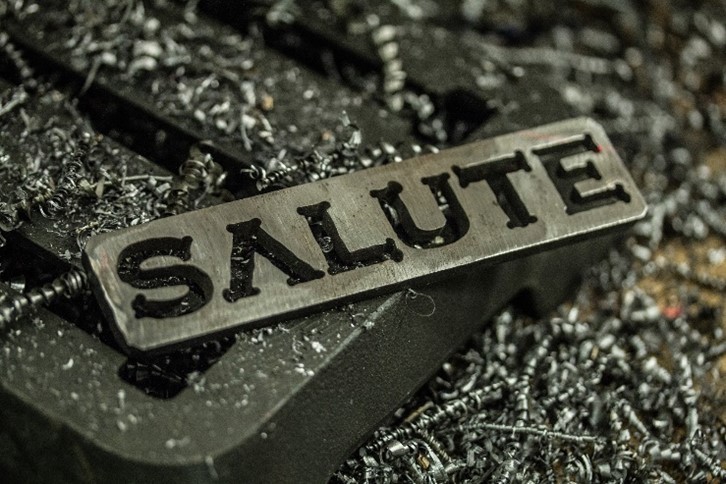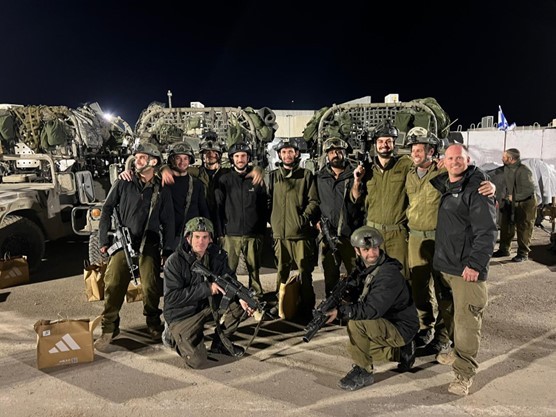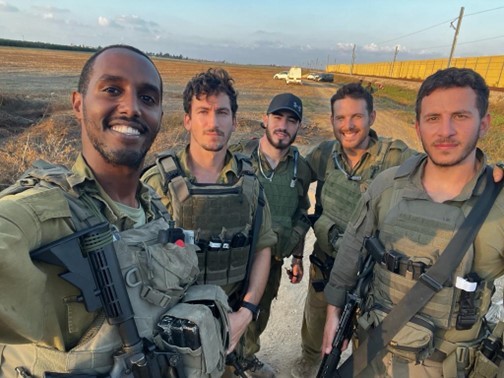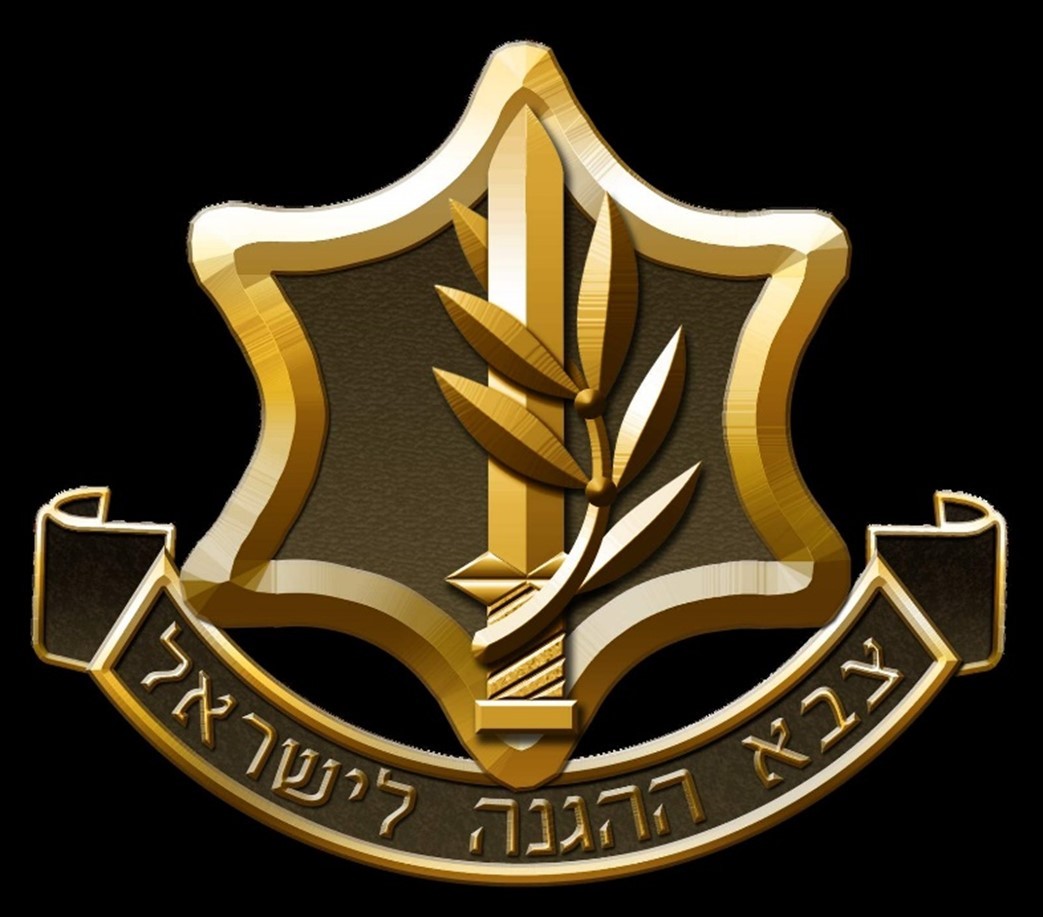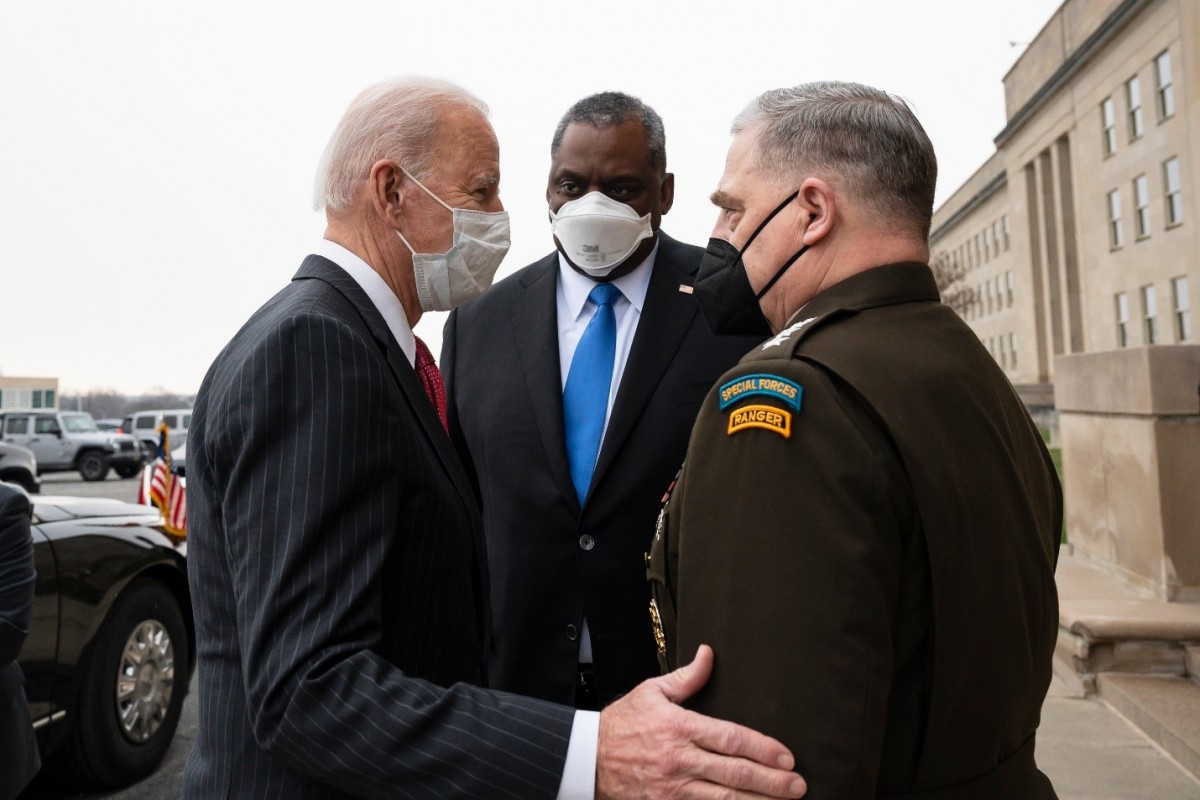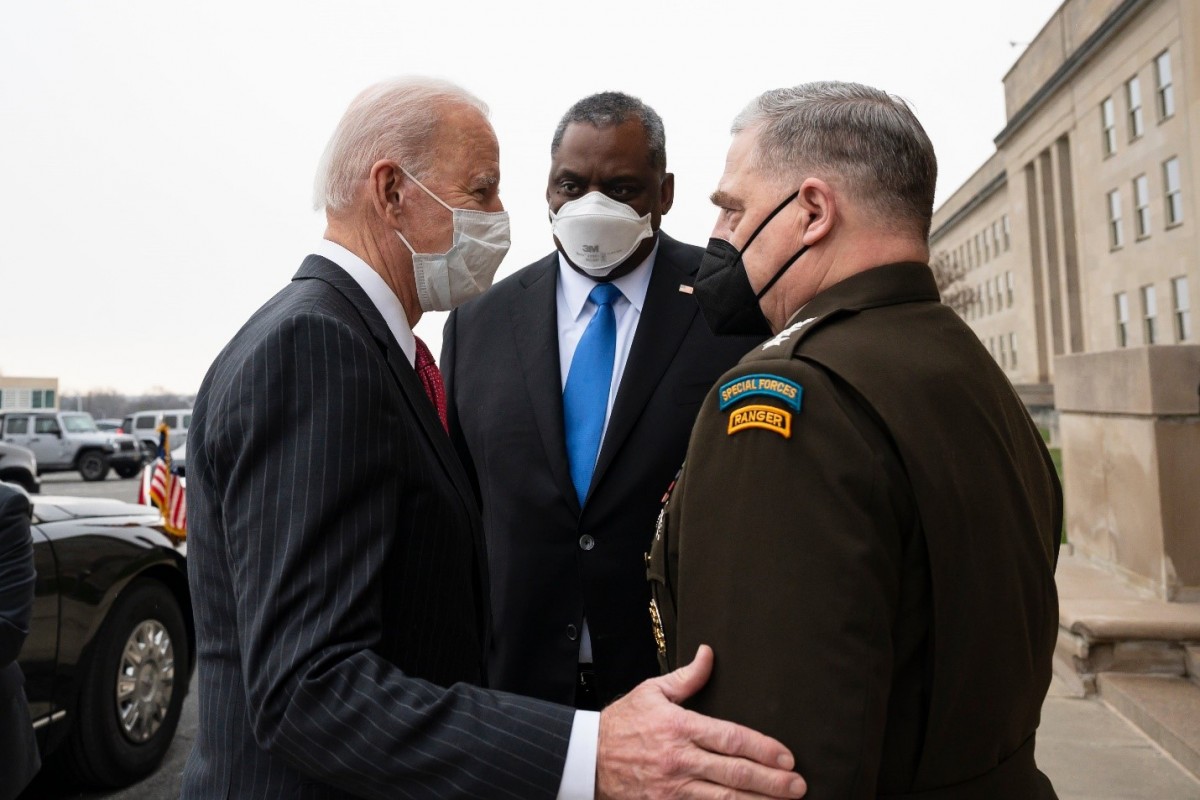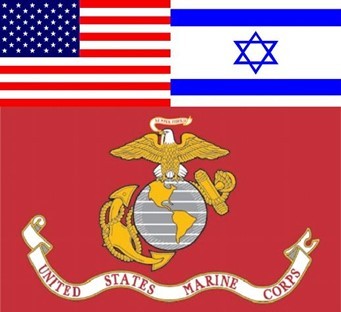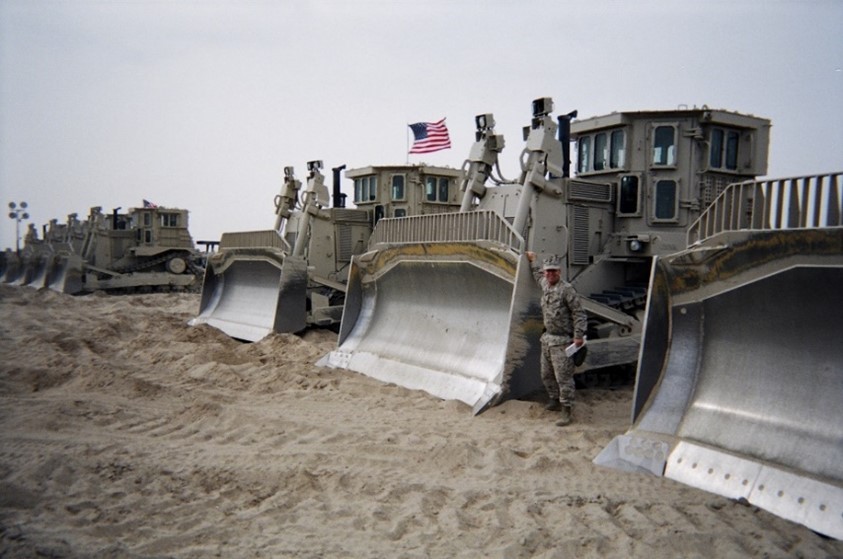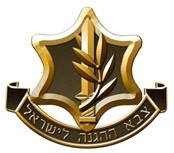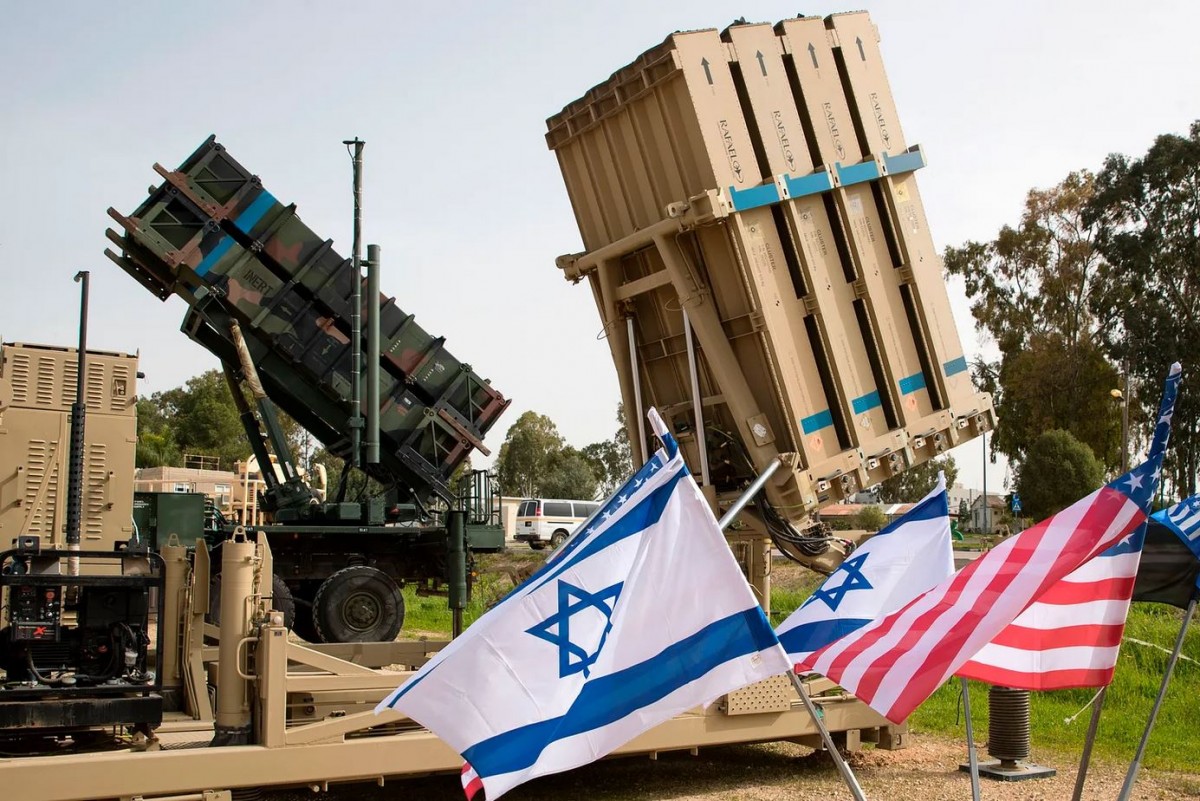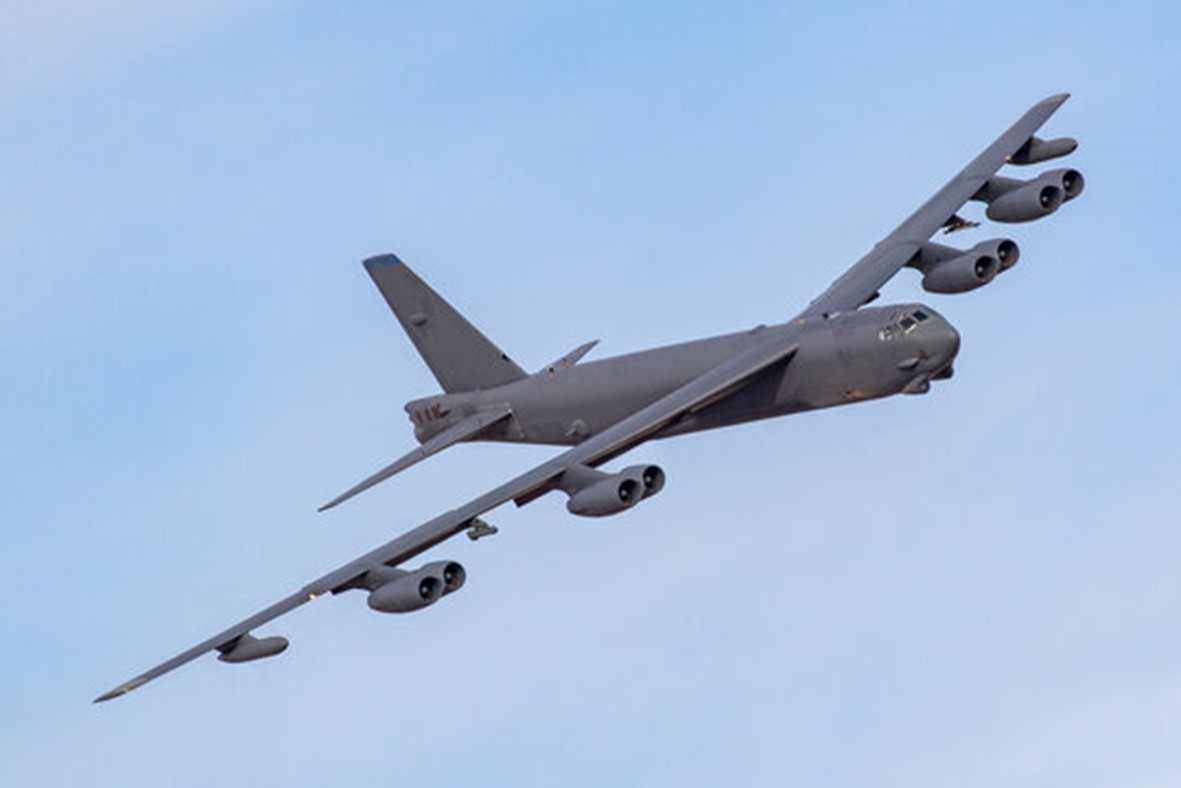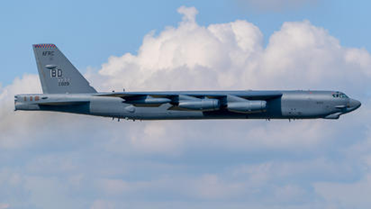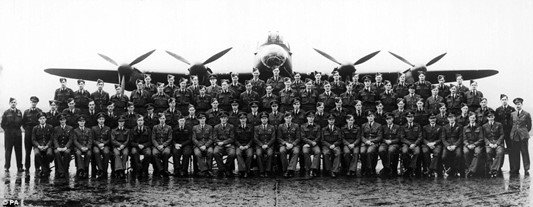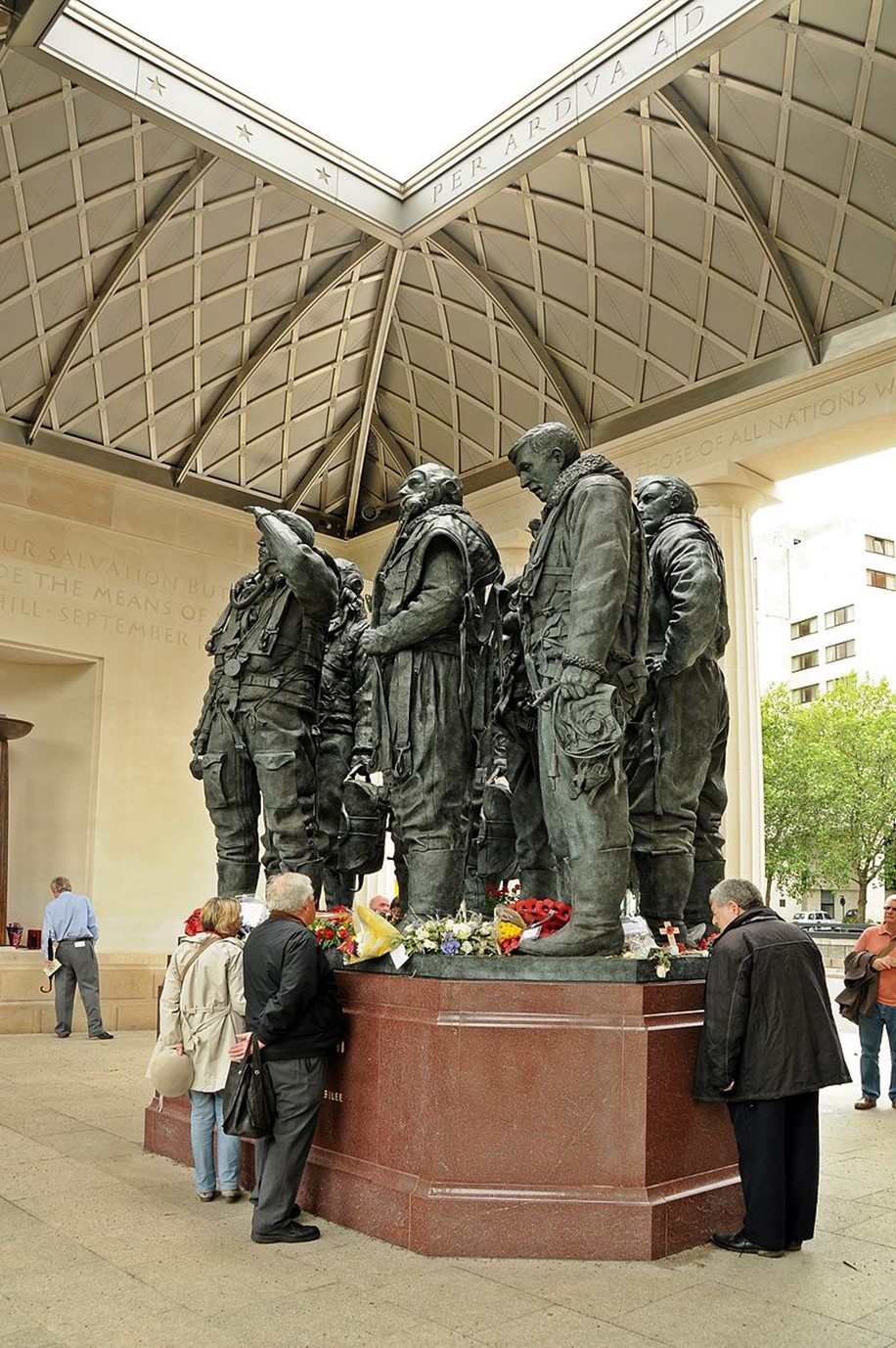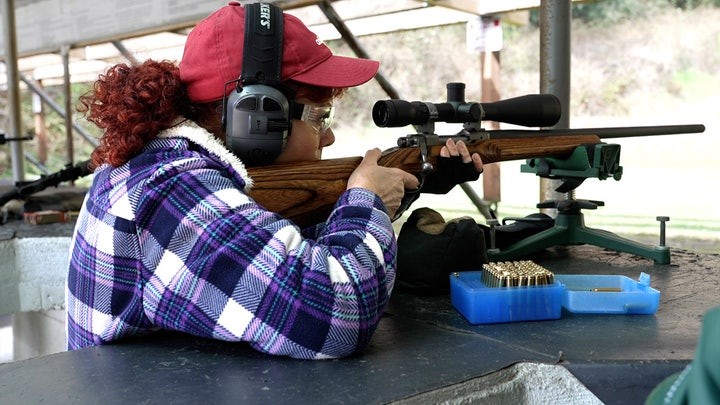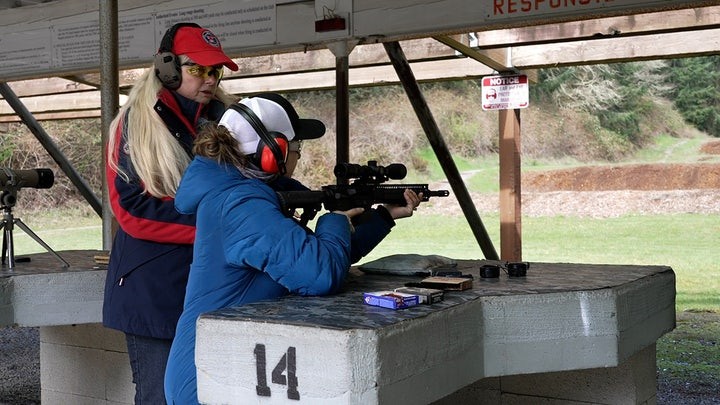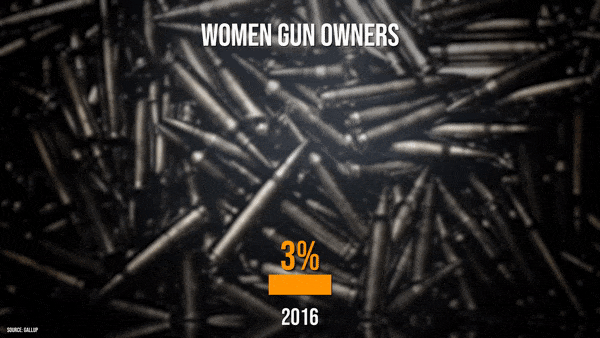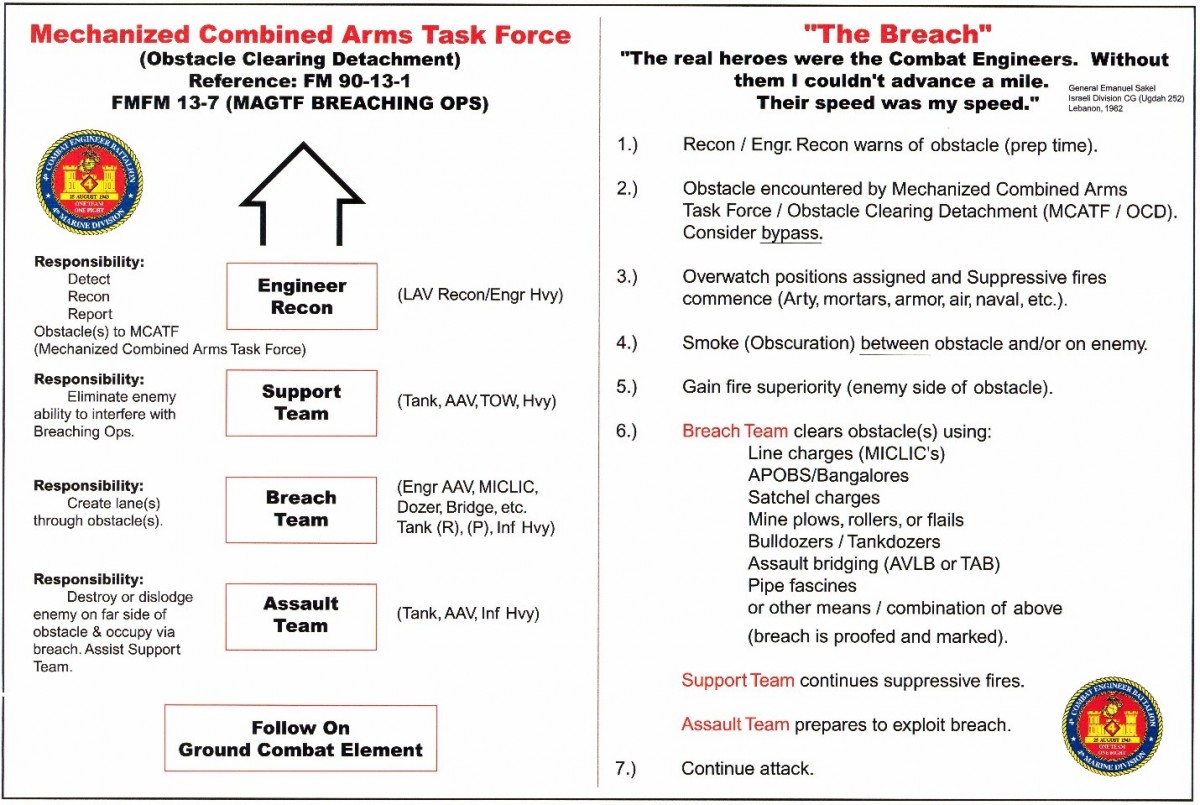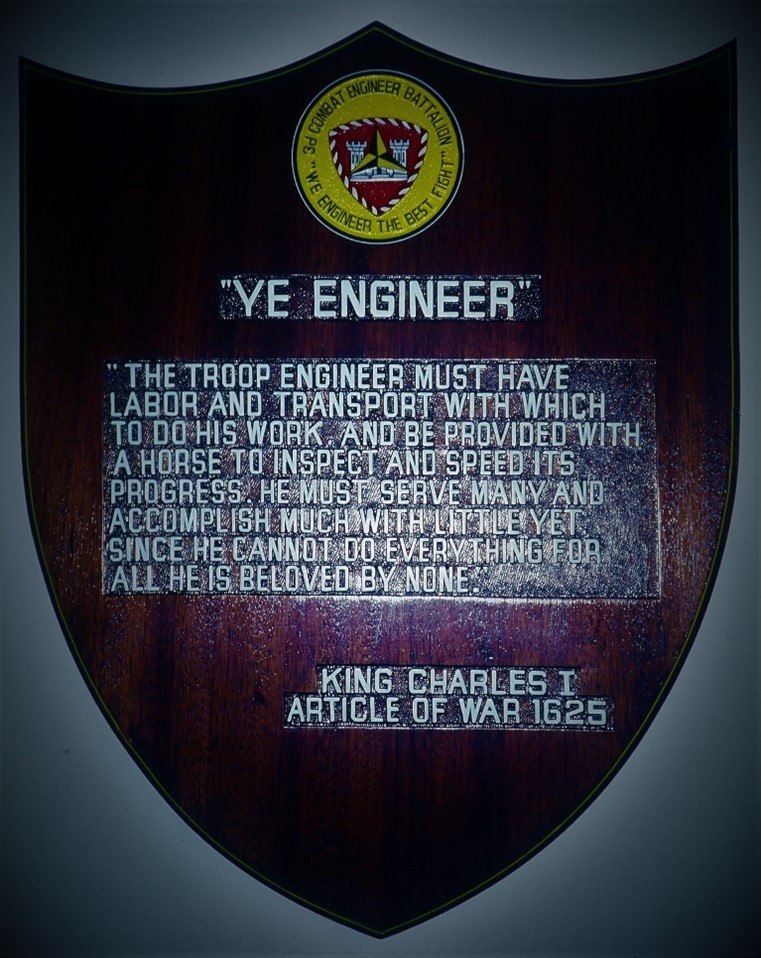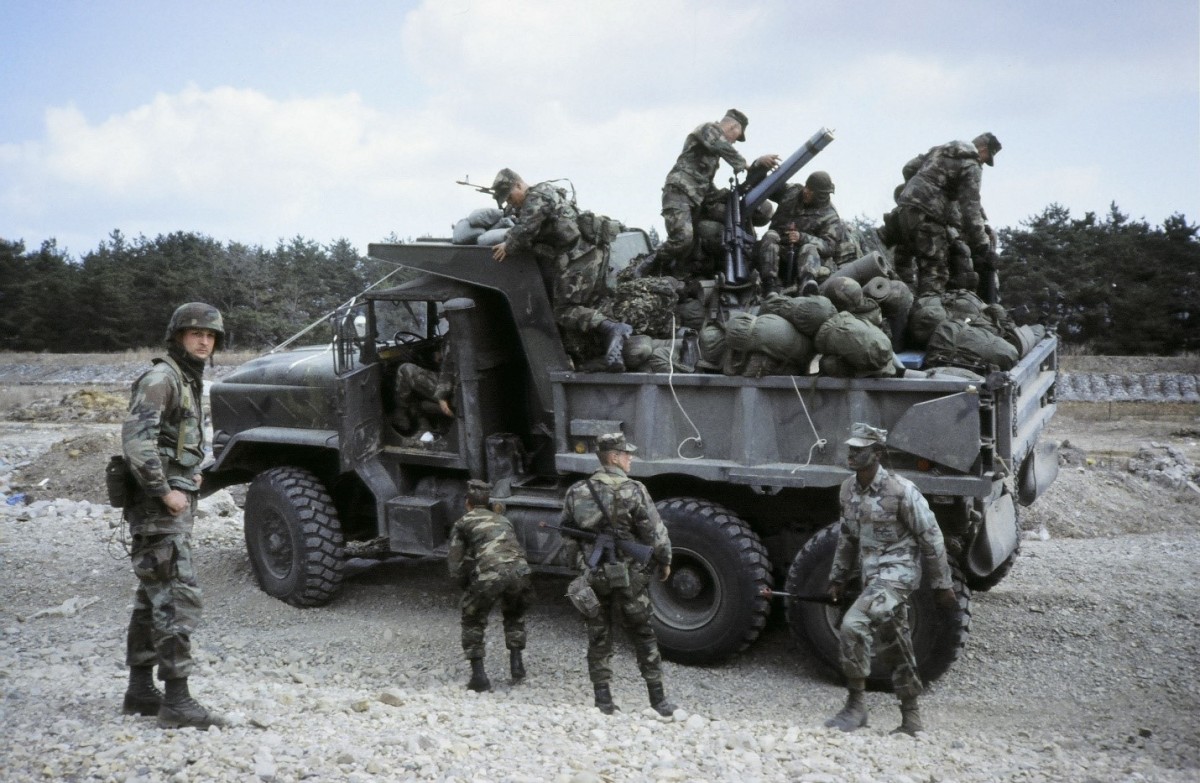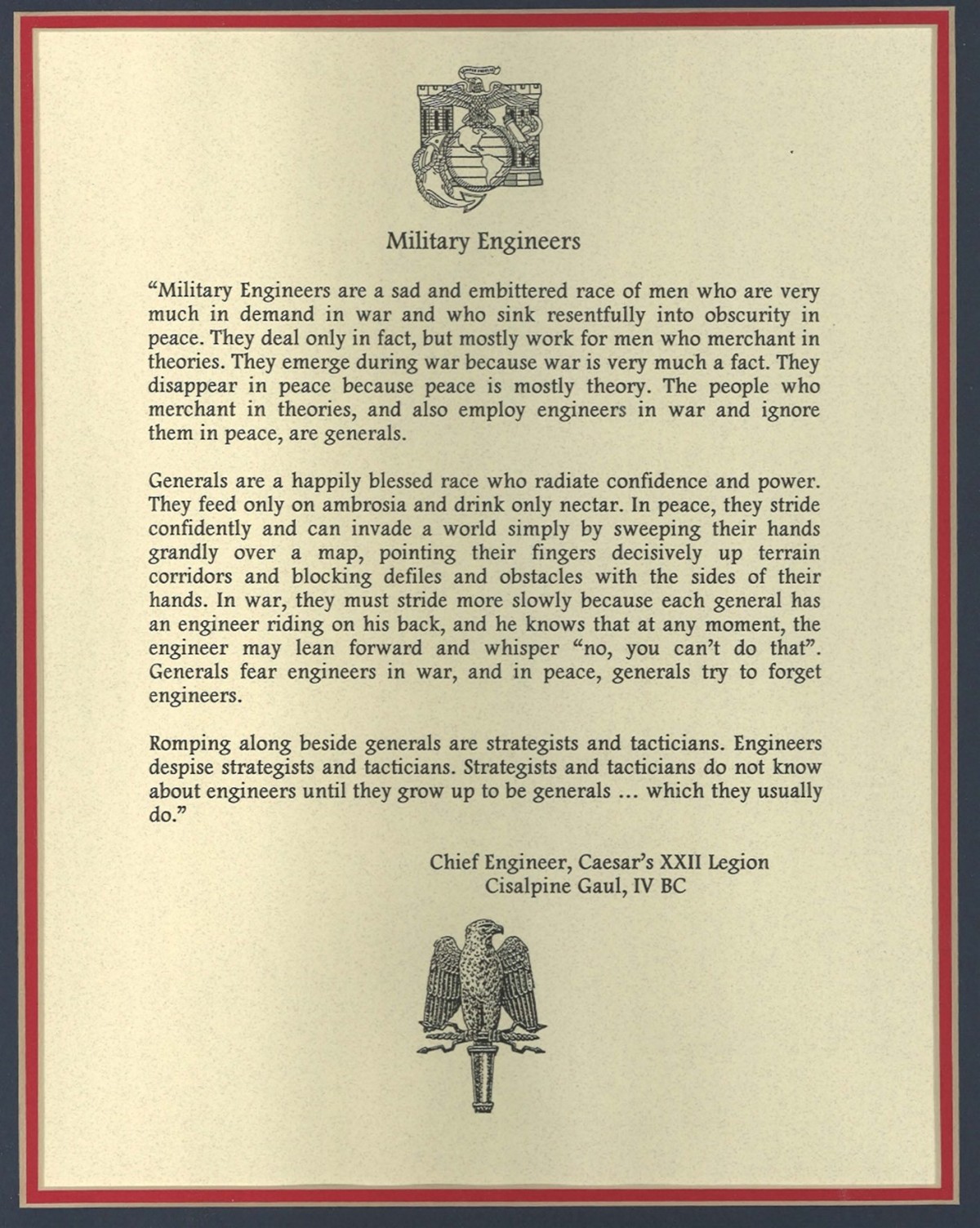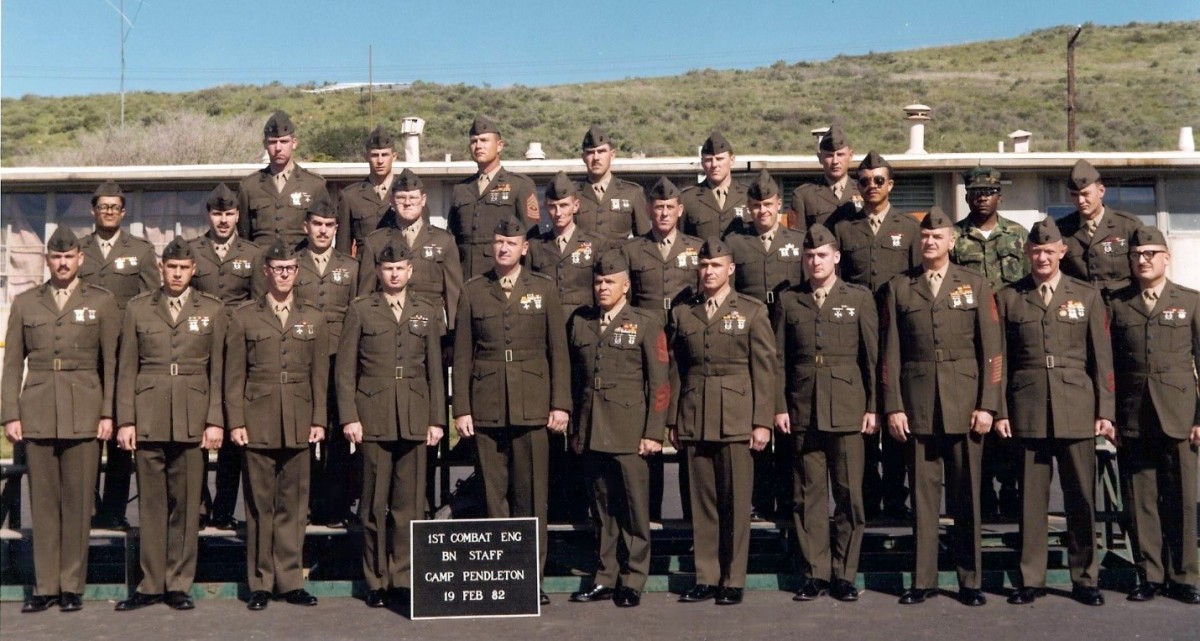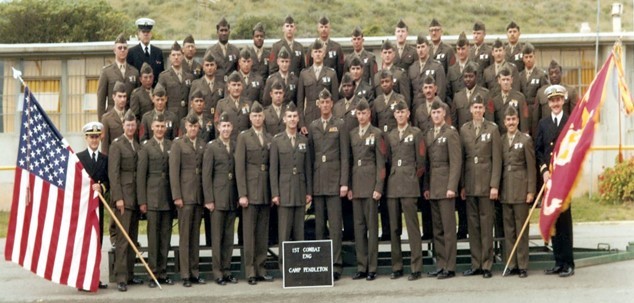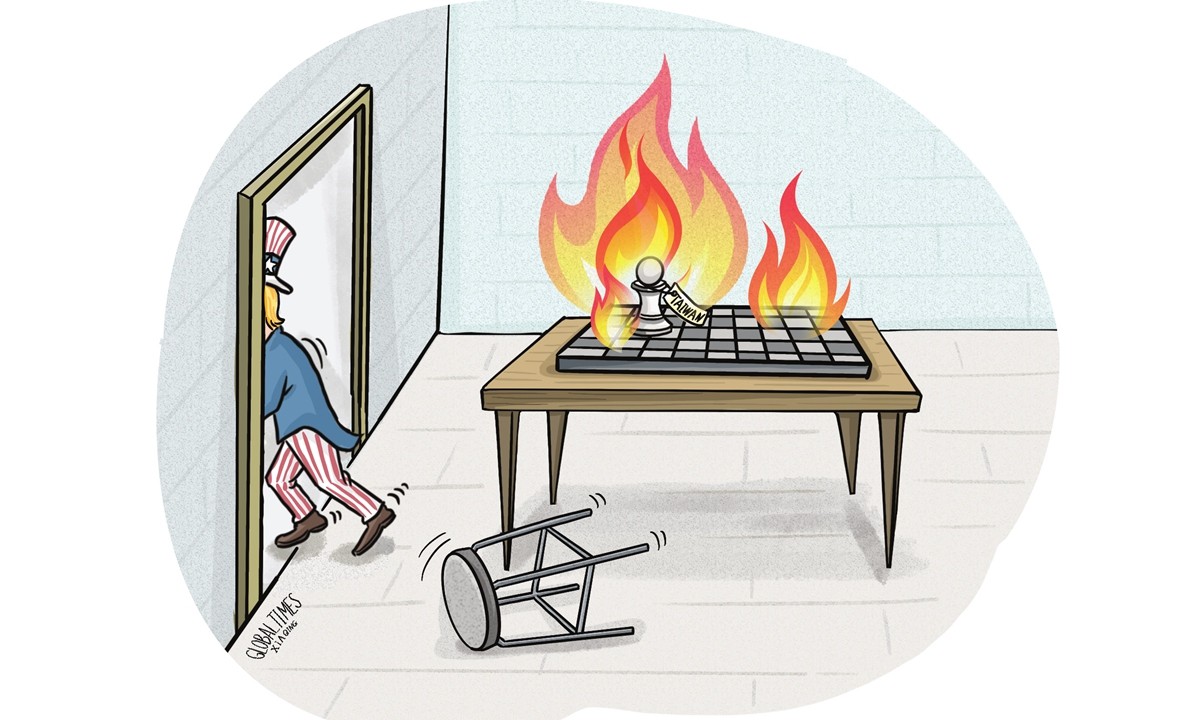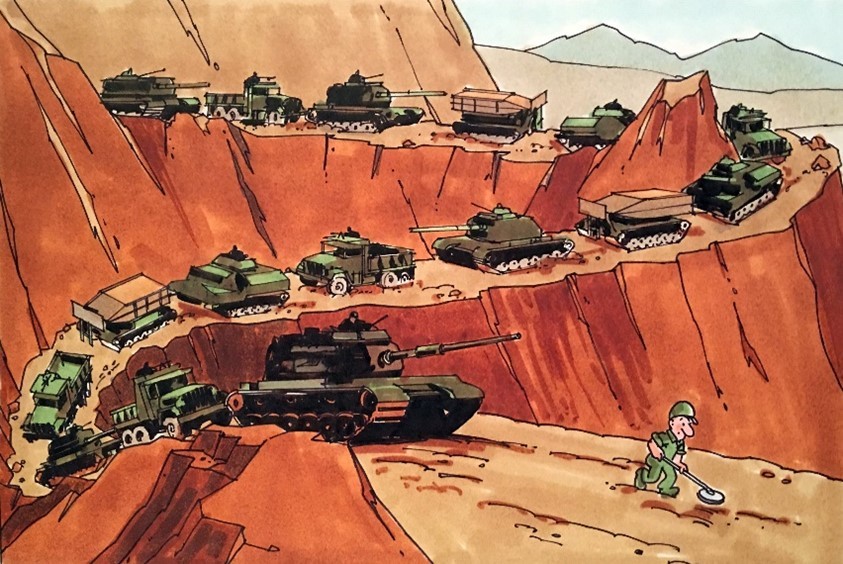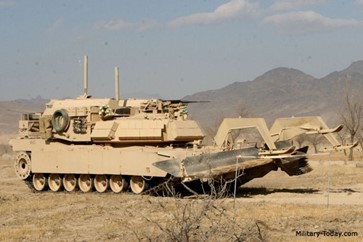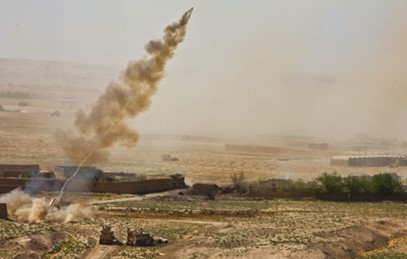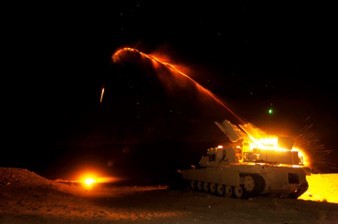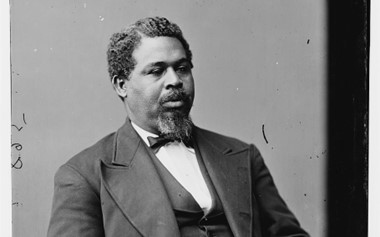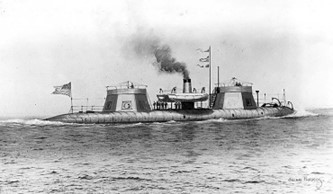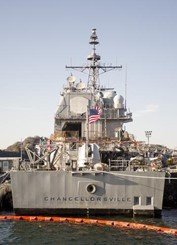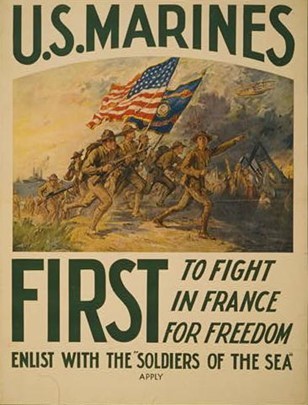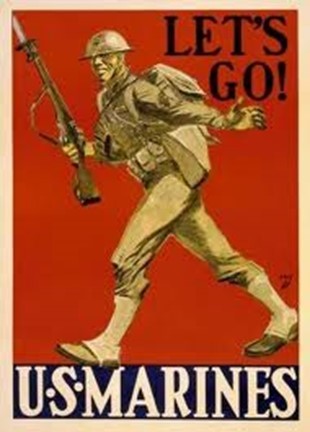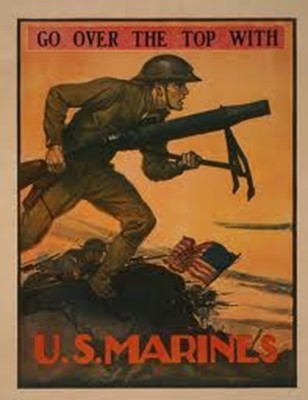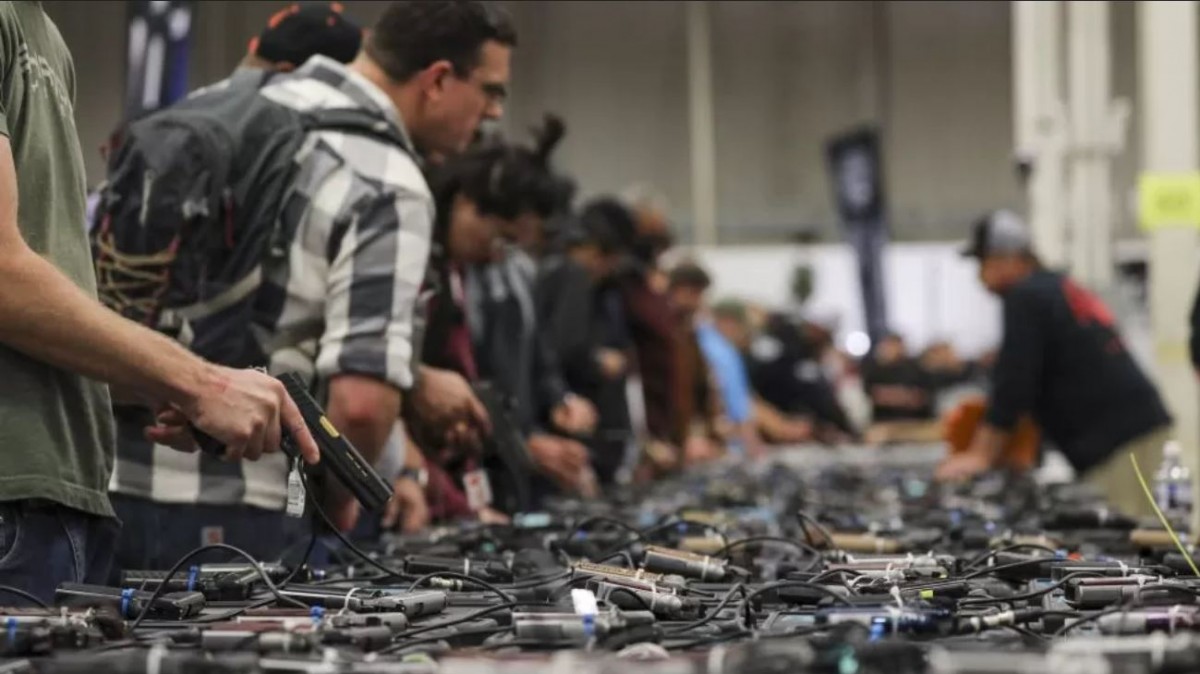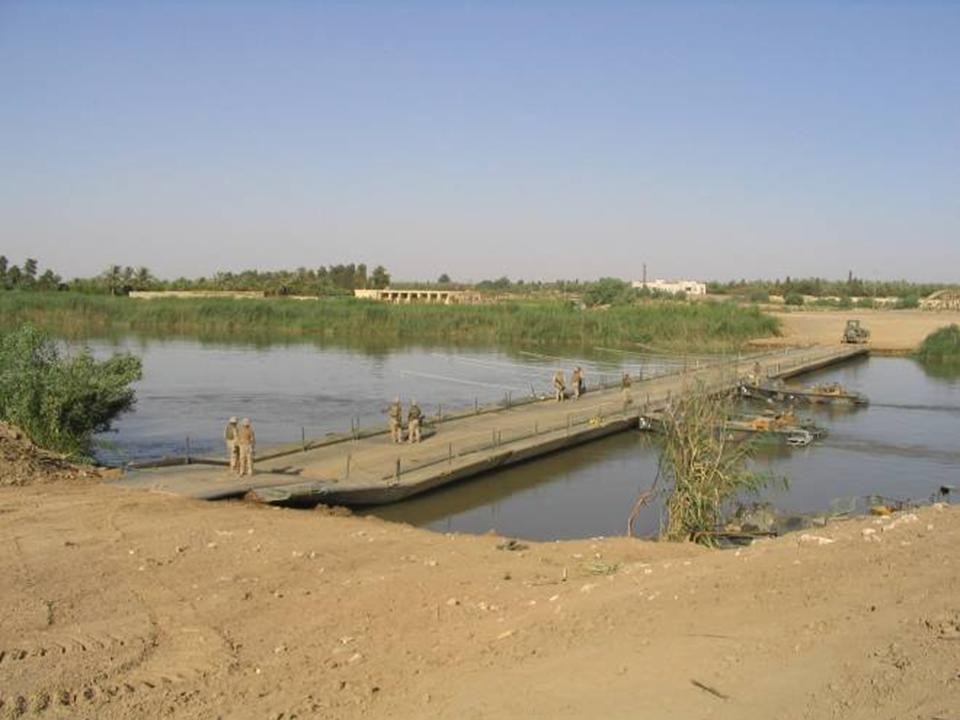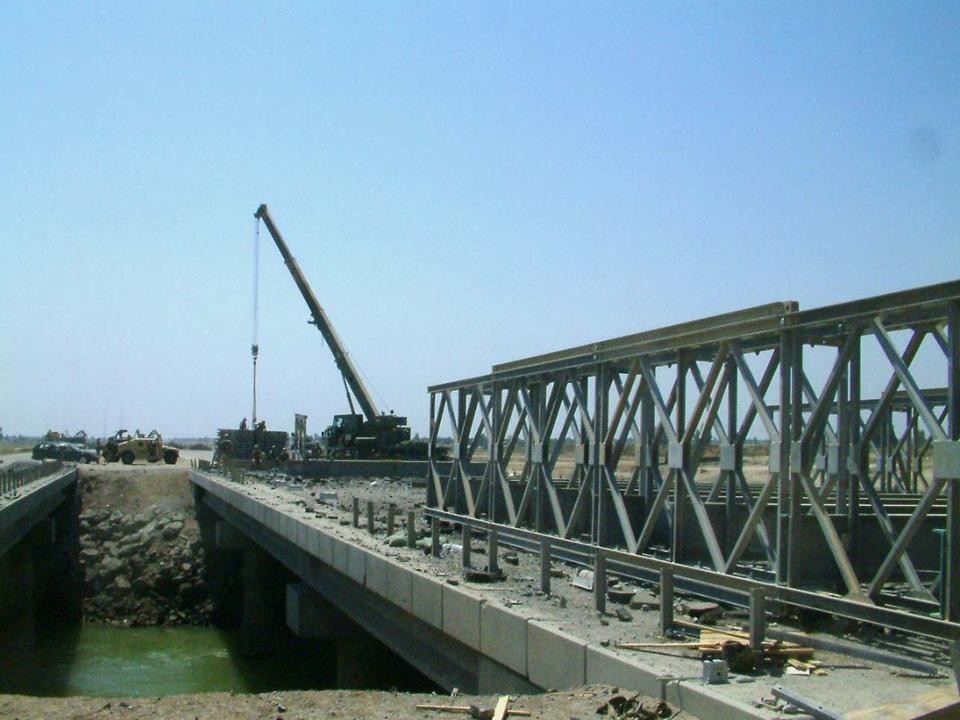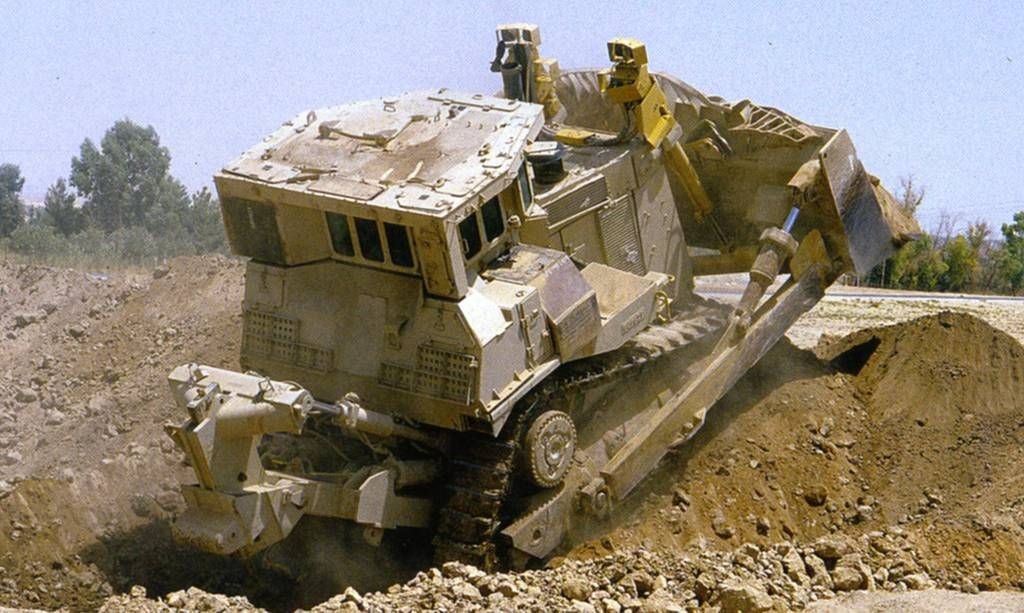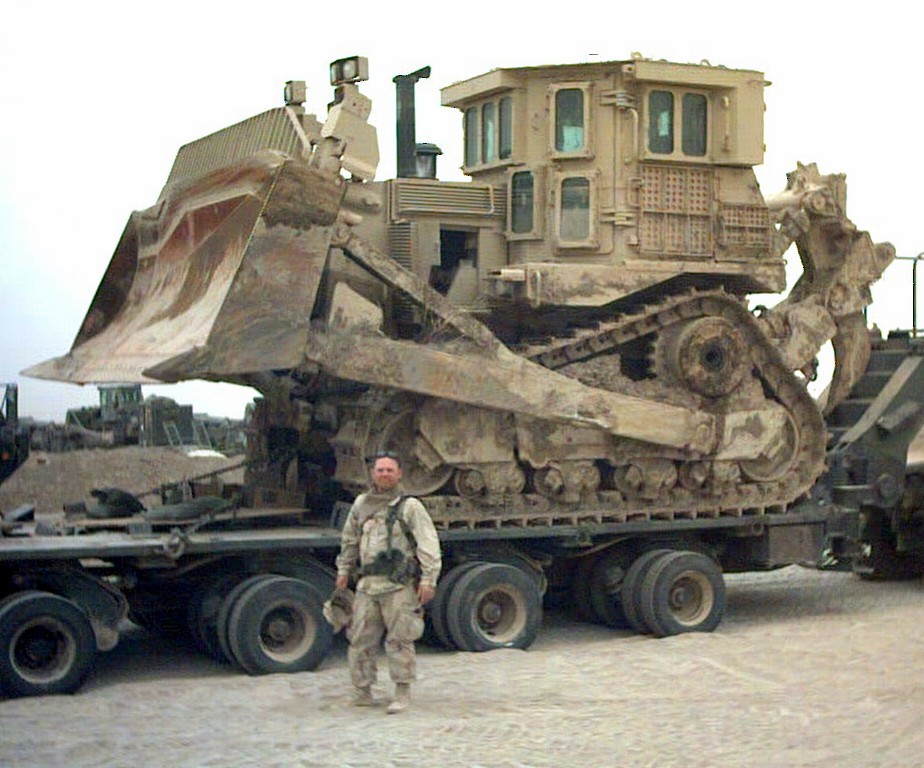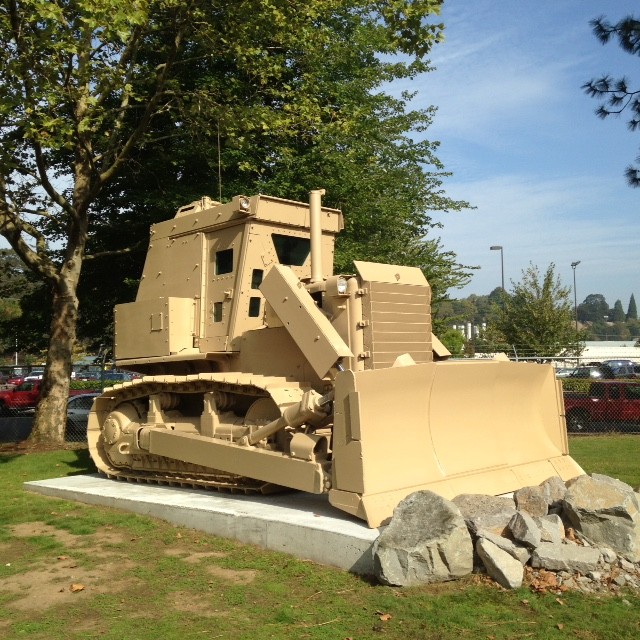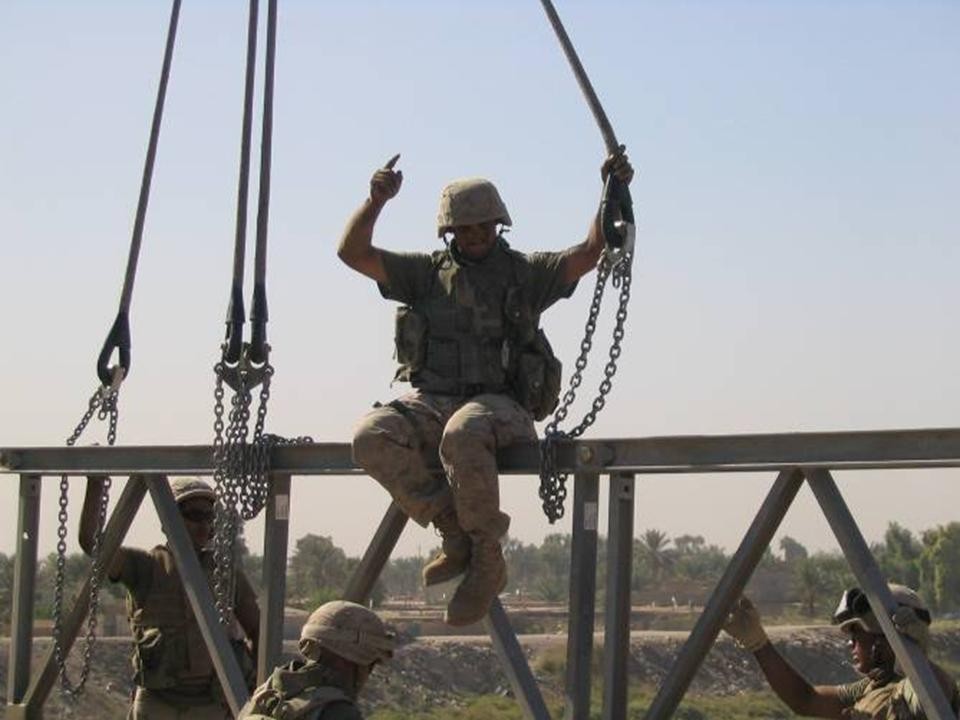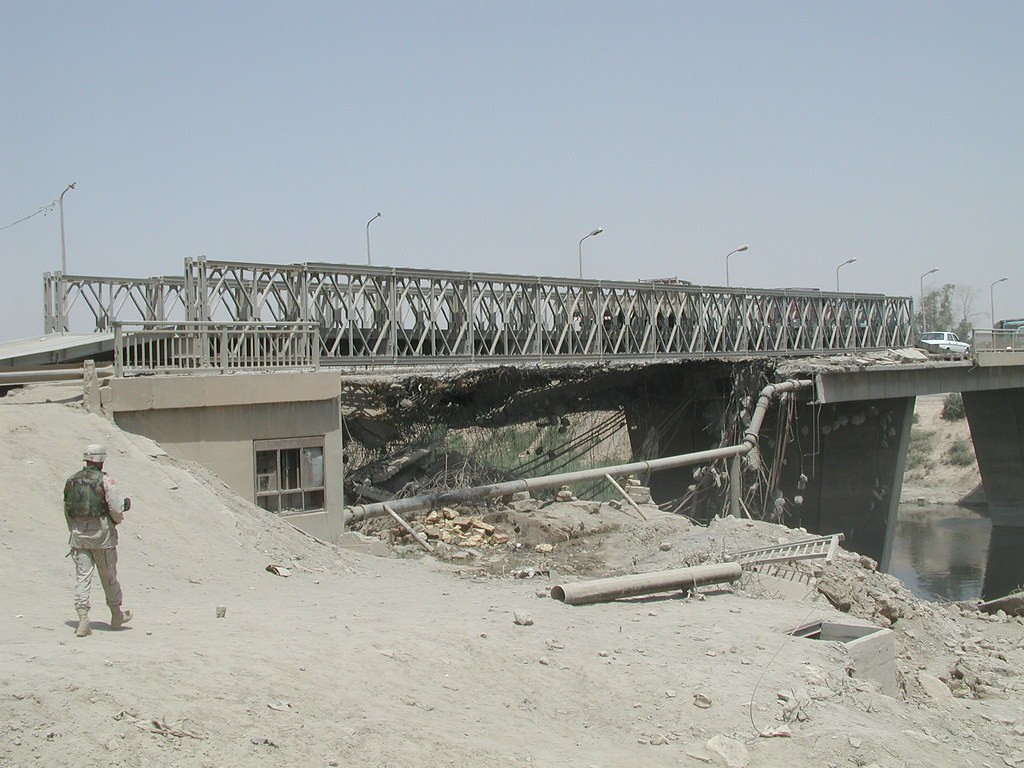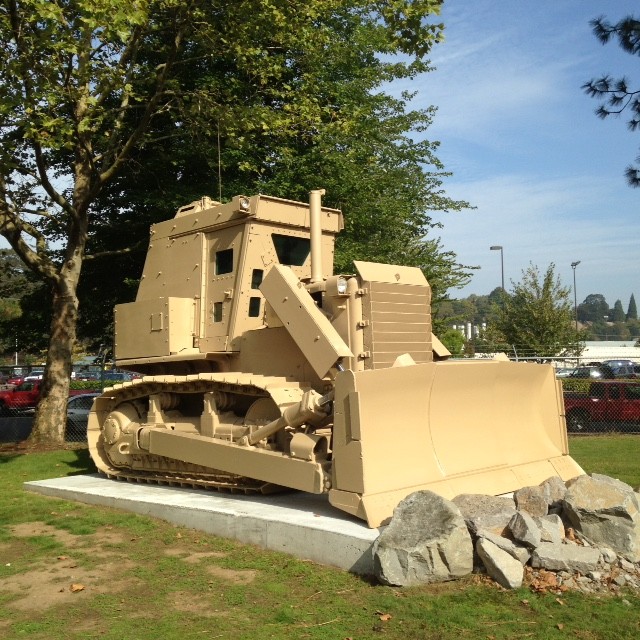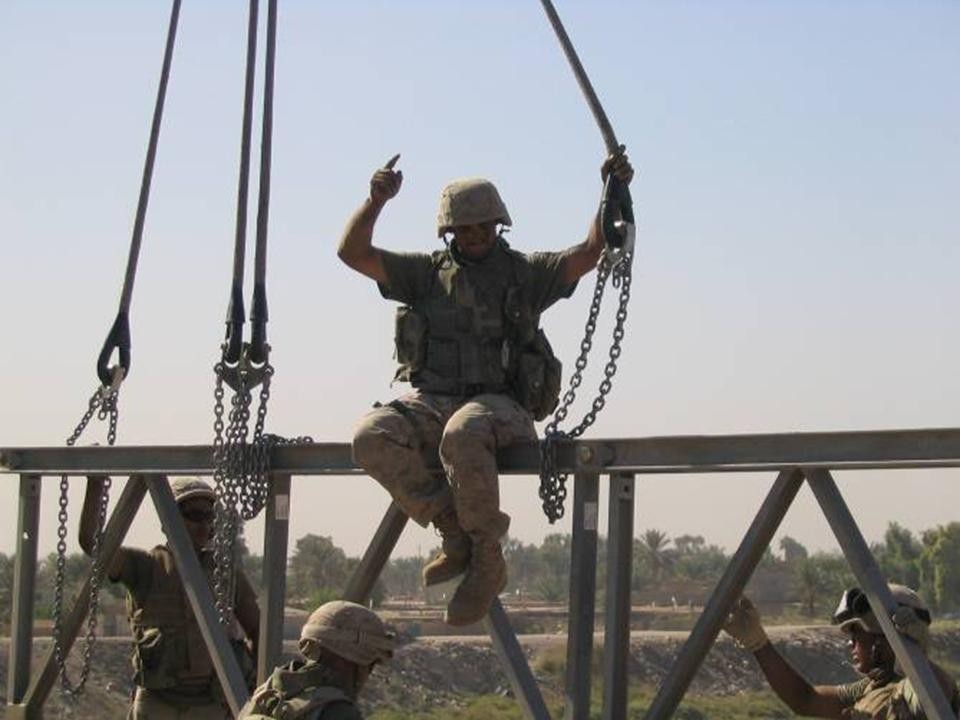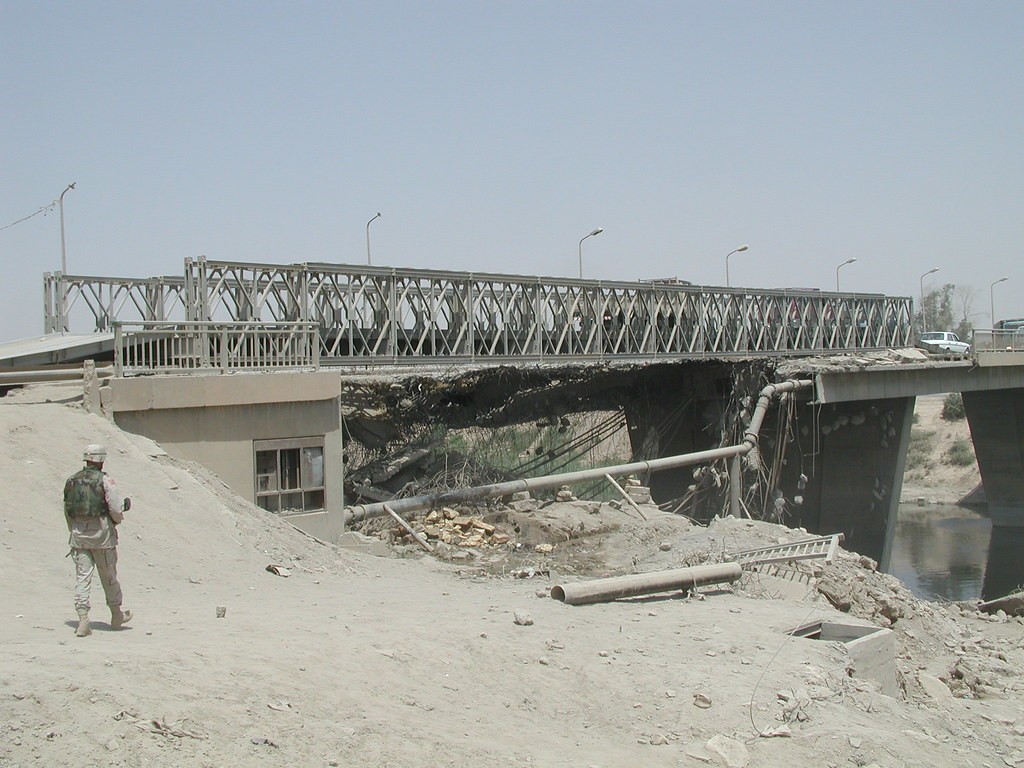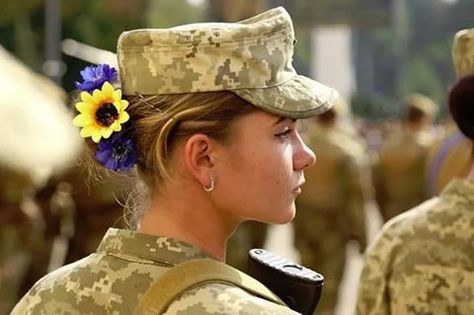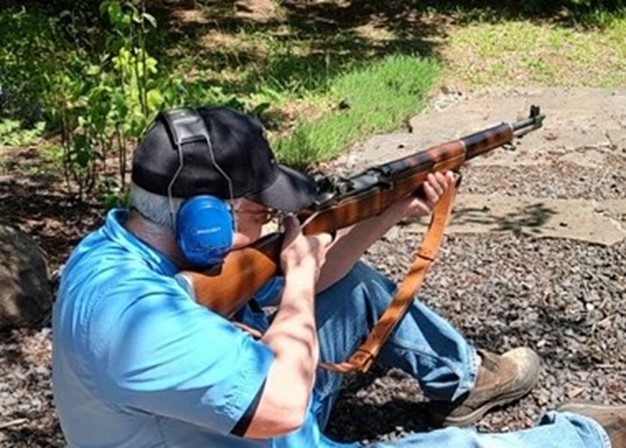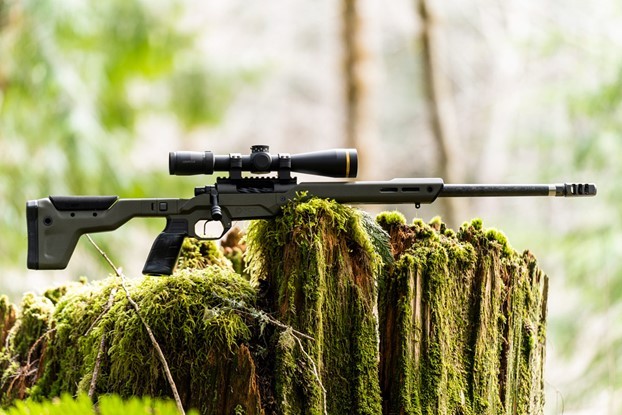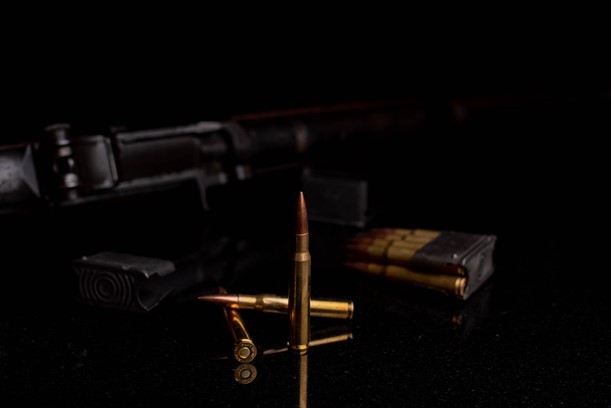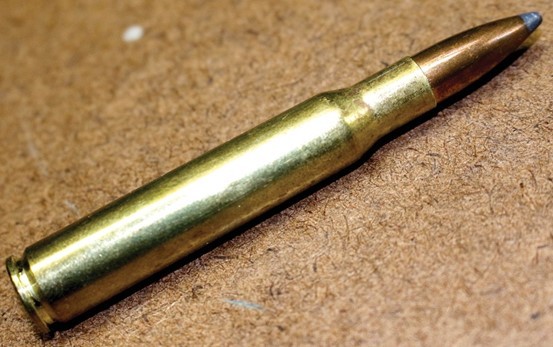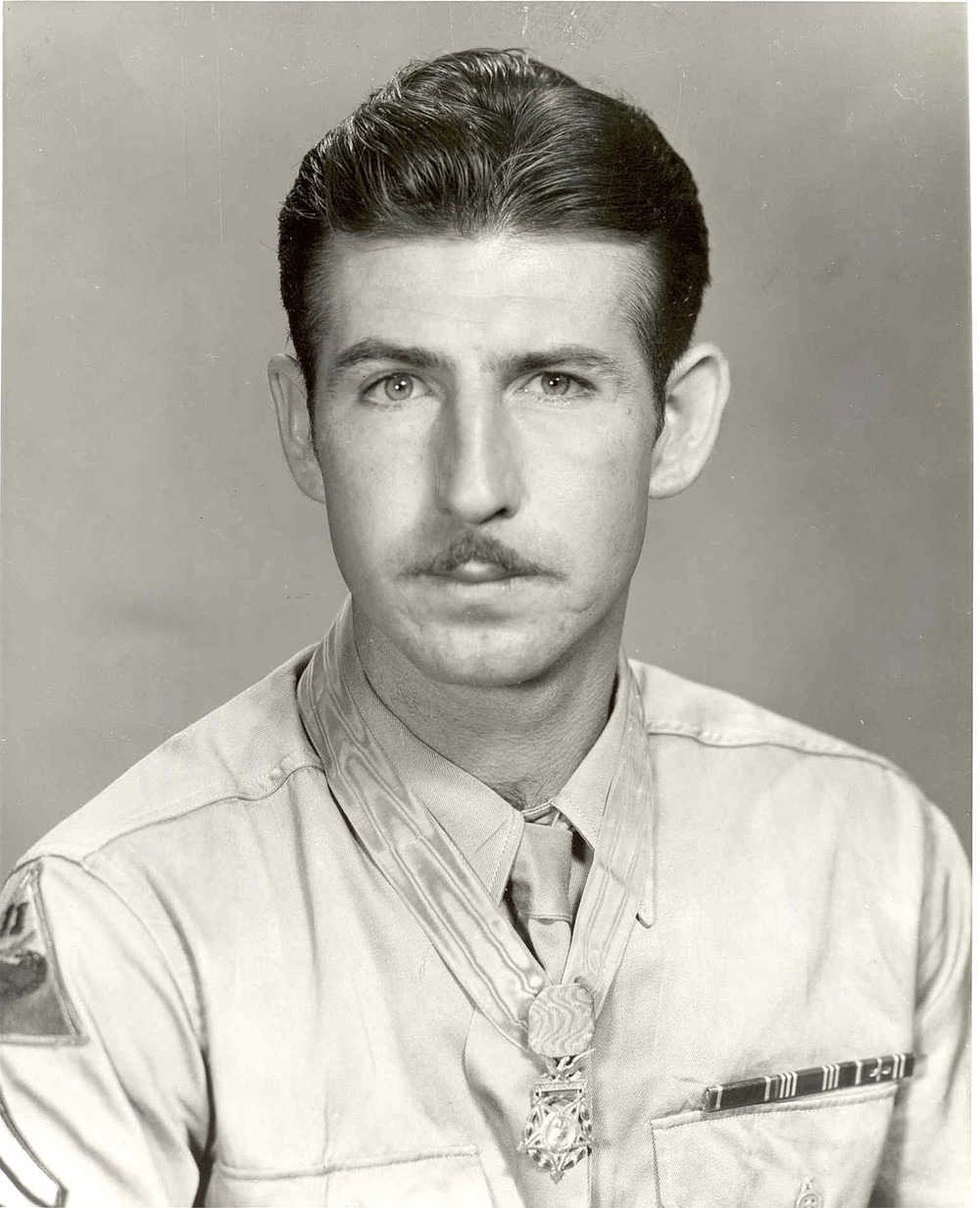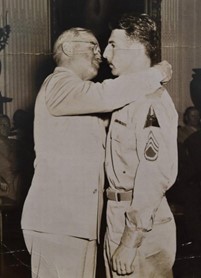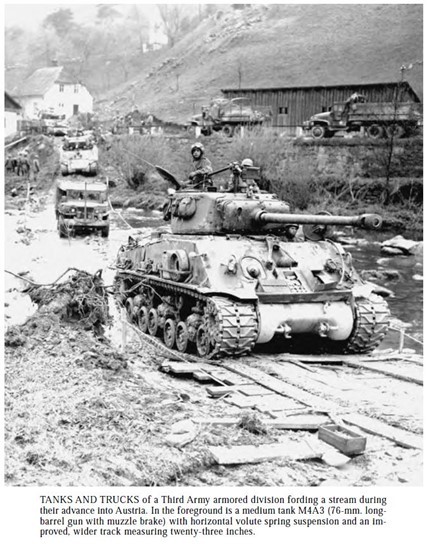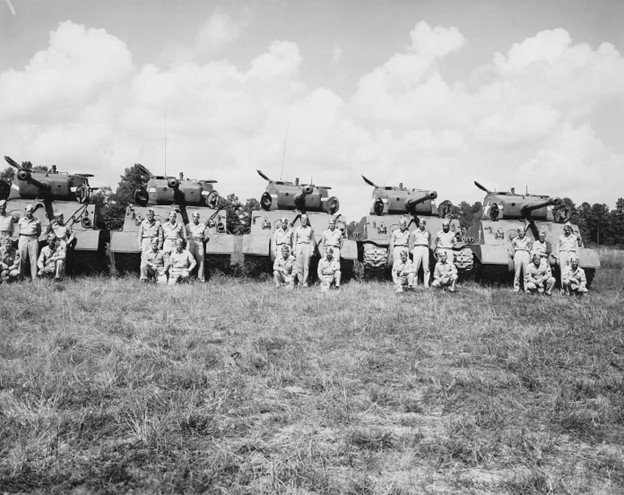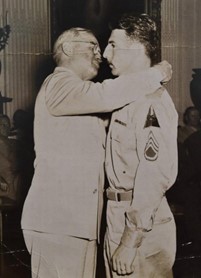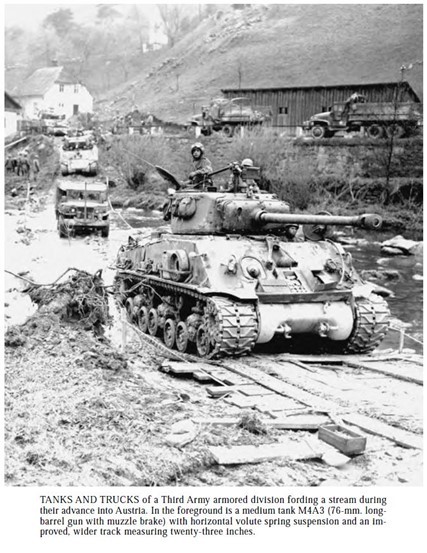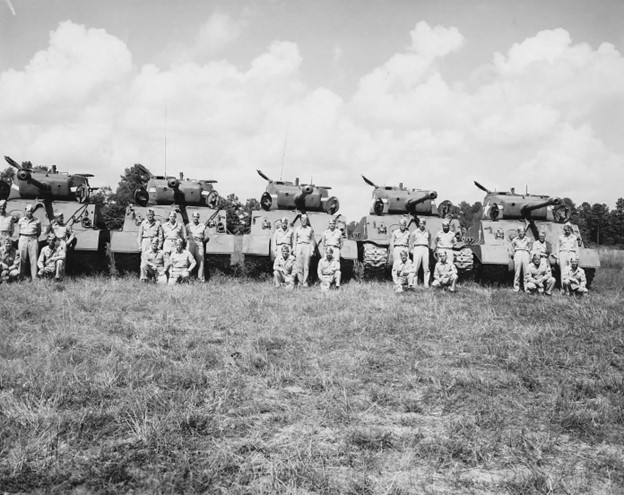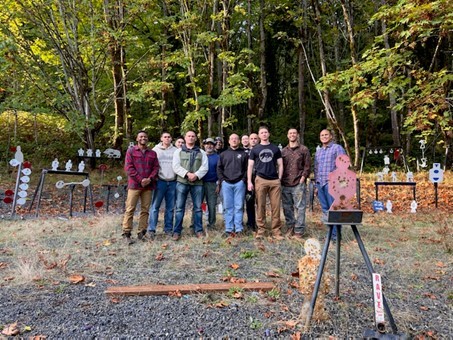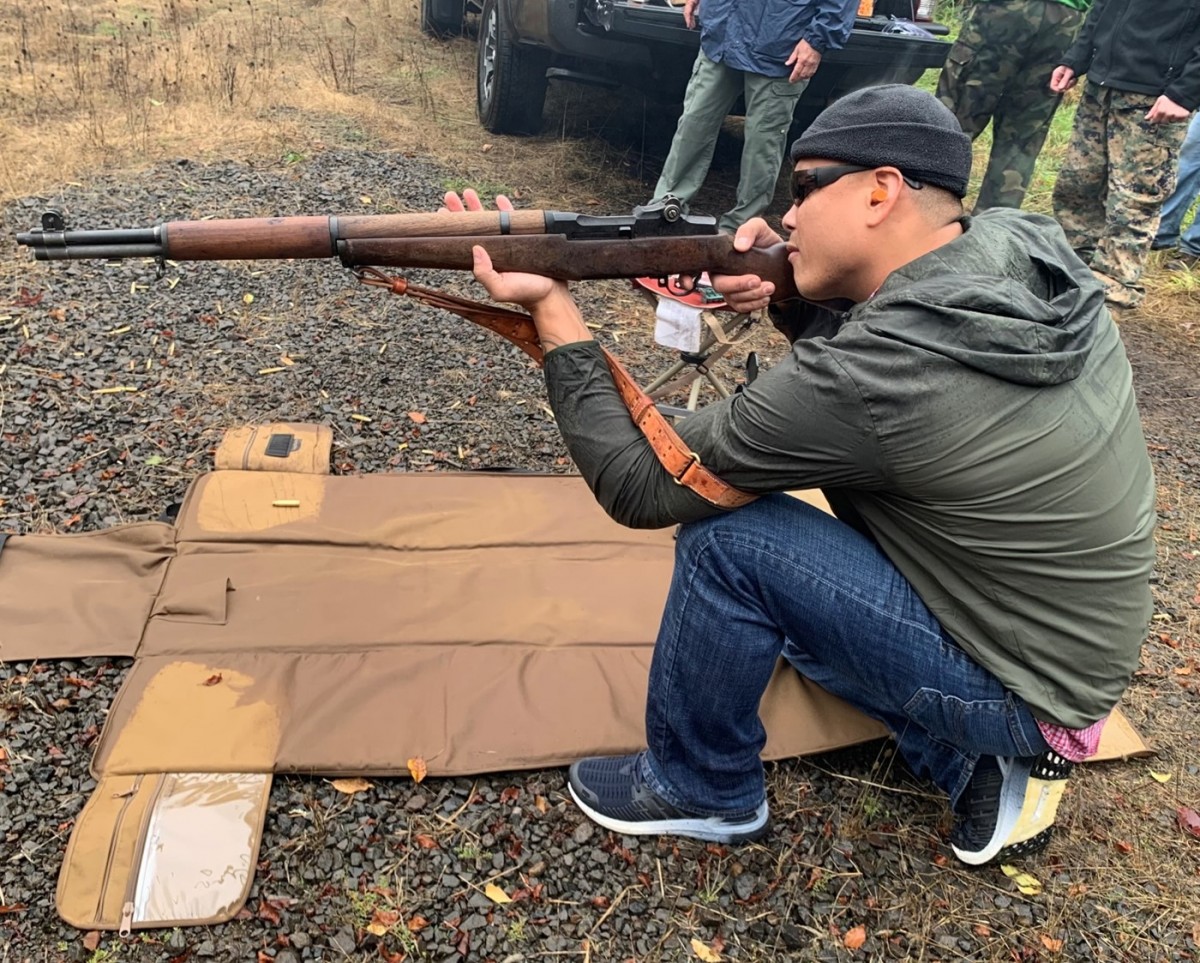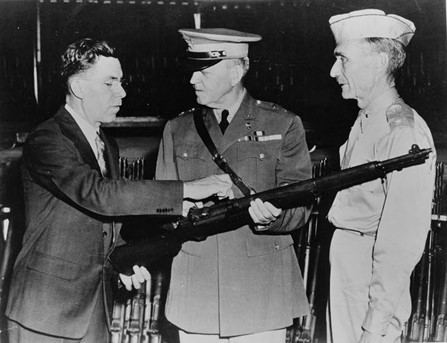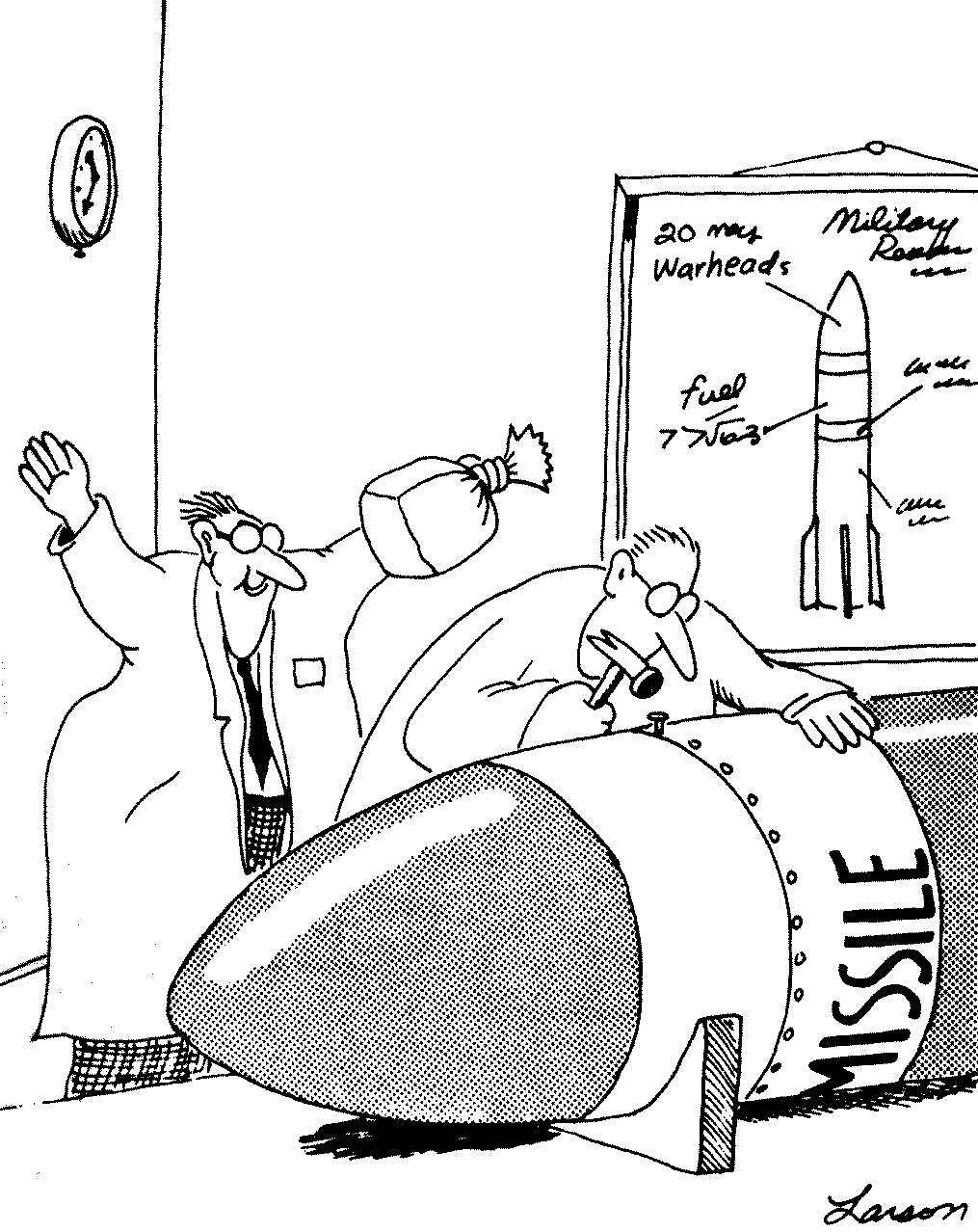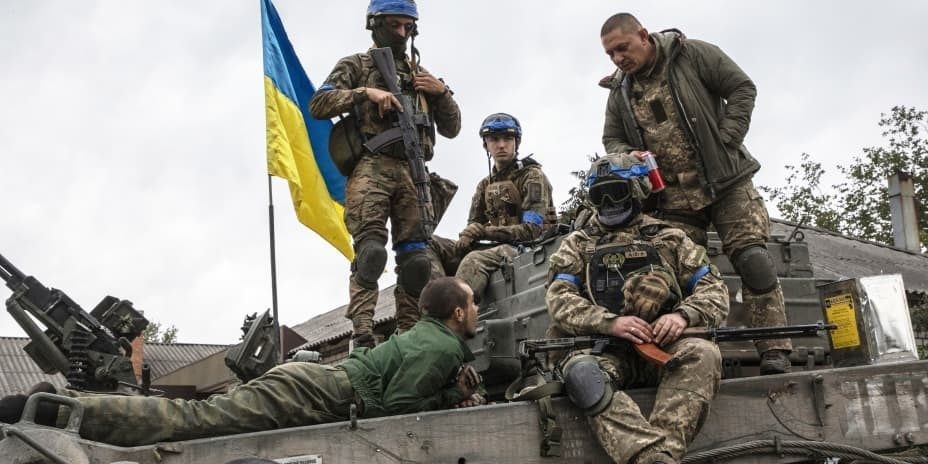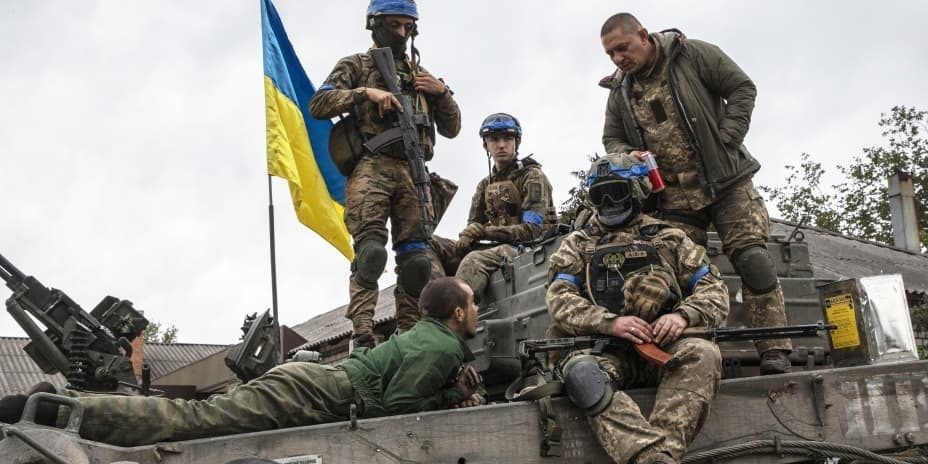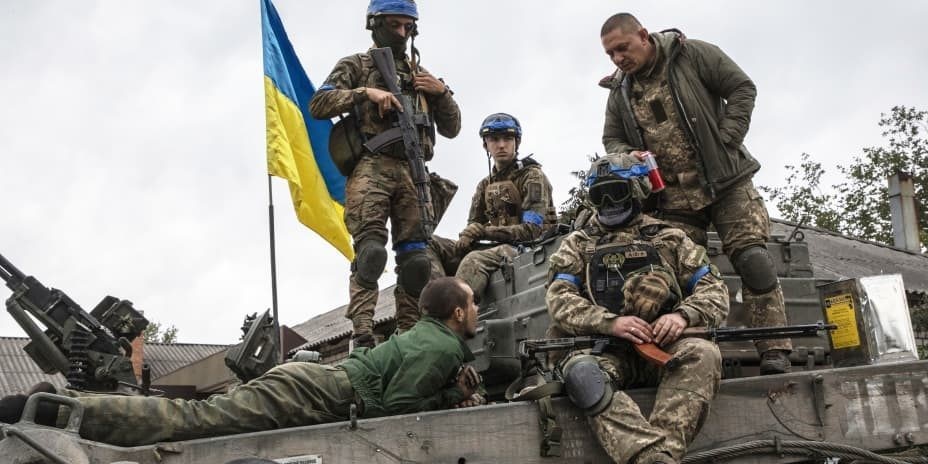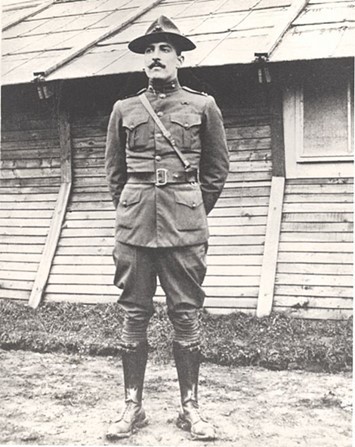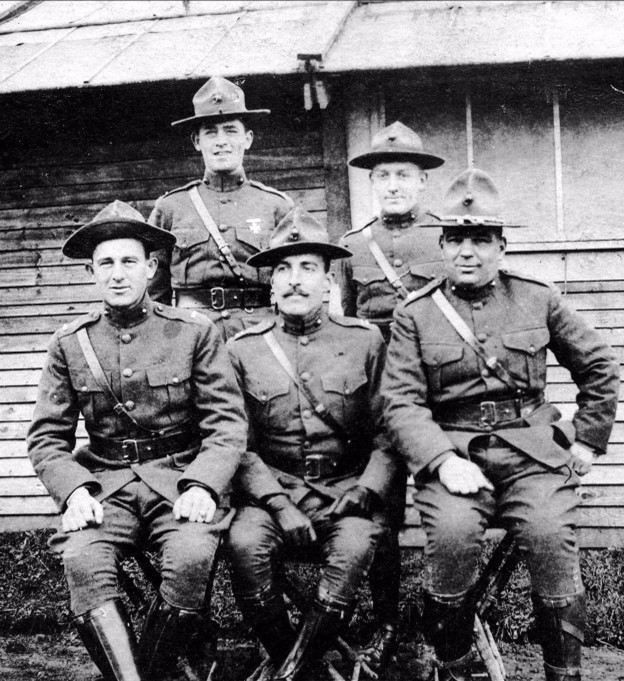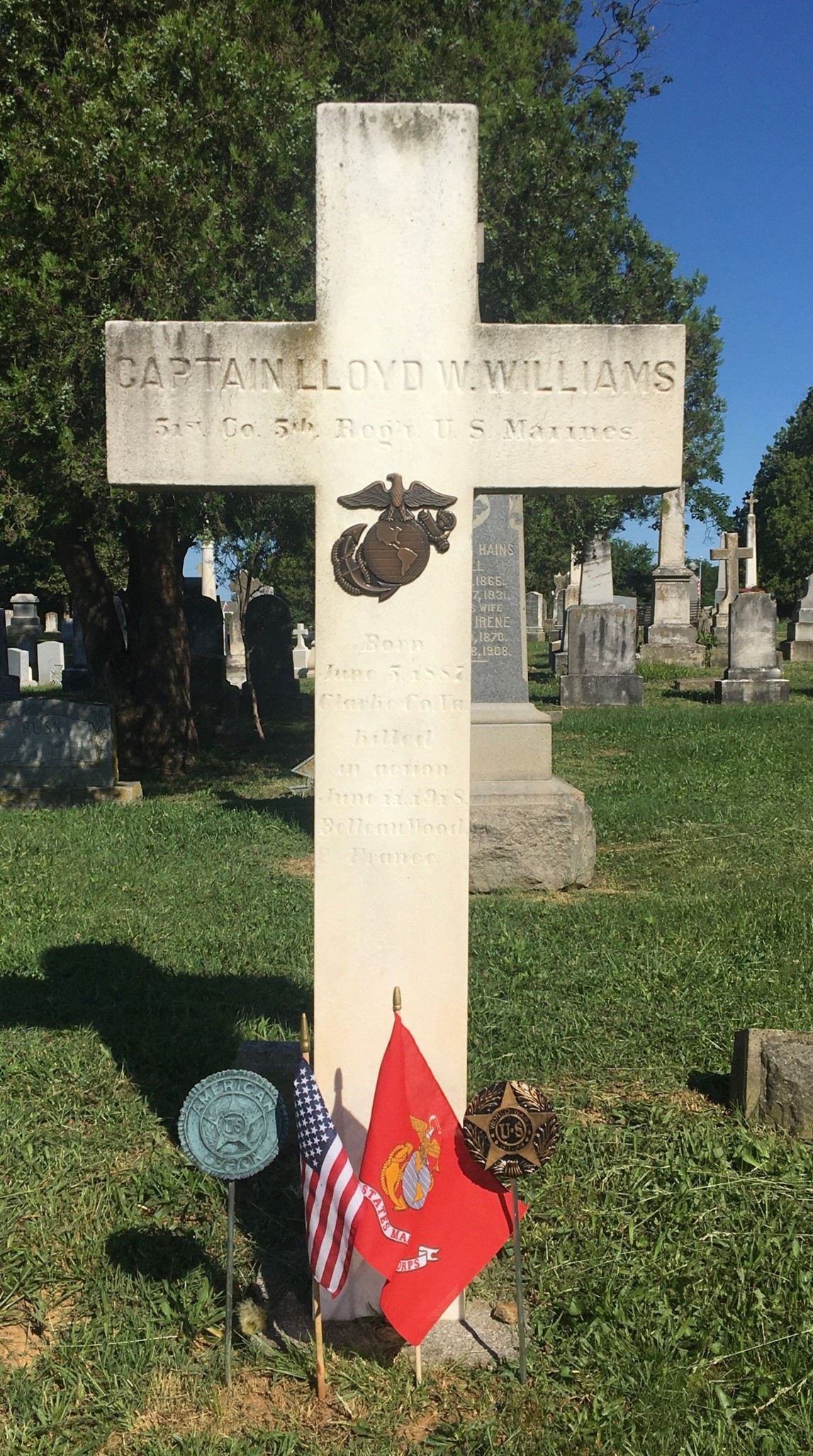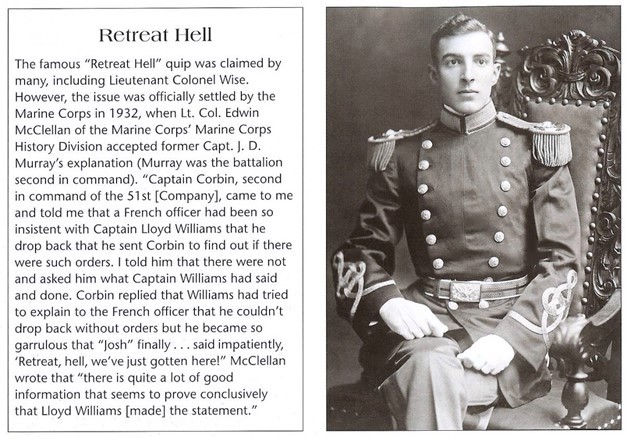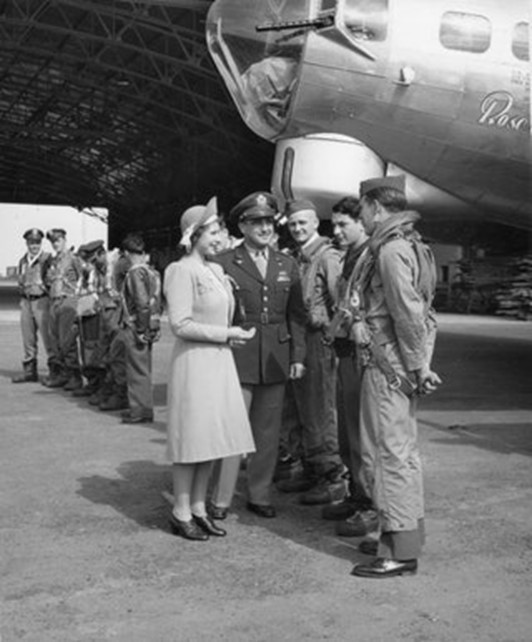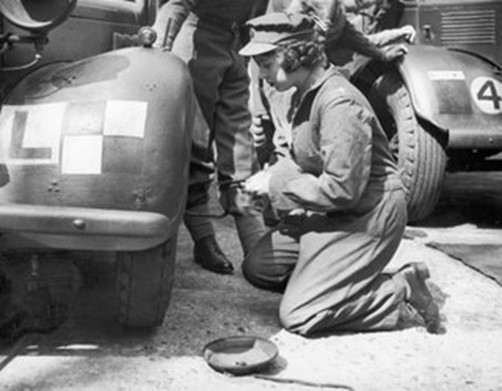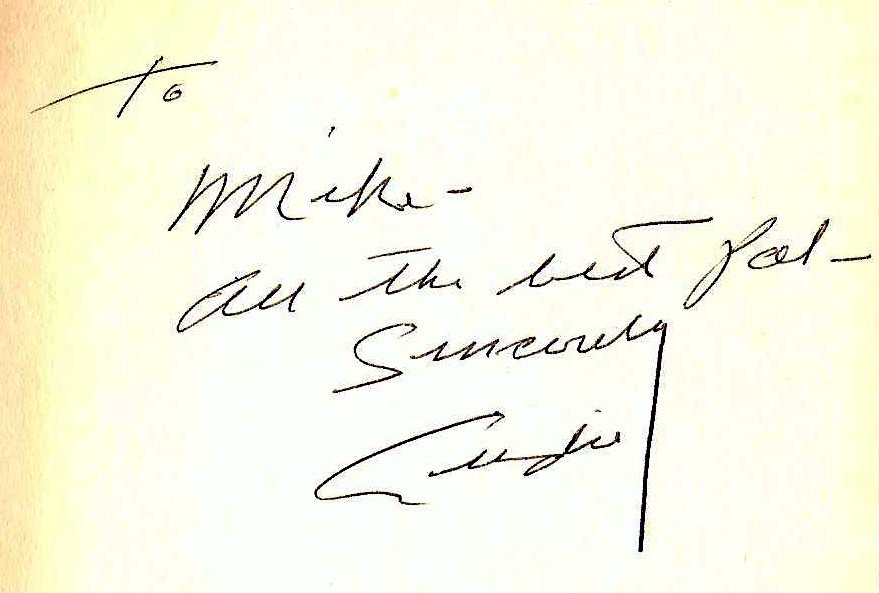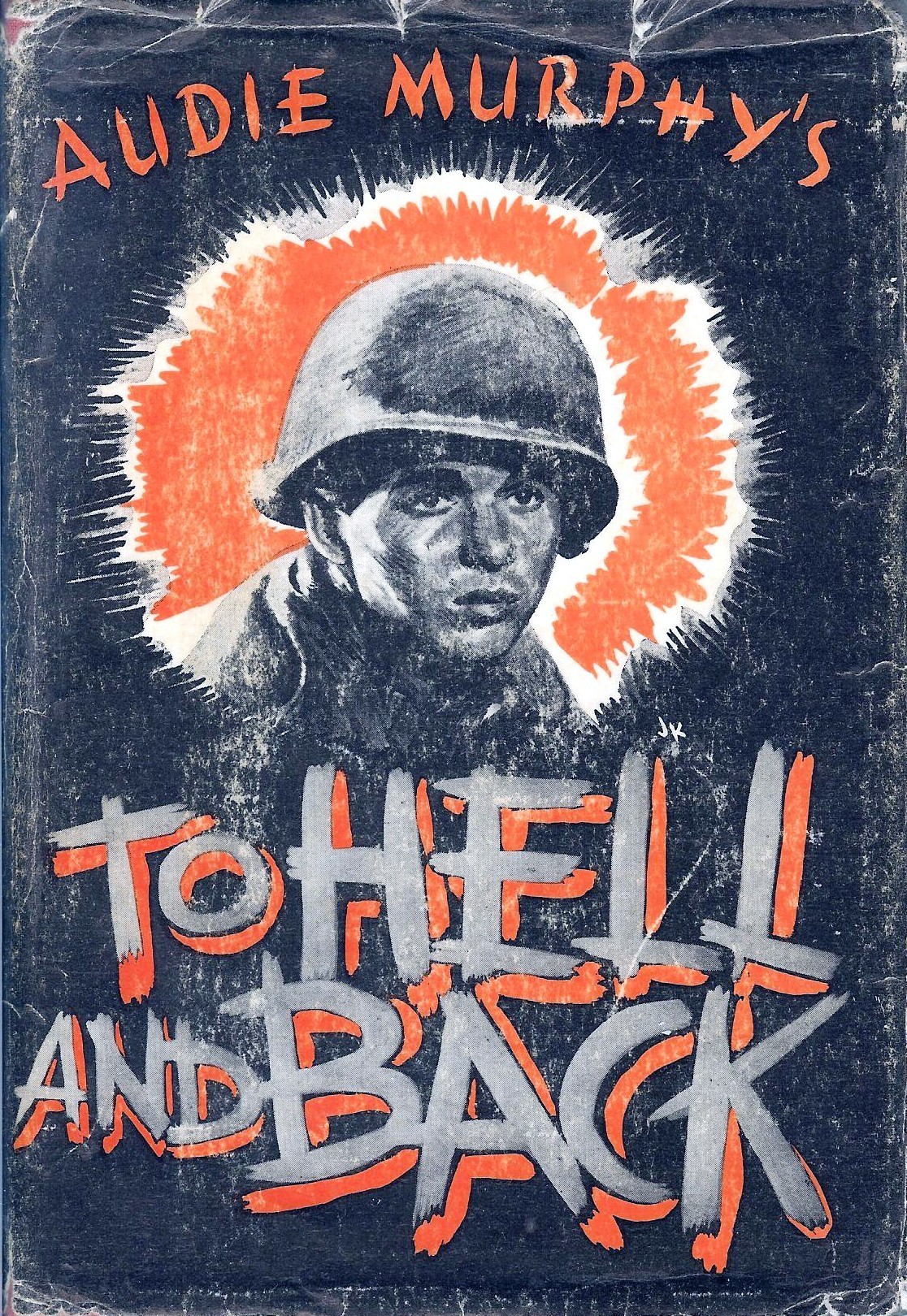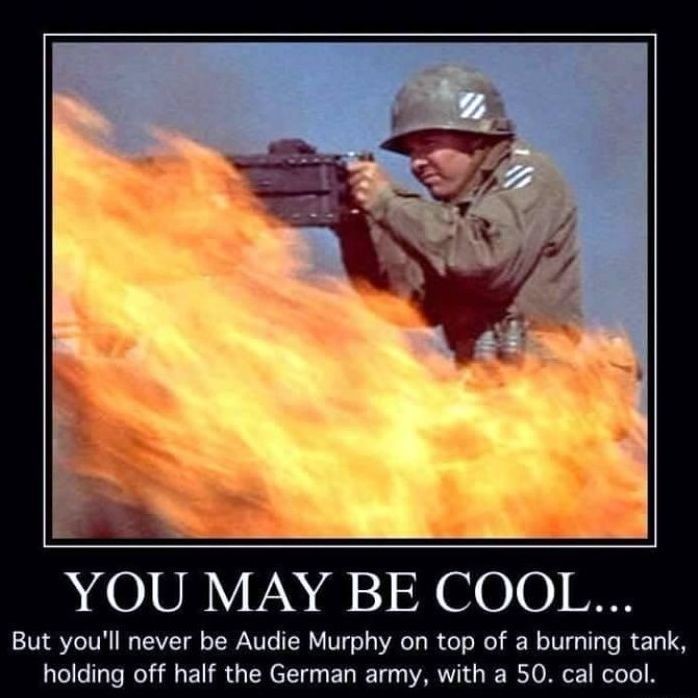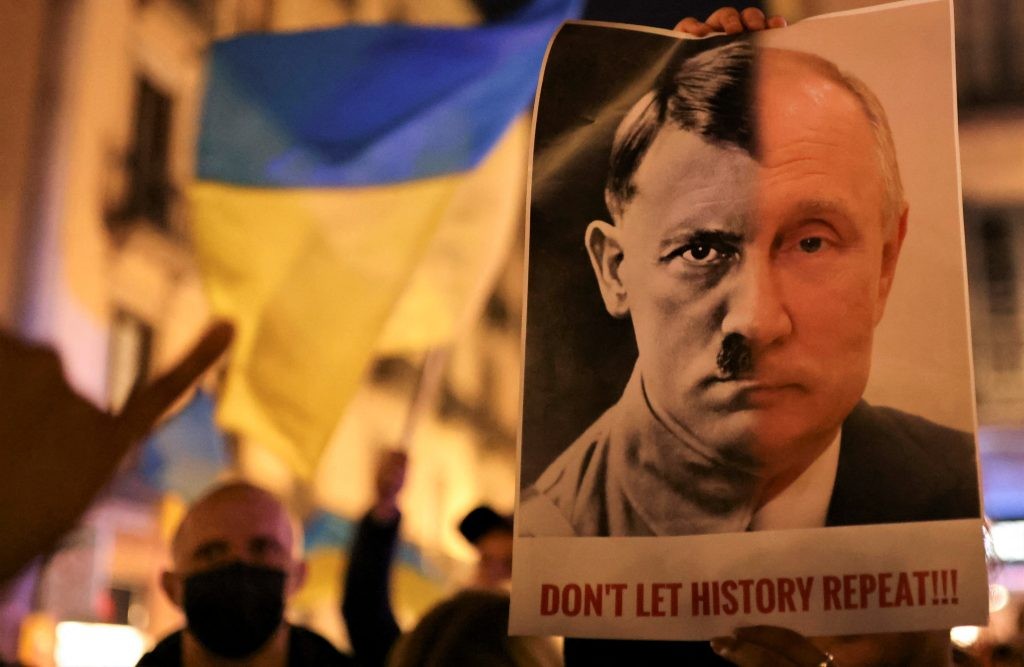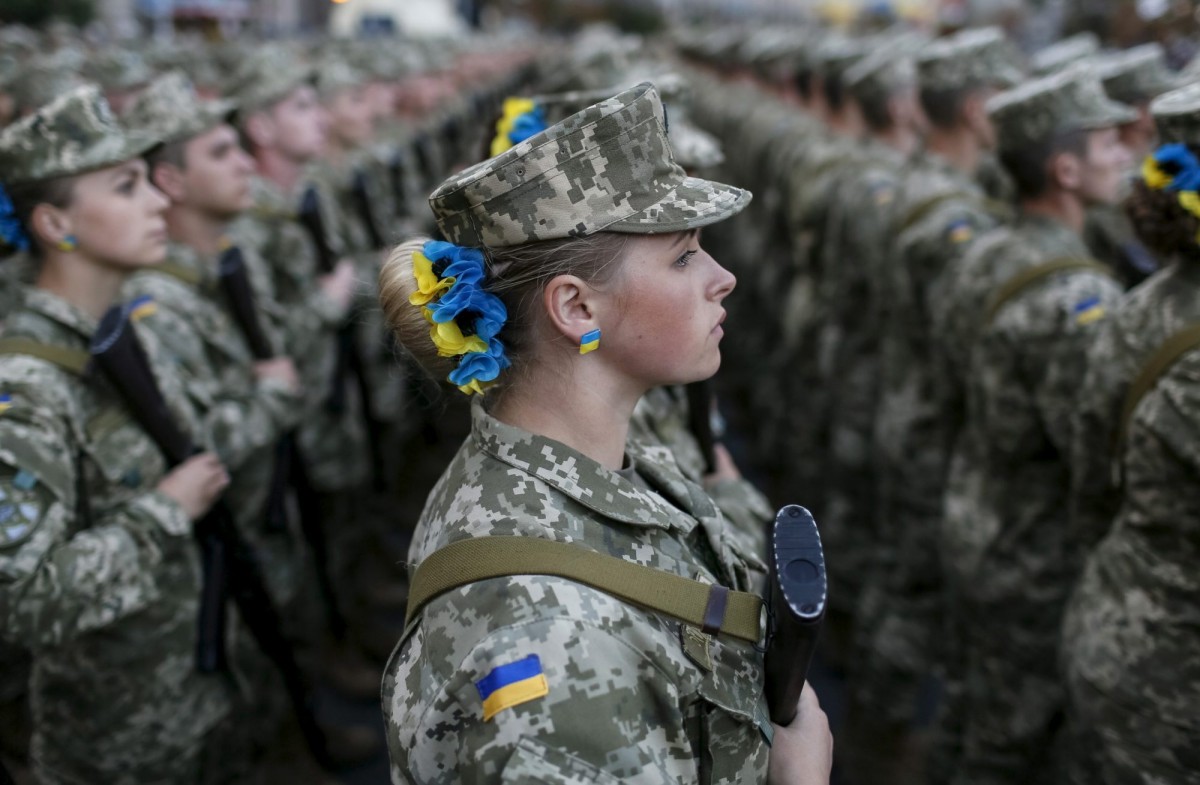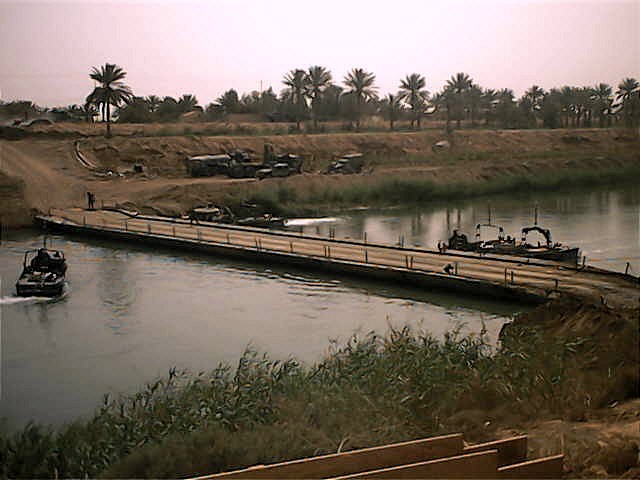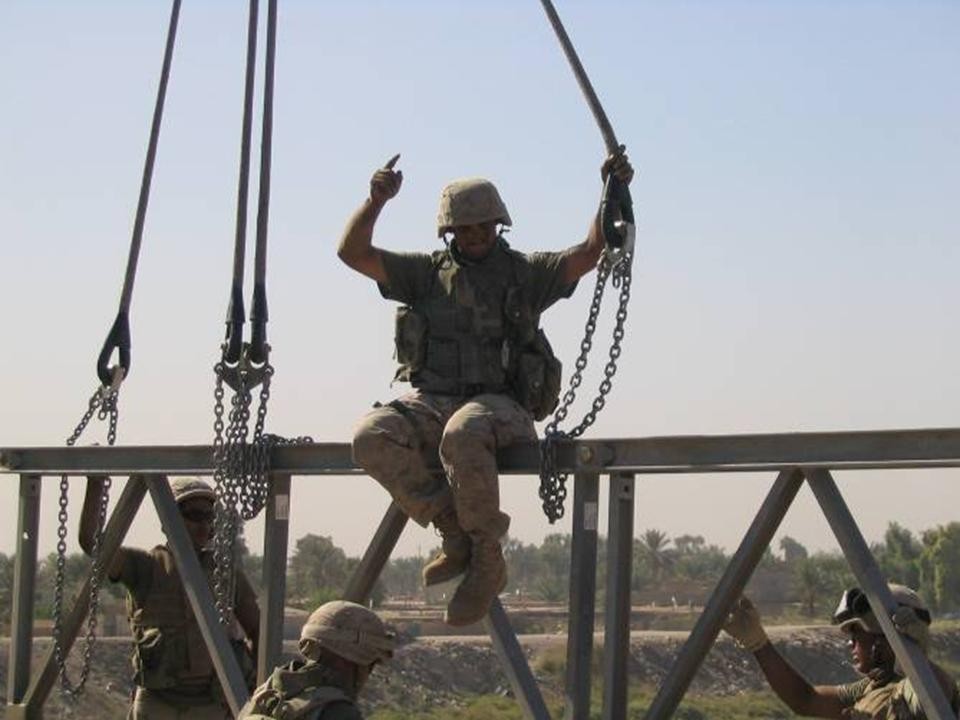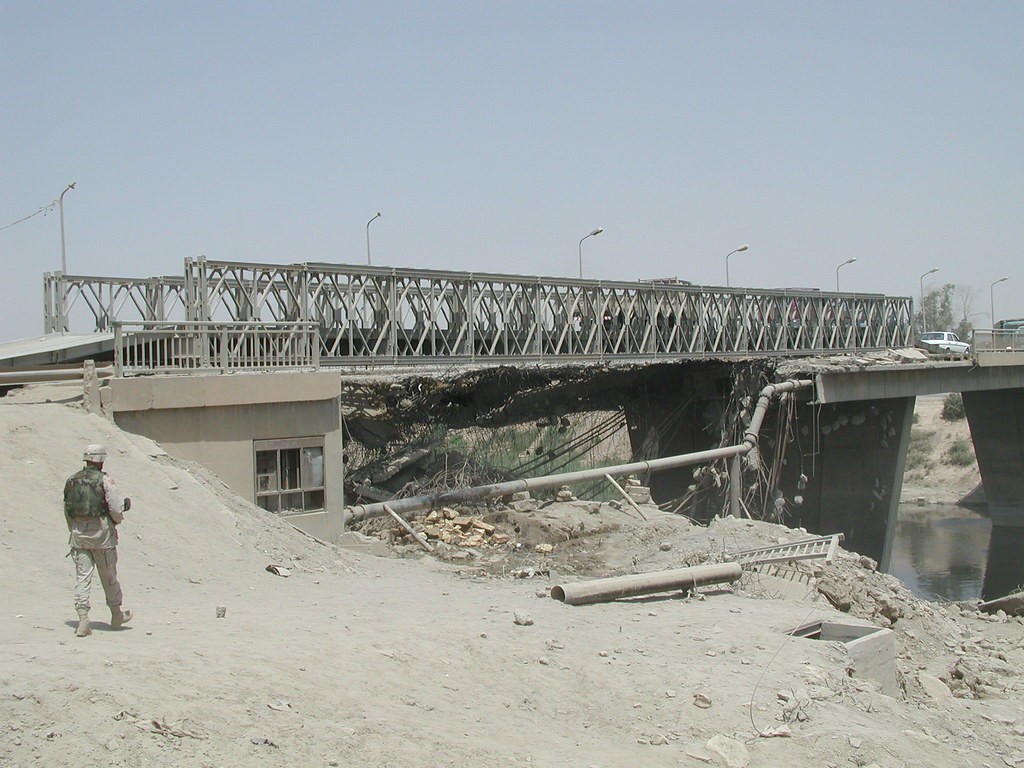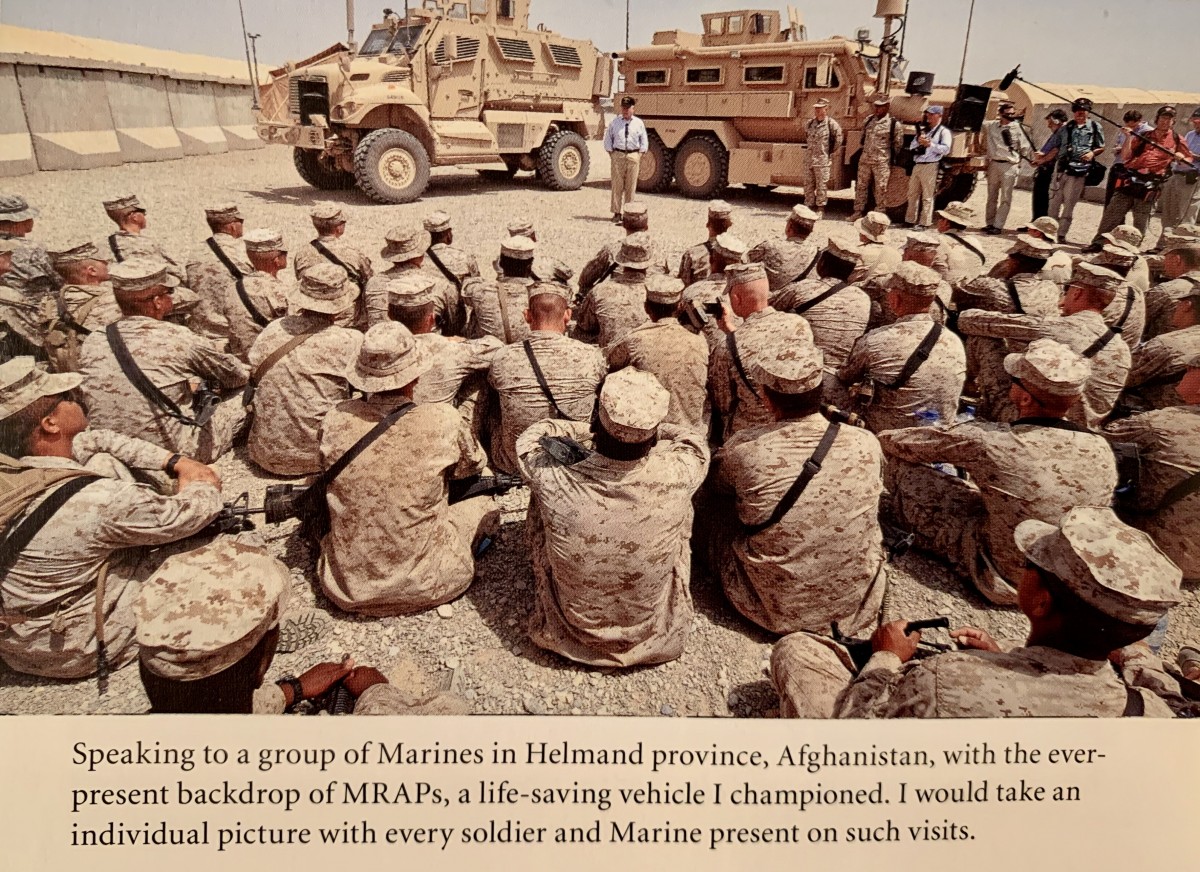(


 )
) 

 -
-

 91
91December 2025
RODEOS
1
FOLLOWERS
 About salutesteeltargets
About salutesteeltargets
Vernonia Oregon United States
United States -
- Member since December 2025
Member since December 2025
view salutesteeltargets's company homepage
98803 views
Boeing CEO Assures Nervous Fliers T
Published Jan 10, 2024
BabylonBee.com
SEATTLE, WA — Amid growing concerns over safety after several devastating mechanical failures on Boeing 737-9 Max aircraft, Boeing CEO Dave Calhoun assured hesitant travelers that all their aircraft are built according to the highest standards of diversity.
"I know everyone is nervous about the doors of their planes blowing off the aircraft mid-flight or the entire fuselage buckling due to faulty parts, but let me assure you: Boeing is diverse," said Calhoun in a CNBC interview. "In fact, our design and manufacturing crews are the most diverse in our company's history. Nothing to worry about."
Boeing is facing NTSB investigations after several mechanical failures that caused Alaska Airlines to ground all 737-9 Max aircraft. Calhoun said such concerns are unwarranted. "We have women, people of color, and even autistic paraplegics working on the 737," he said. "There's nothing safer than a plane built by diversity!"
At publishing time, 3 more airlines had grounded the aircraft, likely because they hate diversity.
Source: https://babylonbee.com/news/boeing-ceo-assures-nervous-flyers-that-all-737-aircraft-are-built-to-the-highest-diversity-standards
100050 views
Saying Goodbye to Salute
by Col Michael Coleman Howard, US Marines (Ret), original founder, developer & owner
After 20 years of vision, invention and discovery, Salute Targets and Salute Products is moving on to another season in the reactive steel manufacturing industry. As of Christmas 2023 (Salute Targets started Christmas 2003), we are shutting down its original manufacturing headquarters in Helvetia, Oregon, and moving on to another season of life. This will be the history, research, discussion, and preservation of lessons learned in the American and Israeli reactive steel target industry. This is a team effort in conjunction with dear family and friends. We apologize for any confusion caused by our past “partnering” with other individuals & companies that took advantage of our designs & attempted to replicate them under false licensing agreements. Please beware of fake Salute Targets & Products.
----------
Fall-Winter 2023
From: Col Michael C. Howard US Marines (Ret), Salute Targets Founder
To: Our Loyal Salute Friends, Customers, Partners, and Fellow Historians
Subject: Salute Targets Transition to Salute Targets History & Colonel’s Corner Defense Review Inc.
Motto: One Team One Fight for Faith, Family, Friends, Flag & Freedom
Growing up in the family that owned Seabiscuit, I often heard the phrase from my Dad or one of his favorite jockeys (Danny Conchola & Robert Strauss) that “It was a great ride.” That described, in the Thoroughbred or Quarter Horse racing industry, that a racing event was both a great adventure and endeavor. It was always a team effort involving not just the horse and jockey, but the support establishment of trained, owner (often the same in our family), the barn area familiar faces of folks who LOVED horses and treated them like their own kids. There were also the vets, logistic support (food and hay) and array of sincere track officials who made the establishment a positive one of integrity. And there were the wives and family who also added their support. There was also the media and “callers” like Joe Hernandez (the “Voice of Santa Anita”) who shared horseracing with the nation in a warm, rich manner that endeared all of it to all of us. Much has changed. But it still comes down to integrity, trust, and professionalism.
This is what Salute Targets has been to me these past two decades.
As I learned from my family, friends and 32 years in the Marine Corps, THE PEOPLE are any organization’s best asset. As Gen Tony Zinni, who mentored me from Okinawa, to Korea, from Camp Pendleton to Kuwait, what good people will live, serve, and even die for is: Family, Friends, Faith, Flag and Freedom. What he called The Five F’s.
After 20 years of being a leader in the reactive steel target industry, Salute will stand down its actual target production to focus more on the areas of applying steel target training & designs. There are many target manufacturers out there now that have adopted (both legally & illegally) our key original designs, like the Spartan & Gravity Plate Racks. Our Exploder Targets are also becoming a standard for targets set beyond 1,000 yards (the distance at which major rifle caliber rounds cannot be heard striking steel.
During these past two decades, many of our designs have been adopted by others, both domestic & foreign.
For actual acquiring of high-quality targets, we now recommend Action Targets & MGM Targets. We have great respect for these two companies as they have never illegally copied our original designs. In other security areas, we recommend our Israeli friends at MIFRAM.
Salute Targets will continue to operate as steel and other target evaluation experts. Our historical files and articles accurately chronicle the origins and phases of steel target development. We also will continue to research and write articles dealing with personal and organizational defense training. Feel free to contact us and use our library of history, philosophy and current event reporting and evaluation of a wide range of national and international defense topics.
And so I want to take time to acknowledge and thank those who made Salute Targets “a great ride”. First, my wife Lynn of 46 years, helped me follow through from the beginning to make a product that was different and would help our troops and coalition allies overseas. She handled the artwork and the finances and a wide array of choices about who to partner with, trust, employ, and when and when not to lean forward. She was there for the tough times when we were lied to cheated and stolen from and had to move on trusting in God (Genesis 50:20 “… what the world means for evil, God means for good.” I want to thank the great welders and innovators like Brett Eggiman, Nick Shimmel, Doug Bohlmann and Robert Estep. They took good ideas and made them better. And Chris Granat, our exceptional welder and strategic thinker who stepped up in tough times to show his faithfulness and brilliance at research from steel types to mechanical designs and solutions (the fact that he now heads up a special section at Lockheed says it all about his dreams). I also want to thank my dear Israeli friends General Eitan Lidor and Col David Noy for their experienced critique and help in networking not just support during our Global War On Terror, but also including me in their MIFRAM connections and network from military exhibitions (even within the Israel nosiness pavilion) Washington DC, Quantico, Fredericksburg, Las Vegas and Anaheim for the right exhibitions. And to Amos Klein, owner of MIFRAM who provided the special El Al trips to and from Israel. There is a special song sung in the IDF from Psalm 133:1 “Hine Ma Tov” (Behold how good and well it is when brothers dwell in unity).
Salute Targets will no longer manufacture steel targets, but it will focus on “manufacturing” new ideas and networking with others who are like-minded.
Every day is a gift.
Mike Howard
Helvetia, Oregon
98137 views
Israel at War again Gaza 2023 Neve
Hanukkah 2023 from Israel
By Celeste Mills, Neve Ovid Poriya, Galilee, Israel, 14 Dec 2023
Introduction by Col Mike Howard US Marines (Ret)
The 2023-ongoing Battle for #Gaza is a committed struggle between #Israel and Hamas. Good vs evil. Light vs. darkness. Following the 7 October 2023 unprovoked attack by Hamas terrorists into Israel, over 1,200 innocent Israelis were brutally killed, tortured, mutilated, raped, and at least 240 Israelis (and over a dozen Americans) kidnapped. Every nation, society and individual has an inherent right to self-defense, and so the Israel Defense Force (IDF) reacted swiftly. The attackers in Israel were rapidly hunted down and killed, and the Gaza Strip surrounded by the IDF. Israel is closing the noose on Hamas.
The following letter is from our dear friends in Israel. We have known them since the 1980s and our children grew up knowing their children, several of whom are now serving with the IDF (affectionately known as “Zahal”) in the desperate Gaza fight.
Special THANKS (“Todah Rabbah”) to our dear family and friends who graciously responded with both loving “Care Packages” (BBQ beef jerky & Peanut M&Ms) and generous donations to our IDF Soldiers fighting in Gaza. Treats & cash for flak jacket & helmet upgrades were much appreciated!
“Semper Fi” from this old combat Marine vet who knows the meaning of these items in a fight. MH
Tonight is the last night of Hanukkah, the Jewish holiday that commemorates the ”against all odds” defeat of an invading mighty Greek army by a small band of brave and faithful Jewish fighters in the second century. Initially, it felt odd to be celebrating a holiday while our nation was still grieving and suffering- while families wait for their captured relatives to return, soldiers put their lives on the line day and night and hundreds of thousands of families are displaced from their homes because border towns have become a war zone. We need to remember, however, that the miracle of Hanukkah was that God delivered His people from their enemies and He will do it again! “The Lord your God is in your midst, A victorious warrior. He will exult over you with joy, He will be quiet in His love, He will rejoice over you with shouts of joy” (Zeph. 3:17). So as we light our Hanukkah menorah, we are asking the Lord for the miracle of deliverance once again, deliverance from our enemies that are on every side- Hamas in the south, Hezbollah on the north, terror cells in the West Bank and Iran, who is orchestrating all of these attacks, to the east.
As the IDF has moved deeper into Gaza, the battles have become more intense and the army is paying a heavy price with the lives of our soldiers. Over the past few days, the death toll has risen significantly with many more wounded. Just this afternoon we received word that the cousin of our son-in-law was wounded in battle. Uriah is suffering from a severe head injury and is in intensive care, sedated and ventilated. Please pray for wisdom for the doctors to know how to treat him as shrapnel in his head is causing a complex situation. And please pray for the protection of all of our soldiers.
Shirel had an adventurous trip back to her base on Sun. First, she was told to evacuate her bus because of flash flooding in the Negev then on the next leg of her trip, the bus had to stop because of rocket fire overhead. Praise the Lord that no one was harmed from the rocket nor from the shrapnel that resulted from its interception with the Iron Dome missile defense system. Even Shirel whose military job is to work with children still faces the dangers of war!
We thank the Lord that He protected our son, Nate, during his time of service. Last Friday he was released from reserve duty and this morning he and Becca flew back to the States. Though it was their original plan to leave at this time they had debated whether or not they should delay their departure. After seeking the Lord, they felt led to keep their tickets. Please pray that they will now get settled back in the States and that the Lord will direct their steps in this next chapter of their lives. I’m sure that it will be very hard for them to be so far away while Israel is at war. (Though Nate says he’ll be back if a larger conflict opens up on the northern border.)
Indeed, it is hard to know how this war will progress. Amidst mounting international pressure for a ceasefire and the United States’s directive to end the war by the end of the year, both our Minister of Defense and Prime Minister Netanyahu have stated that the war will continue “until the end”. Hamas has spent over a decade building its underground infrastructure and it is going to take time to destroy it, especially as the U.S. continues to tie the military’s hands by dictating how it handles the operations. The Lord said that nations rising against nations were merely the beginning of birth pangs (Matt. 24:7-8) and the thing about birth pangs is that you can never go back! We’re looking forward to “the glorious appearing of our great God and Savior, Yeshua the Messiah.”
Ben and Celeste Mills
Additional Note:
Dear friends of Israel.
We are writing to express our gratitude for the generous support that we have received from your community during these challenging times.
Your unwavering support has not only provided us with essential equipment but has also given us a strong sense of unity and solidarity. It is a reminder that we are part of a larger global Jewish community that stands by our side, no matter the distance.
In these trying times, when the security of our nation is tested knowing that we have the backing of Jewish communities around the world provides us with strength and a feeling of unity.
Am Yisrael Chai!
Israel
“Pray for the peace of Jerusalem” … and her defenders.
95372 views
Part 2 What Happened to the Beloved
Indeed, for the last four years, the nation’s most decorated retired officers have consistently attacked their commander-in-chief in the most personal and venomous invectives that make General Douglas MacArthur’s ridicule of the unpopular Truman Administration look tame in comparison. The only precedent after the adoption of the UCMJ for such slurs is the checkered career of General Edwin Walker (he had earlier called President Truman “pink”). Under pressure, Walker was the only general to have resigned his commission, left the army, and reentered civilian life in the 20th century.
The recent spate of public disparagement has been truly as astonishing as it was frightening. Our esteemed retired officer corps have variously called a president a Mussolini-like character, a liar, crazy, Nazi-like, comparing his border policy to the death camps at Birkenau-Auschwitz. Milley himself was said to have compared his commander-in-chief to insider journalists to the Nazis under Adolf Hitler. A retired four-star general, Michael Hayden, just retweeted a crazy suggestion to deport any unvaccinated supporters of the former president to Afghanistan with one-way tickets—a jest perhaps, but one implying a death sentence as well.
And all this is not mere rhetoric, but an amplification of insurrectionary prompts without precedent in recent history. Former Defense Department officials such as Rosa Brooks, in print, had raised the issue of military intervention in the first weeks of the Trump Administration by suggesting that the military might have to stage a coup to expel him from office.
Admiral William H. McRaven wrote an op-ed in which he attacked the president in terms clearly in violation of UCMJ. He stated, just months before a scheduled election, that Trump should be removed from office: “[I]t is time for a new person in the Oval Office—Republican, Democrat or independent—the sooner, the better. The fate of our Republic depends upon it.”
Since when in an election year does a retired admiral determine that a president should be removed apparently “sooner”? And is it reckless for such an esteemed officer to advocate such action when many of his former subordinates still serve in the military?
Two retired officers in late 2020 urged Chairman Milley to use force if necessary to remove Donald Trump from office if he felt that Trump had improperly questioned the election results and might not leave office on January 20, despite there being no evidence that Trump ever even considered such a step. When did military officers assume the roles of psychiatrists, professors, constitutional lawyers, inspector generals, and clergy?
The legacy of our retired top brass is that now military officers feel they can appeal to their own sense of justice rather than fealty to the law to consider either removing an elected president or to so damage him by slurs and smears they render him ineffective. For all their talk of the Constitution, the law, and the republic, they have shown that they regard the UCMJ simply as a mere construct to be ignored.
Social Justice Warriors
Third, this selective politicization of the military has now reached dangerous levels. After various officers wrote vociferously about the dangers of using military troops to restore order during 120-days of continuous rioting, violence, and arson during the summer 2020, they went absolutely quiet when Joe Biden ordered tens of thousands of federal troops, barriers, and barbed wire to militarize Washington, D.C. in winter 2021—the greatest militarization of our nation’s capital since the Civil War.
The retired officer corps apparently were entirely ignorant of the long history of presidents employing troops to restore order when police seemed overwhelmed. That was an odd amnesia given that former Chairman of the Joint Chiefs Colin Powell once made it clear to then President George H. W. Bush that he was happy to send in the Marines to Los Angeles during the Rodney King riots. And he did so with Biden-like “dispatch.”
Note that former members of the Joint Chiefs blasted Trump for a purported photo-op in conjunction with a supposed order to use military personnel to clear Lafayette square with tear gas. Yet their melodramatic public outrage was based on a media-concocted lie, as revealed by a later careful investigation by the inspector general of the Department of the Interior.
Yet the untruth was never corrected by any of the retired generals who whipped it up in June 2020 and did their own part to fan a national hysteria.
As a result, in June 2020 Joe Biden boasted that former top-ranking generals would help to remove Trump from office if he contested the election: “I’m absolutely convinced they will escort him from the White House with great dispatch.” One wonders what would have happened had Trump boasted that if Biden should not accept a contested verdict of a 2020 defeat, the military would prevent him from entering the White House?
Former chairman of the Joint Chiefs, Mike Mullen, claimed that Trump was essentially treasonous by giving aid to our enemies by his actions. “[He] gave succor to the leaders of other countries who take comfort in our domestic strife,” Mullen said. Note that the same General Mullen defended the Milley call to the communist Chinese military leadership.
Former four-star General James Clapper called Donald Trump a veritable traitor (a “Russian asset”), despite the failure of the 22-month, $40 million Mueller investigation to find any truth in the Russian collusion hoax.
Again, none of these officers offered corrections following either the inspector general’s report of the June 2020 violence or the end of the Mueller investigation.
Too many of our officers, retired and active, lecture the country on controversial issues from “white rage” to the need for women in front-line combat units to transgender policies. Thereby, the Pentagon has cultivated and won the support of the politicos traditionally deeply suspicious of the U.S. military. In such a novel quid pro quo understanding, the Left has gone strangely quiet as retired military officers revolve into defense contractor boards and as weapons procurement lobbyists.
Victory or What?
Four, these types of politicization and violation of a variety of laws do come at a price, either in distracting the military command from its primary mission of defeating the enemy and securing victory in American conflicts or contextualizing such failure through embrace of social activism.
Since the Korean War, and with the exception of the first Gulf War, the military’s record has not been especially stellar, given a chronic inability to achieve a military victory in a cost-benefit sense acceptable to the American people: optional interventions in Lebanon, Somalia, and Libya, the defeat in and retreat from the Afghanistan war, and strategic stalemate and withdrawal from Iraq.
Many of these setbacks were due to political loss of will, but the military might have prevented such fickle and fluid civilian policies had it been able to present a strategy for victory, one that justified to the American people the resulting costs in blood and treasure.
The above pessimistic appraisal is not mine nor conservatives. It is now likely the consensus of our enemies from Afghanistan to Russia to Iran and other parts of the Middle East to North Korea. Our enemies hope that the once most powerful military in the history of civilization is going through a sort of people’s liberation army internal revolution, one in which ideological purity, not battlefield competence, is deemed the better measurement of today’s high-ranking officer corps.
How strange that in the midst of a humiliating defeat and withdrawal from Afghanistan our military still assured us that culturally sensitive food was awaiting refugees upon landing in the United States—a group, we were told, flown out with acceptable gender ratios and unvaccinated, but shepherded by soldiers who will shortly be discharged if they likewise remain unvaccinated.
https://victorhanson.com/what-happened-to-the-beloved-military/
95241 views
Part 1 What Happened to the Belove
Words of wisdom from the great Victor Davis Hanson
The highest echelon of the U.S. military is becoming dysfunctional.
There are too many admirals and generals for the size of the current U.S. military. It now boasts three times the number of four-star admirals and generals than we had during World War II—when the country was in an existential war for survival and when, by 1945, our active military personnel was almost nine times larger than the current armed forces.
Somehow a gradual drift in the agendas of our military leadership has resulted in too many various emphases on domestic cultural, social, and political issues. And naturally, as a result, there is less attention given to winning wars and leveraging such victories to our nation’s strategic advantage.
The consequences of these failures are downright scary for a world superpower upon which millions at home and billions worldwide depend.
There are too many concurrent Pentagon crises. Any one of them would be dangerous to our national security. Together they imperil our very freedoms and security.
Reform?
What is to be done? The Uniform Code of Military Justice must be enforced, and not selectively applied on the basis of rank: officers below the rank of general and admiral now face severe penalties for disparaging in personal terms the current administration, while one stars and above are given de facto exemptions for comments about the previous administration. If the code is not considered law but merely a recommendation, then it should be scrapped.
The Department of Defense Office of Inspector General and the inspector generals of the various branches of the military must enforce existing laws that carefully define the limits of the Joint Chiefs of Staff activity. And they must punish those officers who violate such statues to interrupt the legal chain of command.
There must be a cooling off period to prevent retiring military officers from rotating onto the boards and lobbying teams of corporate defense contractors, with the presumption that their knowledge of the operation of the Pentagon can be monetized to the advantage of particular corporations. Five years seems a reasonable period in which our top brass should refrain from joining firms that are seeking lucrative contracts from the Pentagon.
Any former high-ranking retired officer who is paid to provide military commentary on news channels should not enjoy security clearances. The practice is currently much abused. A good example was the case of retired General James Clapper. For months, he went on television, with presumptions of superior wisdom, supposedly based on his access to confidential intelligence, and flat out deceived the American people about the so-called Russian collusion hoax and the supposed treasonous nature of the president.
We are currently witnessing several scandals in the Department of Justice, the IRS, the CIA, and the FBI by careerist, unelected employees. But far more chilling is the crisis in the U.S. military upon which we all must depend. Its revered history and accomplishment must somehow remain a source of pride and inspiration to guide all of us in these frightening times ahead.
So, What Happened to the Joint Chiefs?
First, the Joint Chiefs have now gone astray. Laws passed in 1947, 1952, and 1986 explicitly defined—and incrementally but steadily narrowed—the mission of the JCS. The Chair may be the nation’s highest iconic ranking military officer. But his actual operational control over the military is carefully delineated by law and quite limited by design.
In sum, the JCS is an advisory body. Members are made up of four-star officers of their respective branches of the military. But by statute they are not responsible for carrying out orders from the president as relayed through the Secretary of Defense.
Instead, these highest-ranking officers of the various services, led by a chairman, are to present various options during times of policy debate, consultation, and crisis.
Nothing could be clearer about such an important though advisory role. Yet the present chairman, General Mark Milley, if media accounts are accurate, has apparently violated both the spirit and letter of the law. He reportedly called together top officers of the military services and ordered them to reroute long-held protocols in reference to the nuclear defense of the United States in times of peril—and to channel such operational decision-making through himself.
That clear and dangerous usurpation of power is certainly contrary to the law—no matter what his fellow officer corps defenders plead. It is entirely irrelevant whether Milley acted in good faith, or was swayed by the emotions of the time, political and media pressures, or his own outsized ego. His job is to stay cool and offer calm advice strictly within the letter of the law. And he failed on that critical account.
Milley additionally contacted his Chinese Communist military counterparts to inform them that he so believed that his own country was in a state of crisis—perhaps after a conversation with the speaker of the House and de facto head of the opposition party in the Congress. Further, in freelancing fashion, he apparently promised to warn the Chinese in advance should his own country undertake any aggressive action against Beijing.
Such an act is certainly unprecedented in U.S. military history. And if de facto such acts were to be institutionalized, then the chairman of the Joint Chiefs, with impunity, could ignore the law and place the operation of the military in his own hands, on grounds of his own hunches about the current wisdom or stability of his commander-in-chief. Freelancing psychiatry is not in the job description of the Chairman.
Milley at the time claimed—and later denied—that he feared in late 2020 that Donald Trump, one of the rare presidents to have eschewed optional wars and preemptive attacks, might be too trigger happy to entrust with his constitutional appointed powers under the Constitution as an elected president.
Aside from the fact that the Constitution has ample remedies for such a scenario—from conviction of an impeachment indictment in the Senate to removal under the 25th Amendment—that is an absurd excuse for a veritable coup.
In truth, Trump took an enormous amount of criticism from the current and active officer corps for eschewing a retaliatory strike against Iran, and for choosing not to insert American troops into a volatile standoff between Kurdish troops and the forces of NATO ally Turkey in Syria. Trump is the first president in memory not to have ordered a new major military campaign during his tenure.
Would Milley have acted in such fashion had House Minority leader Representative Kevin McCarthy (R-Calif.) called him, warned him that Joe Biden was dangerously non compos mentis, and then expressed worry that the president’s cognitive disability threatened the entire 20-year effort in Afghanistan, and thus demanded action by Milley to short-circuit the chain of command?
The civilian-military tradition of U.S. national security cannot survive a Joint Chiefs chairman who informs Washington journalists that he believes his commander-in-chief exhibits Hitlerian characteristics, appropriates power from the elected president, violates the chain of command, freelances in foreign policy with a foreign and hostile military, and communicates directly to take such action with the opposition leader speaker of the House—after circumventing an elected president. Whether he knows it or not, Milley’s resignation is not a matter of if, but only of when. If Milley were not to resign, then we essentially have no civilian control over the military, and his dereliction will be a green light to other would-be usurpers of rights denied the Joint Chiefs of Staff by law.
A Uniform Code of Military Whatever?
Second, the once hallowed Uniform Code of Military Justice is now a mere construct. It is widely ignored to the point of parody—at least for officers above the rank of colonel who violate Article 88’s prohibition of using “contemptuous words against the President.”
Remember the statute was aimed at forestalling military officers condemning unpopular or controversial presidents, not beloved leaders—in the manner that the First Amendment protects heterodox, not orthodox, expression. That obvious fact was totally lost in the mob-like rush to vilify the president by an entire cadre of four-star retired generals and admirals in 2020-21.
Continue Reading Part 2: https://www.colmikehoward.com/article/Part+2+What+Happened+to+the+Beloved+Military
92960 views
Gaza War of 2023 Israel vs Hamas
An Israeli Officer Shares with his old US Marine Friend
by Col Mike Howard US Marines (Ret) & Gen Eitan Lidor, IDF Handassah Kravit
Eitan and I go back a long way. We first met in 1984 at Camp Pendleton, California, when I was assigned to him as his 1st Combat Engineer Battalion, 1st Marine Division, sponsor. We were both combat engineers. I was the commanding officer of Company B, 1st CEB, while he had just finished command of 605 Engineer Battalion of the IDF, during combat in Lebanon during Operation Peace for Galilee 1982. He had then attended the Advanced US Army Engineer course at Fort Belvoir, Virginia. He and his family then drove cross country to observe Marine Corps operations and training. I was assigned to Eitan as his sponsor (he was a Lieutenant Colonel, while I was a Captain) because my commanding officer, LtCol Thomas Dumont, knew that I had studied in Israel my sophomore year of college.
Eitan and I connected from the start. He was a no-nonsense professional and like most Israelis I had known, “cut to the chase” with no BS or polite diplomacy. He told me later that he was surprise when he first entered my office as I had a US flag, a British flag, an Israeli flag, and a German flag up on the walls of my office. He thought I had put the Israeli flag up for him. I told him no, that it had always been there as I had lived in Israel most of my sophomore year of college (1974-1975) as a student in St Olaf College’s (Northfield, Minnesota) Semester & Interim in the Middle East term in Jerusalem. As a reserve in the USMC, I had chosen to do my Independent Study on the Israel Defense Force (IDF – or in Israel “ZAHAL”).
I introduced him to our unit, and my fellow Marine officers were all very attentive when at our first staff meeting, when asked about engaging in combat with the new Russian T-72 of the Syrian Army in the Bekah Valley east of Beirut, Eitain put many of our fears to rest when he calmly stated: “It burns just like every other Russian tank)! This was great news to us, who had been under the false impression that the latest Russian tank was something quite formidable.
Eitan then accompanied me out to our training areas where we showed him our Mechanized Assault Obstacle Course, in which every infantry battalion, reinforced with a unit of tanks, combat engineers, and artillery support, was to advance through a series of natural and man-made obstacles to seize an objective from the enemy “OPFOR” (opposing forces). Having experienced mechanized operations in both the 1967 and 1973 wars, together with Lebanon in 1982, he was highly qualified and helpful in observing and offering constructive criticism and much appreciated advice. I greatly liked and trusted him, and was also thankful that my wife Lynn (who was also ‘sponsoring’ Eitan’s gracious wife Ziva) felt the same. Not only was this a great assignment at the time, but it stood the test of time and we are still close friends today, having frequently visited each other, and attended kids weddings and other special times. Eitain invited me to Ado Rheem, the IDF Combat Engineer School in the Judean Desert, and I was included in a ceremony atop Masada where new IDF recruits were inducted into the IDF Combat Engineer Corps. Eitan later played a key role in allocating us IDF breaching gear (particularly Track-Width Mine Plows and D-9 “Dubi” Armored Dozers) for Desert Storm and Operation Iraqi Freedom. Israel’s generosity, and Eitan’s personal instruction was greatly appreciated and saved many American lives, not just in our 500 mile 2003 assault on Baghdad, but also in the desperate Battle for Fallujah.
So it is no wonder, that following the Hamas atrocities against civilian Israeli Kibbutzim in Oct 2024, that he would be “recalled” to active duty as a combat engineer advisor for Gaza and we would reconnect sharing views on the historical events and engineer challenges of today.
-------------------------------------
0529 Sunday 5 Nov 2023
Dear Mike
I am sorry to tell you that your regime (the Biden administration) does not understand the mentality of the Middle East. With all the help they could give us to finish our mission, they are often a hindrance. The Hamas enemy and their support in Gaza and throughout the Arab world understand only power.
After the barbaric atrocities that they did on the 7 October, your president is now pushing for humanitarian steps that will stop our IDF.
We know that some people who live in Gaza are not Hamas members. Yet they still participated in the murder, kidnapping and abuse of our innocent civilians. They were partners with Hamas.
For these Arab people that used to work in Israel (we trusted them and allowed they jobs), the US now wants to supply water, electricity, and gas. I saw on the TV all the demonstrations in the US on their behalf.
In the American universities where Moslems are demonstrating and burning US & Israel flags, do not believe them. They help Hamas.
If the US wants to be a respected power in the Middle East, you must show power and not be intimidated and used by such propaganda. These demonstrators don’t know the truth. Nor do they want to know it. Their cries for humanitarianism are false and shortsighted. They do not know the evil heart of Hamas. If Hamas truly cared about its people, it would build and not destroy. It is an arsonist who wants only to burn and kill.
It is what it is. Again, Israel is forced to fight. We have no choice and nowhere else to go. We love our land and building it up. We love all our people, Jews, Arabs & others. We want to live in peace and not fear being killed. Thanks for asking about our family. We are all right, Amit and Tal are in the army. Amit is a full colonel in the special forces and Tal is a Lieutenant Colonel in the Air Force. Ziva keeps watch over the children and grandchildren. And old me, I am advisor to the Army and mostly to the Combat Engineer who are doing a great job.
Best Regards,
Eitan
-------------------------------------
0703 Sunday 5 Nov 2023
Dear Eitan,
I completely agree with you. Biden is a schlemiel. He was the only member of Obama’s national security team who voted AGAINST the special ops raid that killed Osama Bin Laden. Yes, most Americans are naive about the Middle East. They think if they are nice to people, Hamas & rest of Arabs will be nice back. We know this doesn’t work. You are right, Islam only respects power.
We pray for Israel every day! And we pray for your wonderful family, the Noys, and the Mills! Ben & Celeste have three members in the IDF … Nate, Shirel, & Elisha’s husband in the IAF. Nate is a sniper. He has shot here on my range & he is good. I smile & cheer as I see our D9 “Doobis” in action! I note the new anti-drone screens on top. I love ZAHAL & know it is fighting the good fight! Like David Ben Gurion used to say, don’t worry about the UN “Umm Shmum”. You still have a majority … 60% … in the world & US is closer to 70% who support Israel. As I always told you, ignore others & do what is right. Winston Churchill said: “You will never get to your destination if you stop to throw rocks at every dog that barks!” I know that you and David don’t care for “King Bibi” but he is great on foreign policy and with the Western media.
And ultimately, God is on your side and there is a reason for Israel’s & our troubles. It is the bad hearts of men. God is taking History where He wants it to go! Remember Genesis 50:20 “… What the world means for evil, God means for good.”
I love you my Brother. Wish I was there cleaning weapons or helping to refuel D9s. We tried our best in Iraq & Afghanistan, but our politicians failed us. Americans are NOT PATIENT people. We hope to retire Biden next year. Trump or Nikki Haley support Israel and understand the Middle East much better.
Hamas, as any similar terrorist organization, is playing for time. Israel must destroy it.
Shabbat Shalom & Achnachnu Nenahzayach (We Will Win)!
Mike
93325 views
The Lessons of 911 Can Help the US
Carrie Cordero
Oct 19, 2023
Mixing diplomatic, military, economic, intelligence, and law enforcement power can shred the terrorist network.
HAMAS’S SAVAGE ATTACK ON ISRAEL on October 7 has pulled the world’s attention back to the menace of international terrorism. Although it did not disappear in the twenty-two years since al Qaeda attacked New York City and Washington, D.C., it had appeared to recede as U.S. and coalition forces degraded al Qaeda and its progeny. And the threat is not just against Israel and Israelis. Citizens of at least 29 countries were killed or are missing as a result of the attack, including at least 30 Americans killed and an unknown number held as hostages by Hamas in Gaza.
Since 9/11, the United States has developed an arsenal of military, diplomatic, intelligence, and economic tools to use against terrorist organizations. It’s time to use them against Hamas. No one counterterrorism approach works on its own. Defeating international terrorist organizations requires using every kind of government power at once—diplomacy, intelligence, military power, and economic might. The Department of Defense has already begun providing military support to the Israel Defense Forces (IDF) to help it destroy Hamas’s capability to attack Israel again. The redirection of two carrier battle groups, a Marine Expeditionary Unit, and fighter aircraft to the Middle East may help deter Hezbollah, and the terrorists’ state sponsor, Iran, from expanding the conflict. Although the IDF will most likely conduct hostage rescue activities independently—Israeli special forces are already in Gaza searching for hostages—U.S. military personnel could also attempt a rescue of American hostages if the opportunity presents itself.
Dismantling Hamas, however, will take more than tanks and missiles and bullets. In a useful development, The Treasury Department announced new sanctions. Though by no means a substitute for military action under circumstances where appropriate, intelligence-sharing and criminal prosecution also have important roles to play in disrupting terrorist networks. American justice should have a far reach and a sharp sting.
With respect to foreign intelligence collection, much of it takes place under activities authorized by Executive Order 12333. But Section 702 of the Foreign Intelligence Surveillance Act enables collection against foreign targets outside the United States who use the U.S. communications infrastructure. It is set to expire at the end of the year, but the U.S. intelligence community needs this legal authority to do its job effectively. It must be renewed, especially now.
The U.S. intelligence community has traditionally viewed Israeli intelligence as highly competent in monitoring and uncovering plots in its own backyard. Something in the collection and analysis of intelligence concerning Hamas clearly went terribly wrong. The U.S. intelligence community will need to comprehensively review its reliance on Israel as a reliable intelligence provider on threats in the region. At the same time, U.S. intelligence will need to increase its targeting and analysis as it relates to Hamas and Hezbollah (the Iranian-backed terrorist organization breathing down Israel’s neck in the north) activities worldwide. That will include intelligence from all sources, including those authorized under Section 702. The Israelis will presumably review and reform their collection and analysis practices as they relate to Hamas—and perhaps more broadly—but until then, the United States should share with Israel the intelligence it needs to conduct its operations against Hamas effectively, efficiently, and humanely.
Although out of vogue, law enforcement may in some circumstances be the most effective mechanism to dismantle Hamas’s international network. One of the lessons of 9/11 was that treating terrorism primarily as a law enforcement matter was insufficient. There are undoubtedly some senior Hamas leaders who have or will find safe haven in countries beyond the reach of either Israeli or U.S. military engagement. Other senior or low-level fighters may have already or in the near future exit Gaza disguised among fleeing civilians. To be crystal clear: This is not a suggestion that the U.S. revert to a pre-9/11 law enforcement mindset to counter international terrorism. Criminal indictment and future apprehension may be the only lawful route to holding some subset of them accountable.
Among the other apposite lessons from the post-9/11 experience: Adherence to the rule of law is essential to maintaining the credibility of the nation executing the war. The shameful abuses of Abu Ghraib, enhanced interrogation techniques, and interminable detention at Guantanamo Bay cannot be repeated.
The Israeli government needs to direct its energy toward conducting the war on Hamas on the ground. Moreover, Israeli civilians and civil society all need to mobilize in support of that war effort; this will be a multi-generation, all-of-country effort to defend itself and support their warfighters. One of many ways the United States can play a useful role is by taking on the location, apprehension and prosecution of Hamas leaders and operatives in the court of law, under circumstances where some of those individuals may be located in countries where military activities are unrealistic or impossible.
Omar Abdel-Rahman, the infamous “blind sheikh” who was the global face of Islamist terrorism in the 1990s and who plotted the 1993 World Trade Center bombing that killed six Americans, died an old man in U.S. federal prison in 2017. Although perhaps not as emotionally satisfying a way of meeting his fate as at the end of a missile, it may serve the interests of justice if his cell is soon filled by one or more of his Hamas successors.
Continue Reading Courtesy of The Bulwark+: https://plus.thebulwark.com/p/lessons-of-911-hamas
91312 views
B52 J Old Dog New Tricks
The USAF’s truly Indomitable Warrior
By Col Mike Howard US Marines (Ret)
America’s venerable B-52 Stratofortress … like me, a product of the 1950s and still going!
The B-52H BUFF (Big Ugly Fat Fellow or to us Warriors “FU%#ER”) is the primary nuclear role bomber in the USAF inventory. It provides the only Air Launch Cruise Missile carriage in the USAF. The B-52H also provides theater CINCs with a long-range strike capability. The bomber can fly at high subsonic speeds at altitudes up to 50,000 feet (15,166.6 meters). It can carry nuclear or conventional ordinance with worldwide precision navigation capability.
But this is all about to change thanks to Britain’s Roll Royce partnership. Yes, history is humbling … man remains the same but technology is always moving forward.
The aircraft's flexibility was evident during the Vietnam War and, again, in Operation Desert Storm. B-52s struck wide-area troop concentrations, fixed installations, and bunkers, and decimated the morale of Iraq's Republican Guard. The Gulf War involved the longest strike mission in the history of aerial warfare when B-52s took off from Barksdale Air Force Base, La., launched conventional air launched cruise missiles and returned to Barksdale -- a 35-hour, non-stop combat mission.
A total of 744 B-52s were built with the last, a B-52H, delivered in October 1962. Only the H model is still in the Air Force inventory, and all are assigned to Air Combat Command. The first of 102 B-52H's was delivered to Strategic Air Command in May 1961. The H model can carry up to 20 air launched cruise missiles. In addition, it can carry the conventional cruise missile which was launched from B-52G models during Desert Storm.
Barksdale AFB, LA and Minot AFB, ND serves as B-52 Main Operating Bases (MOB). Training missions are flown from both MOBs. Barksdale AFB and Minot AFB normally support 57 and 36 aircraft respectively on-station.
The new B-52J is soon to be unleashed by the United States Air Force.
That means eight new Rolls Royce engines with tremendous power, performance, range, improved maintenance and overall capability.
Once they receive their new Rolls Royce F130 engines, B-52Hs will become B-52Js, according to the Air Force’s fiscal 2024 budget documents.
The designation resolves a question that had been debated for several years, as the B-52 undergoes some of the most significant improvements in the H model’s 61-year service life.
“Any B-52H aircraft modified with the new commercial engines and associated subsystems are designated as B-52J,” the Air Force said in justification documents for its 2024 budget request.
The service had been considering various designations for the improved Stratofortress, because in addition to new engines, the B-52 will also be receiving a new radar, as well as new communications and navigation equipment and weapons, among other improvements intended to keep it credible and capable through the 2050s.
Given the number of major changes, Global Strike Command had considered using interim designations—“J” model aircraft would have then become B-52Ks.
One of the improved weapons the B-52 was supposed to get was the hypersonic AGM-183 Air-Launched Rapid Response Weapon (ARRW), but in the 2024 budget, the Air Force said it’s moving to “close out” the program after a couple more tests and shift its emphasis to the Hypersonic Attack Cruise Missile (HACM).
The B-52 re-engining project name has also evolved from the Commercial Engine Replacement Program (CERP) to CERP RVP, for Rapid Virtual Prototyping, the Air Force said in its budget request.
The re-engining effort was launched as a mid-tier acquisition in order to save time and get capability sooner. The program will become a Major Capability Acquisition at the end of the RVP effort, the Air Force said.
The upgrades will also open the door to other changes, USAF noted.
“As B-52 CERP brings additional capability to the B-52, emerging security/certification requirements (nuclear hardening, cyber security, program protection, etc.) will also need to be addressed. Several concurrent aircraft upgrades during the B-52 CERP may necessitate temporary facilities or facility upgrades/ modifications.”
The Air Force is asking for nearly $3 billion in B-52 procurement across the future years defense plan, starting with a modest $65.82 million in 2024 but ramping up to over $1.1 billion each in 2027 and 2028.
Of the overall amount, the Radar Modernization Program alone claims $845.9 million, peaking in ’27 at $271.95 million. Separately—not included in the procurement account—research, development, test, and evaluation associated with the Radar Modernization Program is requested at $371 million, ending in 2026. The RMP procurement funding is to procure 74 radar kits, three training systems kits, and two engineering and manufacturing development kits.
The new radar is a variant of the Raytheon AN/APG-79, an active, electronically scanned array (AESA) radar used on the Navy’s F/A-18 Super Hornet fighter. It replaces the APG-166, which the Air Force says suffers from severe “vanishing vendor” issues and parts problems that will make the radar “unsupportable” before 2030.
Besides a dramatic improvement in maintainability, the AESA will add significant new capabilities in search, ground mapping, and electronic warfare. The new radar’s physical footprint is also much smaller than the system it replaces, creating growth capacity in the front of the aircraft. The B-52’s nose-mounted electro-optical blisters will be removed, and a new radome installed with the new radar.
The re-engining program is funded for $2.56 billion, all in the RDT&E budget, peaking at $650.5 million in 2025. The program seeks to replace the original-equipment Pratt & Whitney TF33 engines with Rolls Royce F130s. The change is expected to eventually pay for itself through 30 percent better fuel efficiency and elimination of engine overhauls, as the F130 will not need an overhaul for the duration of its expected life on the B-52 wing.
“Along with the new engines, CERP will replace associated subsystems, such as engine struts and nacelles, the electrical power generation system, and cockpit displays,” the Air Force said. “The development, production and installation of new engines and related subsystems will replace the legacy equipment on all 76 B-52H aircraft.”
Including monies expended so far, the total cost of the B-52 CERP Middle Tier of Acquisition effort will be $1.32 billion, including RDT&E, the Air Force said.
The Air Force expects B-52Js with both new engines and new radars to be available for operational use before the end of the decade.
Yes, the B-52 will be an “Ole Dog with many New Tricks”!
For more details, please check out: https://nuke.fas.org/guide/usa/bomber/b-52.htm
95889 views
Facts Dont Matter
By Alan Korwin
Because Anti-Gunism Is a Medical Condition
At a speech planned for the near future, the event sponsor proposed this introduction:
“Having written ten books describing American gun law at the federal and state levels, Mr. Korwin has found many people’s thoughts about guns have as much resemblance to reality as lunar rock has to green cheese. He hopes to dispel some of the myths and replace them with a more informed approach.”
It’s a good start. My goal is to present a case in a way only irrational bluster and gun haters could dispute. History shows there’s plenty of both. I begin with some foundational principles, that seem immutable to me:
- Stealing someone’s personal property is a punishable crime.
- An unprovoked physical assault on a person or property is a punishable crime.
- It’s legal for a woman or man to defend against an unprovoked violent attack, repelling force with force.
Disarm everyone, bad guys first.
Philosophically and spiritually I would say I’m a utopian pacifist—I would like no weapons of any kind on the surface of the Earth, in an era of enduring peace, prosperity, and abundance. This is indeed utopian. It’s impossible while the four horsemen of human havoc exist—angry hungry stupid and wicked.
So I support disarming everybody, bad guys first.
Until then, I find it hard to support disarming any innocent person.
If we could wave a wand and make guns disappear, the communist Chinese would make new ones. And the Italians (Beretta), Brazilians (Taurus), Russians (AK-47), Austrians (Glock), indeed all armed nations and basement tinkerers would be in business making the Iron River.
It’s easy to imagine a gun-free world. Just go back to pre-gun times, and what you get is Genghis Kahn, Julius Caesar, Vlad the Impaler, and my favorite—Xena the Warrior Princess. It was a bloody mess, far worse than planet gun.
Most people are misled about all this because if it’s in the news, and it’s about guns, it’s probably 100% wrong. Yes, 100% wrong. For example, four people were shot recently in Philly, receiving saturation media coverage. No—they were murdered. The media doesn’t like calling it murder, placing emphasis on criminal activity. It defeats their constant guns-are-bad narrative. Shooting is a sport. Murder is a crime.
One million DGUs (defense gun uses) every year (13 separate studies show between 76,000 and 2.3 million annually, NCVS, FBI, Kleck) get virtually no coverage, so the ratio for this story is about 250,000 to one against balance. Then 7,000 inner-city murders annually (with few prosecutions!) are censored. 100% deceptive, misleading, wrong.
It’s not a political problem, it’s medical—hoplophobia—which the DSM (Diagnostic and Statistical Manual) and mainstream media rejects. Media’s swift easy focus on guns should be on criminals. We’re led to false conclusions—this common thought:
“They should take away all the guns.” That’s irrational bordering on deranged. Who is “they”? And who makes them give up their guns? How?
People arguing from total darkness are often stunned to learn you don’t need certification or training to obtain a firearm. That’s exactly how books or microphones work—uninfringed fundamental rights. I encourage universal gun safety training to get a high-school diploma. Train everyone. Other nations do. Our civilian marksmanship law already exists, use it. Public school systems adamantly object.
Gun permits, disparaged as permission slips, should only be issued to criminals. You start to see the oxymoronic paradox.
A common erroneous analogy is often drawn: We license drivers and register cars so why not license gun owners and register guns? At first blush this sounds right, but the analogy isn’t parallel. It’s a subtle but seductive logical error.
If car-and-driver registration is valid, we should register pilots and planes. That’s a parallel argument, and we do. By contrast, licensing writers and registering printing presses (basic rights), is also parallel, but obviously, we don’t, and should not, unlike dictatorships where spoken words are recognized as more threatening than arms. “We would not allow ourselves to be challenged with guns, why would we allow that with words, when that is far more dangerous.” –Stalin
Self-defense is honorable, recognized since The Code of Hammurabi (1750 B.C.) and the Bible. Innocent life is precious and must be protected. Self-defense laws and rules are proper, needful, and deserve support, especially recognizing inescapable human corruption in leadership and judicial systems. We like to think our nation is above banana-republic corruption but recent events clearly demonstrate we are not.
The bottom line on this, and it’s an individual choice: You can let the lion eat you and your family, or use anything at hand, or the best thing available, to protect yourself and survive—at your option. You remain free to perish at will. Removing that choice from others is pure tyranny.
Corruption in the system increases the imperative for armed self-defense, the ultimate repository of liberty. You can’t arm slaves and expect them to remain slaves.
A quick word about following “news”: Watch out for “we” and ask yourself, “Who exactly is that?” When you hear the constant phrase “I think…” know that news has ceased and opinion follows.
In my advanced program, we can look at the true roots of the rights to arms: Balance of power, Colonial-era “savages,” hi-powered assault weapons like long bow, crossbow, and trebuchet; and assault is behavior, not a type of hardware.
The struggle for gun rights is a small piece of the larger struggle for the rights of all humans.
*****
Alan Korwin, a national columnist, award-winning author of 14 books, and veteran of more than 1,000 radio and TV interviews, has been writing as The Uninvited Ombudsman since 2006. His next book, Why Science May Be Wrong, in underway. Reach him at GunLaws.com.
Continue Reading Courtesy of https://libertyfirst.org/facts-dont-matter/
94436 views
New Mexico Sheriff Protects the Con
ALBUQUERQUE, N.M. – Bernalillo County Sheriff John Allen says he has made it clear to New Mexico Governor Michelle Lujan Grisham that his department will not uphold what he considers an unconstitutional public health emergency, which placed a 30-day ban on open and concealed firearms in crime-ridden Albuquerque, New Mexico, and surrounding Bernalillo County.
“Now that we have made it clear we are not enforcing the unconstitutional order, we are going to stay focused on our mission to keep our community safe”.
94757 views
WWII Greatest Losses Bomber Harris
By Col Michael C. Howard US Marines (Ret)
Every so often, particularly to younger generations who may naively judge the leaders of the past who were faced with tremendously difficult decisions, it is important to stop and face the fact that freedom is not free.
WWII and the Royal Air Force sacrifice are one clear example.
RAF Bomber Command controlled the Royal Air Force's bomber forces from 1936 to 1968. Along with the United States Army Air Forces, it played the central role in the strategic bombing of Germany in World War II. From 1942 onward, the British bombing campaign against Germany became less restrictive and increasingly targeted industrial sites and the civilian manpower base essential for German war production. In total 364,514 operational sorties were flown, 1,030,500 tons of bombs were dropped and 8,325 aircraft lost in action. Bomber Command crews also suffered a high casualty rate: 55,573 were killed out of a total of 125,000 aircrew, a 44.4% death rate. A further 8,403 men were wounded in action, and 9,838 became prisoners of war.
Bomber Command stood at the peak of its post-war military power in the 1960s, the V bombers holding the United Kingdom's nuclear deterrent and a supplemental force of Canberra light bombers. In 1968 it was merged with Fighter Command to form Strike Command.
In August 2006, a memorial was unveiled at Lincoln Cathedral.[2] A memorial in Green Park in London was unveiled by Queen Elizabeth II on 28 June 2012 to commemorate the high casualty rate among the aircrews.[3] In April 2018 The International Bomber Command Centre was opened in Lincoln.
British WWII RAF Casualties
See also: German casualties in World War II § Air raid deaths
Bomber Command crews suffered an extremely high casualty rate: 55,573 killed out of a total of 125,000 aircrew (a 44.4 per cent death rate), a further 8,403 were wounded in action and 9,838 became prisoners of war. This covered all Bomber Command operations.[23]
A Bomber Command crew member had a worse chance of survival than an infantry officer in World War I; more people were killed serving in Bomber Command than in the Blitz, or the bombings of Hamburg or Dresden.[23] By comparison, the US Eighth Air Force, which flew daylight raids over Europe, had 350,000 aircrew during the war and suffered 26,000 killed and 23,000 POWs.[23] Of the RAF Bomber Command personnel killed during the war, 72 per cent were British, 18 per cent were Canadian, 7 per cent were Australian and 3 per cent were New Zealanders.[24]
Taking an example of 100 airmen:
• 55 killed on operations or died as a result of wounds
• three injured (in varying levels of severity) on operations or active service
• 12 taken prisoner of war (some wounded)
• two shot down and evaded capture
• 27 survived a tour of operations[25]
In total 364,514 operational sorties were flown, 1,030,500 tons of bombs were dropped and 8,325 aircraft lost in action.
Harris was advised by an Operational Research Section (ORS-BC) under a civilian, Basil Dickins, supported by a small team of mathematicians and scientists. ORS-BC (under Reuben Smeed) was concerned with analysing bomber losses. They were able to influence operations by identifying successful defensive tactics and equipment, though some of their more controversial advice (such as removing ineffectual turrets from bombers to increase speed) was ignored.[26]
The very high casualties suffered give testimony to the dedication and courage of Bomber Command aircrew in carrying out their orders. The overall loss rate for Bomber Command operations was 2.2 per cent, but loss rates over Germany were significantly higher; from November 1943 – March 1944, losses averaged 5.1 per cent.[27] The highest loss rate (11.8 per cent) was incurred on the Nuremberg raid (30 March 1944).[28] The disparity in loss rates was reflected in that, at times, Bomber Command considered making sorties over France only count as a third of an op towards the "tour" total and crews derisively referred to officers who only chose to fly on the less dangerous ops to France as "François".[29][30] The loss rates excluded aircraft crashing in the UK on return, even if the machine was a write-off and there were crew casualties, which amounted to at least another 15 percent.[31] Losses in training were significant and some courses lost 25 per cent of their intake before graduation; 5,327 men were killed in training from 1939 to 1945.[32]
RAF Bomber Command had 19 Victoria Cross recipients.[33][note 1]
At the start of the bombing campaign, Harris said, quoting Hosea 8:7 from the Old Testament, "The Nazis entered this war under the rather childish delusion that they were going to bomb everyone else, and nobody was going to bomb them. At Rotterdam, London, Warsaw and half a hundred other places, they put their rather naive theory into operation. They sowed the wind, and now they are going to reap the whirlwind." Harris comments that he first made this comparison while standing with Portal watching the London Blitz in 1940.[41]
https://en.wikipedia.org/wiki/Arthur_Harris
In his postwar memoirs Harris wrote, "In spite of all that happened at Hamburg, bombing proved a relatively humane method".[66] His wartime views were expressed in an internal secret memo to the Air Ministry after the Dresden raid in February 1945
I ... assume that the view under consideration is something like this: no doubt in the past we were justified in attacking German cities. But to do so was always repugnant and now that the Germans are beaten anyway we can properly abstain from proceeding with these attacks. This is a doctrine to which I could never subscribe. Attacks on cities like any other act of war are intolerable unless they are strategically justified. But they are strategically justified in so far as they tend to shorten the war and preserve the lives of Allied soldiers. To my mind we have absolutely no right to give them up unless it is certain that they will not have this effect. I do not personally regard the whole of the remaining cities of Germany as worth the bones of one British Grenadier.[66][67][b]
Whenever the bombing campaign of World War II is considered it must be appreciated that the war was an "integrated process". As an example, quoting Albert Speer from his book Inside The Third Reich, "ten thousand [88mm] anti-aircraft guns ... could well have been employed in Russia against tanks and other ground targets".[68] The Soviet commanders clearly recognized Harris's efforts, as shown by the 29 February 1944 award of the Russian Order of Suvorov First Class to the air marshal.[52]
God bless him. And to Americans, this applies also to Hiroshima & Nagasaki.
Mike Howard
99003 views
Attack at Dawn
The Spiritual War Against Ordinary Devotions
Article by
David Mathis
Executive Editor, desiringGod.org
SEPTEMBER 16, 2023
Every morning summons us to a feast. With each new day, the inviting voice of Isaiah 55 beckons, “Come, everyone who thirsts, come to the waters. . . . Listen diligently to me, and eat what is good, and delight yourselves in rich food” (Isaiah 55:1–2).
So, with the Book in hand, we turn Godward with the parched and famished soul of Psalm 63, acknowledging our need and anticipating his banquet: “My soul thirsts for you. . . . My soul will be satisfied as with fat and rich food” (Psalm 63:1, 5). In Christ, we come to God, through his word, as those who thirst come to water, to receive wine and milk without cost (Isaiah 55:1), as those who hunger to be satisfied with true bread.
Each new morning dawns with divine mercies to quench our thirst and satiate our souls.
Ideally, this is the main feel of morning meditation in God’s word: feeding, eating, drinking, being satisfied. Not the feel of battle and combat, but of feasting. But mark this: as sinners, in a cursed world, with a real enemy — to keep feeding, we also must fight.
Ordinary devotions are nothing less than war.
Devil Rise Early
“Did God actually say . . . ?”
From that very first temptation, the enemy has set his sights on the words of God. If we’ve already heard them, he’ll question them. But even better, he knows, would be to keep us from hearing God in the first place.
The devil and his team know how powerful are the words of God, and how vital they are for our life and health. They know the devastating power of ordinary Bible intake. They know the power of fire to warm coals, and the power of God’s word to feed saving faith and keep believing hearts soft. They know, and tremble at, the explosive, world-altering force of faithful Christians sitting down morning by morning — without fireworks or theatrics or applause — to the quiet glory of ordinary devotions.
So, the devils will do whatever they can to disrupt the morning feast. They launch their campaign under the cloak of darkness, and attack at dawn. But we are not left to be outwitted by their schemes, ignorant of satanic designs (2 Corinthians 2:11). The devil may prowl like a roaring lion, seeking to devour (1 Peter 5:8). Yet with sober-mindedness and watchfulness, we can observe, and reinforce, his likely points of attack.
Three Assaults on Bible Intake
Consider, then, how our enemy often leverages the patterns of our world, with the sins and weaknesses of our own flesh, to plot against the ordinary, quiet, unhurried, early-morning feeding of our souls in the word of God.
1. Keep Them Up Late
The campaign begins the night before, at dusk: keep them up too late. It could be a sleepless child. It could be some tangible, late-breaking need, requiring an act of love. It could be analog human conversation or a late-night event. All the old stuff. But these days, machines are now doing a good bit of the work. Our many screens — from big ones on the walls to the little ones in our pockets — are very efficient at burning the midnight oil.
The spiritual war for ordinary devotions begins long before the sun comes up. The sober-minded and watchful observe it, and act with wisdom — ready to sacrifice the good of sleep in the call of Christian love, and eager not to squander God’s gift for the follies of late-night bingeing and scrolling. One bad habit can knock other good ones out of sync. The enemy would have us be blinded to the cascading effects of empty late nights.
2. Distract Them
If we do retire at an actual human hour, not all is lost for the enemy: distract them in the morning. Which can be quick work.
In one sense, it’s always been easy. Even in the mid-seventeenth century, Blaise Pascal (1623–1662) lamented our universal proneness to distraction: “All of humanity’s problems stem from man’s inability to sit quietly in a room alone.” We don’t need endless news and the Internet to sidetrack our attention — yet now we have them and, oh, how susceptible we can be. The smartphone, its notifications, and infinite scrolls are particularly ensnaring.
3. Make Them Rush
A third enemy scheme is hurry. The devil would have the motor of our souls run at the same RPMs first thing in the morning as it does the rest of the day. He would have us move at the world’s pace, rather than the Word’s. He would even happily have us try to do too much in morning devotions, so that we do it all too quickly.
As columnist Thomas Friedman has written, we find ourselves living in an “age of accelerations.” Our world pressures us and conditions us to adopt its pace, and we are prone to internalize its speed as our own — and bring the rat race with us when we come to God’s word.
But the morning feast of Bible meditation is not fast food, and not to be treated as such.
Three Attacks on Temptation
How, then, might we combat the devil’s schemes? It’s one thing to anticipate how the demons will attack; it’s another to act on that knowledge. What will you do to thwart the evil forces set against daily Bible reading and meditation?
1. Handle Screens with Care
Among other practical strategies, we might learn to handle our screens with special care. Think how much less prone to morning distraction you might be if you kept the phone silenced, upside down, and further away than arm’s length. Or even better, in another room.
For our souls to start the day feasting on God, we need not only to make time, and be realistic about what we have, but also to guard it by getting to bed, getting up, and avoiding morning diversions. Both the night before and morning of, screens and their content, with their glittering pixels, are great distractors of souls.
For many of us in modern life, we can hardly avoid them. We work at them and use them for our jobs. We spend a shocking amount of our days and weeks on them, much of it for good. But exercising particular caution with our screens after dark, and before meeting with God in his word, is becoming the greater part of modern Christian wisdom.
You might also consider going old school with a paper Bible. Those do not ring, vibrate, or notify. And paper actually helps a reader slow down and experience “the precious milliseconds of deep reading processes.”
2. Gather a Day’s Portion
A glorious simplicity accompanies “ordinary devotions,” the kind that feed and sustain souls for a lifetime. Admirable as it may be to try to read this book and that commentary, and study these topics, and memorize those verses, and even pray long lists — and all that in addition to reading and meditating on God’s word — trying to do too much in the morning will undermine the rest and feast of being in God’s presence and enjoying him, and his Son, through his word.
One way to put it: seek simply to gather a day’s portion each morning. Like God’s people, collecting manna each day in the wilderness, aim to feed your heart’s hunger and quench your soul’s thirst for just that day. No need to catch up from yesterday’s missed readings, or try to get ahead to store up for tomorrow or next week. God will take care of tomorrow. Rather, come to eat and drink and be satisfied today. In other words, don’t bite off more than you can chew. Don’t try to do too much, but cultivate a faithful realism for the long haul.
3. Chew Your Food Slowly
Finally, save your hustle for the rest of the day. Slow down, if you’re still able. It may take some time to learn how. Seek to chew your food slowly and enjoy it. Such savoring in the moment also helps us to carry it with us into the ups and downs, and pressures and accelerations, of the day.
The biblical image of meditation dovetails with the feasting pictures of Isaiah 55 and Psalm 63. Hebrew meditation is like an animal chewing the cud. I’m no farmer, but the few cows I’ve observed doing this did not seem to be in any sort of hurry. If you’re going to be like a cow, be it first thing in the morning as you chew slowly, unhurriedly, even leisurely, on the words of God in Scripture.
Ancient books in general, and the Bible in particular, were not meant to be read with speed, like we today have been conditioned to read (that is, skim). Learn a whole new gear for Bible reading. Read slowly, and reread. Seek to enjoy God and his world and his glory and his Son. Don’t swallow too quickly and move on, but chew slowly and savor his grace.
War is not the main mindset for early mornings. Come to God’s word to feast and be satisfied. But know this is nothing less than battle.
Consider the devil’s common schemes, and fight to guard the feast.
94711 views
Why Gun Ownership is Spiking Among
By Hannah Ray Lambert | Fox News
Gun ownership on the rise as women seek to 'protect ourselves the same way men have been doing for years'
UNIVERSITY PLACE, Wash. – Jessica McCoy wiped rain droplets off her safety goggles before sitting down at the firing line. She picked up the Daniel Defense AR-15 and spent a minute navigating the scope before finally pulling the trigger, releasing a burst of sound that reverberated across the rifle range.
"Did I even hit the target?" she asked instructor Jane Milhans, who replied, "We'll go see later."
McCoy had never fired a semiautomatic rifle before that drizzly morning at an all-female firearm training just outside Tacoma, Washington. But like many women, she has decided to get more comfortable using a gun for personal protection.
"Women are the fastest-growing group of gun owners in America," Milhans told Fox News.
In 2016, 15% of women reported owning a gun, according to Gallup. That figure swelled to 22% last year, the highest level since Gallup started tracking American firearm ownership annually in 2007. Men are still more likely to own a firearm than women, but their rates of gun ownership have remained stagnant — around 40% — over the last decade and a half.
Milhans, who serves on the board of the Washington State Rifle and Pistol Association, donates about 100 hours each year specifically training other women to use firearms.
"This class is a very beginners safety class," she said. "It's ideal for the person who's afraid to shoot."
Students spend a couple hours in the classroom going over firearm safety and asking questions, then head out to the range to practice shooting rifles and pistols.
"Quite honestly, [guns] make me nervous," McCoy told Fox News. "You always hear about the accidents, of course little kids getting shot at. It's, to me, very intimidating. And so I want to be more comfortable handling them."
McCoy is married to a law enforcement officer, but estimates they've gone shooting one time as a couple in the past 11 years. She feels safe when her husband is home but worries about her own ability to protect herself and their children when he's away, especially with the rise in violent crime in Washington.
"When he is gone," McCoy said, "I don't have that that comfort and reassurance of someone that knows how to actively handle a gun and protect me from an intruder or someone who wants to harm us."
She's not alone: Women are more likely than men to cite protection as the sole reason they own a gun, according a Pew Research Center survey.
Lisa Olson took coming face-to-face with a suspected car prowler as her sign to enroll in the firearms training course.
One night she parked her car in her driveway in a quiet suburb outside Tacoma. Her son ran into the house, but Olson remained in the car finishing a phone call when suddenly another car pulled up next to her and a man opened the passenger door.
"We're just looking at each other," she recalled. "He had an excuse that he thought it was his girlfriend's car and her house and I said, ‘Well she doesn’t live here.' And then he got into the car and drove off."
Later, she would learn from neighbors with security cameras that two men had been breaking into cars.
"What can I do [against] two men?" Olson said. "Being a woman and not as strong, we need something a little stronger to help protect us."
McCoy said criminals view women as a "sitting duck."
"We're saying, ‘No, absolutely not,’" she said. "We're going to take matters into our own hands and protect ourselves the same way men have been doing for years.'"
Source: https://www.foxnews.com/lifestyle/gun-ownership-spiking-among-demographic
98646 views
Gen David Berger Missteps Narcissis
Or “How the Current Commandant of the Marine Corps, General David H. Berger, habitually ignored his Combat Engineers and yet survived to become a careerist now endangering America’s premier force.”
Note: Past Lessons in poor leadership at Camp Pendleton, CA for a Combined Arms Exercise in the 1980s were an indicator of the sad predicament in which Berger has placed America’s beloved US Marines today. US #Marine Combat Engineers had a term for when an occasional knucklehead #Infantry officer would ignore Engineer advice and leave their critical support “in the rear with the gear” … it was called ‘Dumps in the Stumps’ (referring to Marine Corps Base 29 Palms as “The Stumps”). This usually resulted when combat engineers critically needed for obstacle and mine clearance exercises, were relegated to the rear in their ponderous M-51 Dump Trucks. In peacetime, this resulted in Infantry embarrassment. But in wartime, this potentially resulted in death and defeat. America’s Marines face this threat from within today.
by Jim Gladbach, veteran US Marine Combat Engineer with 1st Combat Engineer Battalion, 1st Marine Division
Original Report: The Day 2nd Lieutenant Gladbach “got into it” with the Future CMC
I have been out of the Marine Corps longer than I was in, and while I recall the faces of Marines I served with, I find it hard to remember the names of many; especially those from my enlisted and early officer days; my closest buddies and C.O.s being exceptions. Throughout my time in the Corps, and periodically since, I would recall a heated exchange I had with a 1st Lt. David H. Berger, the S-3 Alpha, over engineer support and capability. I had long forgotten his name, but I remembered his face and the content of our exchange as clearly as a bell. One day a little over a year ago I decided to check-out the Marine Corps website to see what was going on. I was immediately surprised to find that that same Lieutenant from nearly forty years ago, was now the Commandant of the Marine Corps, General David H. Berger. His name, posted below his photo, immediately clicked as well. The following describes how he and I “got into it”:
As a Second Lieutenant right out of the Engineer Officer Basic Course, I reported to First Combat Engineer Battalion (1st CEB), First Marine Division, on Friday, 07 Oct 83; the Friday before the Columbus Day long weekend. I was immediately assigned to Bravo Company. However, the following Tuesday (Monday was Columbus Day and everyone was off) I was re-assigned to Charlie Company, which had a greater need at the time. By the time I left 1st CEB in September of 1986, I had been in every Company of the Battalion, but I had not actually “served” in Bravo; I was assigned for period of one, three-day weekend, and never “turned a nut” for Bravo Company. My assignments at 1st CEB were Platoon Leader -then XO- of Charlie, XO of Support Company, CO of H and S Company, and lastly CO of Alpha Company. I departed 1st CEB on Friday, 12 Sep 86, to report to Marine Barracks, Diego Garcia. A humorous note: as a Company Commander, one of your many responsibilities is ensuring all your troops meet various requirements, like making their scheduled medical and dental appointments. As a 1st Lt. and C.O. of H and S Company (to which the Battalion Commander is administratively assigned), I remember the adrenaline rush of entering the Battalion Commander (Col. Gerry Polyasko)’s office to “get on him” about a dental appointment he had missed. I jokingly told him that, since I knew he was busy and this was his first offense, this would only be a verbal warning. BUT … if it ever happened again, I’d have to write him up, and he’d be locked and cocked in front of my desk. First, he gave me an icy stare (and I went, “Gulp!”), then he broke into a wide grin and said, “Aye, aye, Lieutenant!” He was a good man, with a great sense of humor. I always got the impression he really liked me by the assignments he gave me. I have to say that I really liked him, too.
Charlie Company supported the Seventh Marines, which was also posted at San Mateo at that time, and it made for very convenient liaison. Since 1st CEB was posted at the far west end of San Mateo, I could walk to any of the Battalion Headquarters and the Regimental Headquarters in a matter of minutes.
I wasn’t with Charlie Company long (maybe a year to 18 months) before a shortage of manpower required the Company cut back to two platoons. Accordingly, the two remaining platoons were as busy as one-legged men in a fanny-kicking contest providing support to the three infantry Battalions.
The specific memory mentioned was of a meeting I had with 1st Lt. Berger, who was the S-3 Alpha of 3/7 (if I remember right) at the time and occurred per the following:
My platoon supported 3/7 in a short exercise on Pendleton; a portion of which was conducted up at Case Springs. My platoon was allowed only one truck to transport not only the entire platoon, but also its gear, material, and equipment. Considering this was nearly forty years ago, my memory is foggy on this part. I remember the vehicle as being a dump truck, but that surely isn’t right. Even a 5-ton would have barely sufficed, but a dump truck would have been so full of equipment and gear that the platoon would have had to hump the entire exercise.
While at Case Springs I was called-up to meet with one of the Company Commanders. In front of his company’s position was a wide-open field that stretched the entire front of the Company (a couple of hundred yards as I remember) and extended out to the edge of the woods approximately one-half to three-quarters of a mile (0.84 – 1.00 kilometer) to the company’s direct front. The Company Commander said he wanted to have concertina extending out to the woods from both ends of the front, with intermittent wire to channel attackers into the fields of fire of his M-60s, and to erect other wire obstacles to slow-down attackers within the fields of fire. I informed the Skipper to the effect that, “Sir, the First Marine Division doesn’t even own that much concertina, but we’ll do what we can.”
Continue Reading Part 2:
https://www.colmikehoward.com/article/Part+1%3A+Gen.+David+Berger+Missteps%2C+Narcissism+%26+Premonitions%3A+Dumps+in+the+Stumps
95664 views
Part 2 Gen David Berger Missteps Na
I called up the truck, unloaded it and did what we could. Since we obviously did not have near enough of anything to meet the entire task, we put up concertina from the defensive position as far out as we could. To let everyone (with the need or curiosity to venture out there) know we were trying to “play the game,” we left notes at the far end of the construction, stating to the effect that, “This obstacle extends on this azimuth to the distant trees,” and did the same with the intermittent stretches of barbed wire, in a constructive attempt to support the Company Commander.
A day or so after the exercise had ended, I went over to the 3/7 Headquarters to square-up the usual After-Action issues. At some point I was told that the Company Commander, referred to above, had “bad mouthed” the #Engineers to the Battalion Commander and / or the S-3; saying things like, “They don’t do anything; why do we even bring them along?”. I must admit that I did not hear this first-hand. I cannot verify the Good Captain had actually said it or anything like it, and I acknowledge that it might have been somebody trying to “yank my chain” a bit. I found that the “Grunts” appeared to enjoy doing that to non-infantry types.
At some point in the day, I ended up in the S-3 office talking with Lt. Berger, and I mentioned what the Company Commander (supposedly) said. I distinctly remember that he shrugged his shoulders in response and gave me a look that appeared to imply, “If the shoe fits, wear it.” At that point I just about “blew a head-gasket.”
I do not remember the exact verbiage I used, but I distinctly remember hitting these points:
“You allow us one vehicle to haul troops and gear; what could you possibly expect?”
“With those limitations there is no way we can give you anything close to what you need, etc., etc.”
The Battalion S-3 should “… provide us (the Engineers) with your plan (they had not) and let us decide what and how much to bring and the amount of transport assets we need to support it,” and “Why would you limit us to only one vehicle that could hardly haul the troops, let alone everything else? Would it have been a big deal for us to bring three, four or five trucks?”
“You won’t even allow yourselves the opportunity to see the additional options and capabilities we can provide to you.”
To that last point, I distinctly remember Lt. Berger replying to the effect that, “Well, we don’t know what you can do.” I came back with (and this is pretty darn close to verbatim), “Your C.O.’s been in (the Marine Corps) almost twenty years; he should know by now what we can do, almost as well as we do. He may not know all the equipment upgrades, but he should certainly know what we should be able to do for him.” Lt. Berger looked down, put his right hand behind his neck and said, “Oh, I don’t know about that.”
As an important side note here, all Marine Corps officers during their initial Officer Candidate School training and following this, at The Basic School in Quantico, Virginia, and at their follow on Military Occupational Specialty (MOS) schools, are taught and emphasize the essentials of the Marine Air Ground Task Force (MAGTF) employment in Fleet Marine Force Manual (FMFM) 1 “Warfighting”. And this is closely followed in both offensive and defensive warfighting with the essential employment of Combat Engineers in “MAGTF Breaching Operations” FMFM 13-7. Sadly, Berger was clearly remiss in his understanding, appreciation for, or comprehension of basic MAGTF Warfighting doctrine at the Tactical, Operational, and Strategic levels. This has everything to say about failure in the Marine Corps evaluation and promotion system, as he has now divested the USMC of all its tanks, all of its assault breaching gear, all of its bridging, much of its artillery, much of its aviation, and a sizeable portion of its infantry, in order to turn the Marine Corps into a “one trick pony” with his China obsessed FD 2030.
These are indeed dangerous times for America’s Marine Corps.
And History teaches us that its #1 Lesson is Humility. Or at least should be.
Well, that’s it for Lt Gladbach vs. Lt Berger. As Jim related: “I don’t remember anything said after that. In fact, I don’t recall ever seeing or talking to Lt. Berger again, but I know I had to have, because we supported his Battalion again shortly after that. I do not recall seeing him again until I found his name and photo in the Marine Corps website.”
The biggest reason why this was burned in my memory is because, for the entire walk back to 1st CEB, I beat myself half to death. I thought I had blown my future, thinking to myself, “Geez, man! You just chewed-out somebody who outranks you -the S-3 Alpha- in his own office, in front of his own troops, and just down the passageway from his C.O.’s office!” The more I thought about it, the more I was amazed they let me walk out of the building. I figured news of that exchange would certainly beat me back to my own battalion (1st Combat Engineers) and I was surely in for one huge ass-chewing. All this work, and now I’ve not only shot myself in the foot; I’ve blown my leg off at the hip!
So, for the next week or two, I’d get nauseous every time a Marine would stick his head in the door or I’d get a phone call saying, “Lieutenant Gladbach, (insert rank & name here) wants to see you ASAP.” All that worry for nothing though; I never heard a word about it. I must admit I thought about it regularly over my entire service afterward. Now here I am thinking about it all over again nearly forty years later (sigh).
I am sure every Marine Engineer can recall many examples like this. Interestingly, I do not recall these kinds of issues when working in the Force Service Support Group (FSSG) environment. I think the FSSG-related missions were so diverse that, while not everyone knew what everybody else did exactly, we all understood there was always way more to the job than what meets the eye or slaps you in the face, even though they were not intimately familiar with our mission, nor were we with theirs. Overall, I think that, with the requirements of our MOS, we Engineers got to be pretty dog-gone well rounded in all aspects of our Corps.
In closing I will add that I personally experienced very similar issues as described above while assigned as the S-3 of a Marine Wing Support Squadron. But that’s for another day. Give me a shout the next time you need a cure for your insomnia. Yes, history can be a dear teacher of humility.
#SemperFi & Semper Gumby, Jim Gladbach
US Marine Combat Engineers supporting Infantry with their M-51 Dump Truck, 1980s
Note all the gear to include M-58A1 Line Charge with Rocket
96122 views
US Abandonment of Taiwan Island Ine
By Franz Gayl
Published: Apr 11, 2023 05:46 PM
The #Chinese People's Liberation Army's drills around the #Taiwan island after the meeting between Taiwan regional leader Tsai Ing-wen and US House Speaker Kevin McCarthy indicate China will do its utmost to maintain territorial integrity. In contrast, the fate of the Taiwan island is not integral to US survival.
Republican senator Lindsey Graham said on Sunday that he is "open" to sending US troops to Taiwan to defend the island. "I would be willing to fight for Taiwan," he said. Hypocritical Washington politicians are adept in tossing out empty slogans. The welfare of people in Taiwan has never been their main concern.
The island's population is largely concentrated in the western half of the island as the eastern half is mountainous and a lack of land corridors to friendly neighbors eliminates options for refugees to flee the carnage. 24 million people will be trapped on a high intensity battlefield if a war really breaks out.
In a war scenario, the US seeks to apply lessons learned from Ukraine to the Taiwan island. Per that model, the Taiwan military is expected to fight the Chinese mainland using modern weapons and intelligence provided by the US. The US assumes that the Taiwan forces will significantly deplete mainland military capabilities in advance of US military intervention.
However, if the US prods the Taiwan island to cross Beijing's red line, the response may be immediate and decisive. The US fears such a fait accompli wherein the island is overwhelmed by the mainland when it enforces its anti-secession law before a coherent US military intervention can be executed. A US abandonment of the Taiwan cause is possible.
The US will vehemently disagree and restate its resolute commitment to the Taiwan residents. However, others might question US' resolve by pointing to its historical record of unreliability.
For example, in 1956 then US Senator John F. Kennedy gave a pivotal speech before Vietnam lobbyists in Washington, D.C. His speech laid the foundation for US military intervention in the Vietnam war that he would order years later as the US president.
Kennedy's speech referred to a "Free Vietnam" as the critical cornerstone to preventing the domino effect of Communism's spread throughout Asia. He stated the US was directly responsible for Vietnam's democratic experiment and cannot afford to permit that experiment to fail.
Curiously, if each instance of the word "Vietnam" in that speech were replaced with the word "Taiwan" the exact script could be delivered today.
During the 1960s, the US presence in South Vietnam grew to 543,000, mostly conscripted troops, and rotations impacted over three million men and women overall. But US' resolve was not unlimited. The pain threshold for US to act on its commitment to the South Vietnamese reliably turned out to be 58,000 US deaths. Once crossed, it triggered US abandonment.
What remains is a deeply moving national memorial to the US patriots who gave their lives in good faith for a foreign cause that their political leaders were never truly committed to. Some might ask what happened to our faithful allies in the South Vietnam? At least 1.4 million South Vietnamese civilians and 200,000 soldiers died in the war.
Abandonment of Taiwan by the US appears inevitable.
The US President and Congress will take offense and reject that prediction. Instead, they will claim that the US learned from the Vietnam debacle and would never repeat it again.
But recent history reveals their dishonesty. The pain threshold for US reliability and resolve in Afghanistan was 2,450 US service members. Once crossed President Biden directed that our modern ally be abandoned. As for the Afghans? When the US retreated, 360,000 Afghan civilians and soldiers had already died, tens of millions were left behind and written off by the US.
Today the Taiwan residents are being fed false assurances by the US. The entire US Congress appears as an opportunistic cheerleading section for war with China. Unfortunately, historical precedent guarantees that millions of misled Taiwan soldiers and residents will only serve as cannon fodder for a new cause the US abandons.
One might ask why the leaders of erstwhile US allies did not protest US betrayal at the time. The answer is their personal safety was never in doubt. In 1975 South Vietnam's President Nguyen Van Thieu deserted his countrymen aboard a US aircraft to evade capture. In 2021 Afghanistan's President Ashraf Ghani fled to Uzbekistan aboard a US aircraft to escape accountability.
DPP elites can count on an identical US-facilitated exit strategy to evade arrest. They too will leave tens of millions of deceived brethren behind.
As a realist, former Taiwan leader Ma Ying-jeou recognizes omens of a war in which Taiwan islanders will suffer the most of all parties. He also reminded all that both sides of the Straits belong to the Chinese nation and share the same ancestors, and the two sides should work together to achieve the revitalization of the nation.
Taiwan residents may have concerns regarding societal changes if their province were peacefully reunified within the Chinese mainland. But those concerns would be eclipsed by the horrors of a high intensity conflict on their small island. Taiwan islanders would be better off dismissing US rhetoric as just more false promises.
The author is a retired Marine Corps infantry officer and a former Pentagon employee. Opinions are of the author and do not represent the US government. opinion@globaltimes.com.cn
98086 views
US Marine Corps Verses China
The People’s Republic of #China (PRC) and others perceive the U.S. as a nation in decline. However, the U.S. President, members of Congress and media pundits passionately reject that notion as a falsehood. So, what neutral observations might permit Americans to determine for themselves whether or not our nation is in decline?
One measure might be the resilience of America’s most respected institutions when tempted by short-term political benefits of the China-averse groupthink. The United States #Marine Corps (USMC) serves as a case in point.
For centuries the USMC was respected by allies and feared by adversaries for its potency as a flexible and lethal global force for good. Central to the Corps’ potency was its wide variety of weapons, equipment, and skill sets that permitted employment of combinations of arms suited to a broad range of conflicts in every climate and location.
But that proud legacy ended abruptly. Today the USMC has elected to ride a wave of bipartisan political hysteria that demonizes the PRC. The Corps has surrendered to that popular groupthink hoping to gain stature in the Department of Defense (DoD), the national security community, industry, and Congress by focusing solely on America’s so-named pacing threat.
Kowtowing to a purely political China-averse agenda has come at a steep cost. Our current leaders have divested the Corps of its legendary capabilities naively expecting a resource windfall for further modernization. In exchange our Corps has volunteered to serve as a defensive and overwhelmingly static land-based force aboard of the 1st Island Chain islands that does little more than provide security for long range anti-ship cruise missiles in a kinetic conflict.
In the process we have cashiered engineers, tanks, snipers, and maritime prepositioned shipping. Sacrifices also include critical reductions in infantry, tube artillery, assault support, attack air, amphibious lift, ship-to-shore connectors, and other mandated general purpose force capabilities.
The Marines lack survivable equipment and skill sets for the unprecedented new mission. The vast distances between islands prevent small unit mutual support. The small units isolated aboard widely dispersed islands are hapless in the face of PRC total information warfare (TIW) doctrine and capabilities. The new China-focused mission is questionable overall, but if ordered it is much better suited to the U.S. Army that has decades of experience in preparing for battlefields in Korea and Europe.
USMC leadership foreknowledge of FD 2030 vulnerabilities is publicly confirmed. PRC TIW would render logistical resupply, force rotations and responsive casualty evacuation improbable in conflict. So USMC doctrine now sanctions small units to scavenge for scarce resources, in competition with indigenous non-combatants if Marines are forced into a survival mode. Allied nations such as Japan and the Philippines should be wary of the unintended consequences.
Some senior active-duty General Officers have recently aired rational objections to FD 2030. But those objections only come years after the current course has been programmatically fixed.
Interestingly, they were all enthusiastic supporters and developers of FD 2030 from its earliest stages when the Corps’ PRC obsession was still debatable.
Instead, these likewise politicized active-duty general officers remained silent as FD 2030 was permitted to evolve in a non-disclosure agreement protected petri dish. The silence of today’s crop of senior active-duty senior generals may be explained by career ambitions. The Marine Corps was once the exception to this weak character trait, but no more.
Those active-duty senior generals are candidates for selection as the next Commandant today, and their championing a return to the Corps global focus rings hollow. Having remained silent despite their reservations, they are complicit in the Marine Corps’ self-destruction. The boldest and most audacious military characters once defined USMC culture, but the forces of ambition and fear are now overpowering.
The radical reprogramming of resources to accomplish FD 2030 objectives has made any return to the Corps’ proven Marine Air Ground Task Force (MAGTF) capabilities virtually impossible for well over a decade into the future.
An overwhelming majority of retired Marines including revered general officers warned this Commandant that capabilities divestitures without debate or experimentation would place young Marines at risk and undermine the Corps’ credibility. But their thoughtful critiques were ignored and their articles censored and rejected for inclusion in USMC professional journals.
Contrary to deterrence, the Corps’ band wagoning and mantra recitation related to Taiwan’s defense and China’s containment are inviting a U.S. war with China over Taiwan to become a self-fulfilling prophecy. Marines deployed to the Indo Pacific will pay the price for Marine leader ambitions.
Once a direct reflection of a strong American self-image and identity, any neutral observer would agree that the USMC’s self-destruction is one valid measure of our nation’s decline.
Major Franz Gayl US Marines (Ret).
The author is a combat vet, retired Marine Corps infantry officer, student of China, and a former Pentagon employee.
99446 views
Handguns and World History
By Ed Harris, courtesy of Col Frank Baleskie, US Marines (Ret)
“Some have faced the mortal threat
who came prepared - they're with us yet.
Others choose to go unarmed
and hope that they'll return unharmed.
A few have failed nature's test
and entered their eternal rest.
So good fellows, I suggest today
bring pistol on your way.
That's my advice, if you would heed it -
You never know when you may need it!"
Prior to the War Between the States, muzzle-loading pistols were mostly confined to a single shot and were carried by some military officers, but were rarely used, and used effectively even less often!
They were mostly used in duels, again largely ineffectively!
Sights were rudimentary, mostly an afterthought.
In active fighting, pistols were considered an unessential supplement (also mostly an afterthought) to sword, cutlass, or saber.
However, with the advent of the multi-shot revolver in the 1850s, military interest, particularly by cavalry troopers, suddenly awoke! Six-shot #revolvers quickly replaced sabers, which had been the cavalry’s signature weapon.
During the American #CivilWar years, cavalry troopers on both sides acquired every revolver they could get. Most carried several when going into battle! Sabers were left behind by a growing majority!
In the post-war years of western expansion, revolvers continued to be popular, with both cavalry troopers and civilian settlers, soon supplemented by repeating rifles (using metallic cartridges).
With the development of smokeless propellant by the French in the 1880s, self-cycling (autoloading) pistols and rifles suddenly became possible, and pistols led the way!
By the first decade of the Twentieth Century, the market was awash with autoloading pistols in a host of new calibers. The personal-security market, in the UK, Europe, and the USA was hot, and autoloading pistols found a whole new generation of enthusiastic consumers!
Shortly after the end of the end of the first decade, the US Army had a new autoloading pistol, the Browning-designed 1911. Germans had the Luger Pistol.
But, there was still much push-back within the US military, with many officers accustomed to revolvers and distrusting the new technology.
Then in 1914, WWI breaks out. For the first time, global war consumed virtually every continent simultaneously!
Arms of all kinds were instantly in high demand, particularly among the Great Powers, but the nature of warfare had changed, and continued to evolve at a dizzying pace during the war years!
Belligerent nations were furiously acquiring rifles and machineguns, but now, as had never been the case before at this level, pilots, tank crewman, logistical units, rear-area support units of all kinds needed to be armed, even when far removed from the “Front.” No place was safe from rapid enemy advances, nor invasion by enemy irregulars!
Military rifles of the era were mostly unsuitable for this personal-defense task, being heavy, long, unwieldy, and not designed to repel sudden, close attack.
Thus, pistols and revolvers were suddenly in great demand once more, and any manufacturer who was able to fabricate and ship them (often to both sides!) without delay, found themselves inundated with frantic orders from all over the world!
Since the USA was at least officially “neutral” until 1917, American arms manufacturers were overwhelmed with orders, manufacturing and shipping arms to the UK, Russia, and others during the early war years.
During the inter-war years, the WWI Allies slept!
Available data at the time indicated to war planners that the 1911 pistol was responsible for almost no enemy casualties, but innumerable UDs, many resulting in self-inflicted wounds and unintentional injury to innocent bystanders!
It was obvious that we were using this pistol to injure ourselves far more often than to injure the enemy!
By this time horse-cavalry is long-gone, so there is no branch of the military actively lobbying for pistols.
Of course, precious few in active service had the foggiest idea of how to carry and deploy the 1911 pistol for rapid self-defense (the ostensible reason it was issued in the first place), save some savvy police officers of this “Gangster Era.” Most military “trainers” were naive competitive target shooters who didn’t, and had never, carried a pistol for serious purposes on a regular basis.
Thus, pistol training was inadequate and inexpert (much as it still is today), and when these poorly trained troops handled the pistol during active deployment, UDs were a common result, and still are!
“PDWs” (Personal Defense Weapons) were proposed just prior to, and after, WWII to get rid of these annoying pistols!
Contemporaries understood that “PDW” meant “Anything but a Pistol!”
The M1 Carbine project, started in 1938, was designed to replace the 1911 pistol!
The M1 Carbine, submachine guns (like the Grease Gun, Sten), even shotguns were imagined as fulfilling this new “PDW” role.
Yet, by the Vietnam Era submachine guns were mostly gone. Pistols suddenly became popular, once more, particularly after Jeff Cooper showed us all how to correctly carry and use the venerable 1911, and stop being so afraid of it!
Simultaneously, state-passed, shall-issue concealed-carry laws became universal, and carrying pistols concealed concurrently became a common and accepted practice. Relevant training became available to.
LEOs and non-police alike, greatly reducing gun-accidents.
And today, pistols also have a secure place within our military establishment, as relevant pistol training is found in at least a few remote corners!
What we are seeing now is pistols, once again, heavily involved in personal, close defense, and rifles splitting into a two-tier system, with 5.56x45 rifles involved (along with pistols) mostly in rear-area defense, while heavier (6, 6.5, 6.8, whenever the Pentagon finally makes up its mind) rifles are found closer to the “Front,” if that term even has meaning today!
Modern pistols on the Glock pattern (polymer frame, striker-fired, captured mainspring, no “de-cocking lever”) are extremely reliable, durable. Modern pistol ammunition is far more terminally effective than ever before.
And modern pistols have usable sights. In fact, many now have optics!
Modern pistols are as effective, transportable, concealable, and safe as it is possible to make a serious gun, and they enjoy immense popularity in the USA and most everywhere else in the world where people can get their hands on one!
Their vital role in close, personal defense, be it in a military, law enforcement, or citizen context, has not changed in a century or two!
“You don’t believe in war, but what’s that gun you’re totin’?”
(from “Eve of Destruction” written in 1964 as a “protest song” by P F Sloan. Best-known rendition is Barry McGuire’s, from the same year)
96537 views
Farewell to a USMC Combat Engineer
By Col Michael C. Howard US Marines (Ret)
“Once more unto the Breach …” used to be the motivating rallying cry by Shakespeare in his classic King Henry V (Act 3, Scene 1). For hundreds of years it symbolized the assault against enemy fortifications and was clearly proven in WWII on the beaches of D-Day, across the Pacific, and more recently in the Iraq War on the advance upon Saddam Hussein’s Baghdad. But sadly, no more. Bureaucrats and Pentagon sycophants have decided to “divest” the Marine Corps of not only its Tanks, Artillery and Bridges, but this crown jewel of Combat Engineering.
Since the dawn of ancient warfare, obstacles on the battlefield had to be dealt with by brave men in the forefront armed with but axes, spades, or battering rams. This changed dramatically in the 20th century with the invention of the bulldozer and the blade tank.
The #M1150 Assault Breacher Vehicle (ABV) was developed to meet the operational requirements of the #USMarine Corps. It is also known as the Breacher or Shredder or simply ”ABV”. This combat engineering vehicle was specially designed to clear pathways through minefields, creating safe lanes for other vehicles. It allows assault units to move rapidly through obstacles before enemy forces establish defenses. First prototypes of the ABV were completed in 2002. The Breacher became operational in 2008. In 2009 it saw combat in Afghanistan. The US Marine Corps ordered a total of 45 systems. Later the US Army ordered 187 of these vehicles, instead of the cancelled U.S. Army Grizzly. The Grizzly was a similar combat engineering vehicle, which was cancelled in 2001 and never reached production, but the U.S. Army soon bought into and fully participated in the U.S. Marine Corps Assault Breacher Vehicle (ABV) program in 2002. Eventually, 239 were built.
The M1150 Assault Breacher Vehicle is based on a modified M1A1 Abrams main battle tank chassis. It is worth mentioning, that the ABV uses refurbished Abrams MBT chassis, supplied from surplus Army stocks. Turret of the M1A1 has been removed and replaced by a new superstructure. Several proven sub-systems have been used on this combat engineering vehicle to reduce development time and cost. Pearson Engineering of the United Kingdom supplied several specially designed engineering accessories for this vehicle. These include full width and surface mine ploughs, combat dozer blades, rapid ordnance removal systems, lane marking systems. This equipment can be rapidly fitted or removed, depending on mission requirements.
The Breacher is fitted with two launchers for mine clearing line charges, mounted on the rear of the superstructure. These are rockets, carrying explosives up to 100-150 m forward, detonating mines, bombs or IEDs at a safe distance. In this way it makes safety lanes in the minefields for troops and armored vehicles.
The ABV can support the current fleet of US Marines armored vehicles, including the M1A1 Abrams MBT.
A superstructure of the ABV is fitted with the latest explosive reactive armor package. It provides higher level of protection against anti-tank weapons with HEAT warheads, such as RPG rounds. This breaching vehicle is heavily armored and can withstand enemy mine damage.
The Assault Breacher Vehicle is operated by a crew of two, including commander and driver. It has an option for remote control and can be operated from a distance without the crew. This combat engineering vehicle is armed with a cupola-mounted .50 cal. M-2 (12.7mm machine gun), which is operated by the vehicle commander.
The Breacher is powered by Honeywell AGT1500 gas turbine engine, developing 1,500 hp. It is a multi-fuel engine, which can run on kerosene, diesel, petrol or aviation fuel. It has servicing intervals significantly longer than of diesel engines and can be a challenge to maintain. But this is made up for in huge earth moving and power capabilities. Like an Abrams tank, it has high fuel consumption compared with diesels. The engine can be replaced in field conditions within 30 minutes. This armored combat engineer vehicle has speed and mobility to keep up with Abrams tanks and other mechanized vehicles during combat operations. The Assault Breacher Vehicle also has a deep fording capability.
Marines, particularly the Infantry, loved it as it saves lives in getting them “Through the enemy Breach.”
So why was this beauty “divested”? The current Ukraine Army would love them going up against the Russians. We need to ask the Pentagon why it is going along with a less combat capable Marine Corps. This may be sold as woke and modern, but is it in America’s best interests.
Napoleon once stated that “There are no bad battalions, only bad battalion commanders.”
Sadly, “divestiture” by the Pentagon bureaucracy within the Marine Corps has proven to be a more effective “force subtractor” than its many historic foreign enemies.
Time for the American people and our representatives to call a “Time Out’.
Pride of the USMC Combat Engineers (developed on their own in 2002, adopted by the U.S. Army):
Country of origin: United States
Entered service: 2008
Crew: 2 men
_______
Dimensions and weight
Weight: ~ 50 t
Length: 12 m
Hull length: ~ 7.9 m
Width: ~ 3.6 m
Height: ~ 2.4 m
_______
Armament
Machine guns: 1 x 12.7 mm
_______
Mobility
Engine: Honeywell AGT1500 gas turbine
Engine power: 1 500 hp
Maximum road speed: ~ 70 km/h
Range: ~ 500 km
_______
Maneuverability
Gradient: 60%
Side slope: 40%
Vertical step: 1 m
Trench: 2.7 m
Fording: 1.2 m
Fording (with preparation): 2 m
A USMC M1150 assault breacher vehicle in combat, Afganistan 2017
Type: Military Engineering Vehicle
Place of origin: United States
________
Service history
In service 2009–present
Used by: United States Army and United States Marine Corps
Wars: War in Afghanistan
________
Production history
No. built: 239
________
Specifications
Length: 40 feet (12 meters)
Crew: 2
________
Main armament: M58 MICLIC
Secondary armament: 1 50 BMG M2 machine gun mount on top of the vehicle.
97081 views
USS Robert Smalls Name Replaces Cha
Introduction by Col Michael C. Howard US Marines (Ret)
In a move long overdue, the US military is renaming installations and ships that were originally given names honoring the Confederacy. Following the end of the #CivilWar in 1865, those rebelling against the Union should never have been honored. Those military officers who fought for the #Confederacy had renounced their oath of office and allegiance to the United States of America. It was only due to the failure of the federal government following Lincoln’s intended Reconstruction that political, racist, pro-slavery sentiments were allowed to tragically return before the Civil Rights movement a century later. The false glorification of the southern cause is a sad period of American history. These mistakes are now being corrected. Army installations in the south named after Confederate leaders during the Civil War, and in this case, a ship named after one of the Confederacy’s greatest battlefield victories, are being renamed to honor all Americans, not just some who rebelled against what America truly stood for. Robert Smalls was a patriotic American who stood up to fight the Confederacy. He did not steal a CSA ship, he captured and commandeered it in an act of bravery in fighting for freedom and preserving the Union.
US Navy to rename USS Chancellorsville after former slave who ‘commandeered’ (not stole) Confederate steamer
By ALEX WILSON. STARS AND STRIPES, February 28, 2023
YOKOSUKA NAVAL BASE, Japan — A U.S. Navy ship originally named for a Confederate victory will soon be known by the name of a former slave who hijacked a Confederate vessel.
The USS Chancellorsville, named for an 1863 battle in Virginia remembered as a major victory for Confederate Gen. Robert E. Lee, will be renamed for Robert Smalls, Secretary of the Navy Carlos Del Toro announced Tuesday in a news release.
Smalls, born into slavery in South Carolina in 1839, was conscripted into the Confederate States Navy in 1862 to serve as a pilot for the CSS Planter, an ammunitions transport ship, according to his biography on the U.S. House of Representatives’ website. He rose to fame that year when he hijacked the ship and turned it over to the Union Navy.
He went on to pilot the USS Planter and another ship, the ironclad USS Keokuk, on behalf of the Union in numerous battles. Later, Smalls accepted a commission as brigadier general of his home state before being elected as a South Carolina state representative from 1870 to 1874.
Between 1875 and 1887, Smalls represented South Carolina for five terms in the House of Representatives, then returned to local government in Beaufort, S.C., before dying of natural causes in 1915, according to his biography.
“Robert Smalls is a man who deserves a namesake ship and with this renaming, his story will continue to be retold and highlighted,” Del Toro said the release.
The Chancellorsville, which was at its homeport in Yokosuka on Tuesday, is one of two Navy vessels set to be renamed this year due to their Confederate ties; the oceanographic survey ship USNS Maury is the other, following a 2021 Congressional mandate.
“The renaming of these assets is not about rewriting history, but to remove the focus on the parts of our history that don’t align with the tenets of this country, and instead allows us to highlight the events and people in history who may have been overlooked,” Del Toro said in the release.
It will not be the first military vessel named after Smalls. The logistics support vessel Major General Robert Smalls, which was inducted into the Army’s watercraft fleet in 2007, was the first Army vessel named for an African American.
The Navy did not identify a date for unveiling the USS Robert Smalls, but assets under the congressional mandate have until the end of 2023 to be renamed, Secretary of Defense Lloyd Austin said in September.
Alex Wilson covers the U.S. Navy and other services from Yokosuka Naval Base, Japan. Originally from Knoxville, Tenn., he holds a journalism degree from the University of North Florida.
US Army bases to be re-named:
• Alabama's Fort Rucker becoming Fort Novosel in honor of Chief Warrant Officer 4 Michael J. Novosel, Sr.
• Georgia's Fort Benning changing to Fort Moore in honor of Lt. Gen. Hal Moore and his wife, Julia; and Fort Gordon switching to Fort Eisenhower in honor President and former Army Gen. Dwight Eisenhower
• Louisiana's Fort Polk becoming Fort Johnson in honor of Sgt. William Henry Johnson
• North Carolina's Fort Bragg shifting to Fort Liberty in honor of the American value of liberty
• Texas's Fort Hood transitioning to Fort Cavazos in honor of Gen. Richard E. Cavazos
• Virginia's Fort A.P. Hill switching to Fort Walker in honor of Dr. Mary Edwards Walker; Fort Lee morphing into Fort Gregg-Adams in honor of Lt. Gen. Arthur J. Gregg and Lt. Col. Charity Adams; and Fort Pickett becoming Fort Barfoot in honor of Tech. Sgt. Van T. Barfoo
95644 views
Belleau Wood Lore Three Marines Un
by Col. Michael C. Howard US Marines (Ret) https://en.wikipedia.org/wiki/Battle_of_Belleau_Wood
The situation: World War One, France, June 1918. The 4th #MarineBrigade of the American Expeditionary Force had just stopped the last desperate German offensive drive southwest on Paris. U.S. Marines had turned the tide of battle and halted the #GermanArmy drive in the village of Bouresches and the wheatfields east of the village of Lucy-Le-Bocage. German forces had retreated back across the blood-soaked fields into the thick Belleau Wood forest south of the French village of Belleau.
For the next month (1-26 June 1918), a continuous battle for Belleau Wood took place where small unit actions of squads, platoons, companies and battalions ruled the day. Over 10,000 Marines & some US Army Soldiers became casualties. The fighting was desperate.
One isolated incident took place during the fighting. Individual and small four-man fireteam rushes were the rule in confronting & flanking stubborn German machine guns. In this case, three Marines were under German fire as they maneuvered for a better firing position. A Marine Sergeant (Sgt) and two Private First Class (PFC) Marines were conducting a patrol when hit by enemy fire. One PFC had been hit by German fire several yards away from his buddies. The small arms fire had badly wounded him. Alone and bleeding, the wounded Marine called out to his close friend.
The other PFC and Sgt were hugging the ground face down for cover in a shell crater. But as soon as the one PFC heard his wounded buddy cry out, he instinctively started to get up to go to him. At this, his Sgt reached over and pulled him back down, stating: ”No. Wait. We have to see what is out there.”
This area of Belleau Wood suddenly grew silent. There was a lull in the German firing. But worse, there were no more cries for help from their wounded Marine buddy.
The Sergeant said to the PFC, “I think he bought it.” (Note: the U.S. military term “bought it” refers to the slang used for an American serviceman being killed in action (KIA) … and his government insurance policy later purchasing/paying off the family farm … thus “bought the farm”).
Fearing for his friend in the silence, the PFC jumped up and ran to his buddy, picked him up, over his shoulder, and carried him back through incoming German bullets. Both were struck, with the brave PFC taking a round in his leg. But he managed to make it and they both tumbled into the shell crater alongside their Sgt.
The Marine Sgt. checked both of his Marines and frustratingly stated “Are you crazy? Now you’re wounded and he’s dead. All for nothing.”
But the surviving PFC responded: “It was worth it.”
“Worth it? How? declared his Sgt?”
In the spirit of “Semper Fi” (Semper Fidelis, the USMC motto of Always Faithful) … the PFC said: “When I got out there to him, he was still alive. He saw me, smiled, and said: “I knew you would come.”
96922 views
Gun Violence in US and What the Sta
#GunViolence is a fixture in American life - but the issue is a highly political one, pitting gun control advocates against sectors of the population fiercely protective of their right to bear arms.
#MassShootings on the rise
There have already been dozens of mass shootings across the US so far this year, with California experiencing two of the most high-profile in January.
Figures from the Gun Violence Archive - a non-profit research database - shows that the number of mass shootings has gone up significantly in recent years.
In the last three years there have been more than 600 mass shootings - almost two a day on average.
While the US does not have a single definition for "mass shootings", the Gun Violence Archive defines a mass shooting as an incident in which four or more people are injured or killed. Their figure includes shootings that happen both in homes and in public places.
The deadliest such attack, in Las Vegas in 2017, killed more than 50 people and left 500 wounded. The vast majority of mass shootings, however, leave fewer than 10 people dead.
How do US gun deaths break down?
According to the US Centers for Disease Control and Prevention (CDC), a total of 45,222 people died from gun-related injuries of all causes during 2020, the last year for which complete data is available.
And while mass shooting and gun murders generally garner more media attention, of the total, more than half were suicides.
In 2020, more than 19,000 of the deaths were homicides, according to the CDC. The figure represents a 34% increase from 2019, and a 75% increase over the course of the previous decade.
The data also shows nearly 53 people are killed each day by a firearm in the US.
That's a significantly larger proportion of homicides than is the case in Canada, Australia, England and Wales, and many other countries.
How many guns are there in the US?
While calculating the number of guns in private hands around the world is difficult, the latest figures from the Small Arms Survey - a Swiss-based leading research project - estimate that there were 390 million guns in circulation in 2018.
The US ratio of 120.5 firearms per 100 residents, up from 88 per 100 in 2011, far surpasses that of other countries around the world.
More recent data out of the US suggests that gun ownership grew significantly over the last several years. A study, published by the Annals of Internal Medicine in February, found that 7.5 million US adults became first new gun owners between January 2019 and April 2021.
This, in turn, exposed 11 million people to firearms in their homes, including 5 million children. About half of new gun owners in that time period were women, while 40% were either black or Hispanic.
Who supports gun control?
Despite widespread and vocal public outrage - often in the wake of gun violence - support for stricter laws fell last year, although a majority of Americans are still in favour, according to polling by Gallup.
57% of Americans surveyed said they wanted stricter gun laws, while 32% said they should remain the same. Ten percent surveyed said laws should be "made less strict".
The issue is extremely divisive, falling largely along party lines.
"Democrats are nearly unanimous in their support for stricter gun laws," another Gallup study noted, with nearly 91% in favour of stricter gun laws.
Only 24% Republicans, on the other hand, agreed with the same statement, along with 45% of Independent voters.
Some states have taken steps to ban or strictly regulate ownership of assault weapons. Laws vary by state but California, for example, has banned ownership of assault weapons with limited exceptions.
Who opposes gun control?
Despite years of financial woes and internal strife, the National Rifle Association (NRA) remains the most powerful gun lobby in the United States, with a substantial budget to influence members of Congress on gun policy.
Over the last several election cycles, it, and other organisations, have consistently spent more on pro-gun rights messaging than their rivals in the gun control lobby.
A number of states have also gone as far as to largely eliminate restrictions on who can carry a gun. In June 2021, for example, Texas Governor Greg Abbott signed into law a "permitless carry bill" that allows the state's residents to carry handguns without a licence or training.
Similarly, in April last year Georgia became the 25th in the nation to eliminate the need for a permit to conceal or openly carry a firearm. The law means any citizen of that state has the right to carry a firearm without a licence or a permit.
The law was backed by the NRA, and leaders within the organisation called the move "a monumental moment for the Second Amendment".
Source: https://www.bbc.com/news/world-us-canada-41488081
99257 views
Divesting Assault Breaching and Bri
January 9, 2023
The ugly truth is United States #Marines no longer have the full “toolbox” of capabilities needed to conduct combined arms operations in the traditional sense.
by Michael C. Howard
The ugly truth is United States Marines no longer have the full “toolbox” of capabilities needed to conduct combined arms operations in the traditional sense. Aside from the ill-advised divestments in infantry, tanks, cannon artillery, assault amphibious vehicles, and aviation, the Marine Corps has jettisoned all its bridging and assault breaching capabilities. All the divestments were made to self-fund future, experimental capabilities. No reductions were mandated nor even suggested by the Department of Defense. None of the needed equipment tossed aside was directed by the Congress or others. These crippling cuts were forced upon a robust, healthy, highly adaptable #MarineCorps by a narrow, dubious concept that envisioned fighting a known enemy, China’s People’s Liberation Army Navy (PLAN) in a specific location, the South China Sea region. Senior Marine leaders codified this approach in their capstone planning document Force Design 2030 (March 2020).
Force Design 2030 is a significantly flawed document that has seriously eroded the capabilities of Marines to respond quickly and effectively to any threat, anywhere. Many of the most serious flaws are pointed out in the recent article, “Our Concerns with Force Design 2030,” authored by two retired 4-star Marine Corps generals. Simply stated, Force Design 2030 poses a significant risk to national security.
The Marine Corps’ myopic fixation on the Chinese PLAN at the expense of more likely global threats is misguided and dangerous. The loss of combat capabilities needed to fight and win today and tomorrow has been repeatedly articulated by many former and retired Marines in over seventy articles, published in the local and national media during the past eight months. An area not yet fully explored is the adverse impacts of the Marine Corps’ decision to divest all bridging and assault breaching capabilities from its inventory. Bridging and breaching are not just combat multipliers. They are often the keys to winning or losing battles today and in the future.
The Marine Corps Combat Engineer Battalions and the Engineer Support Battalions have been robbed of the capabilities needed to support Marine infantry in the attack. The Combat Engineer Battalion is an essential part of every Marine Division. The Engineer Support Battalion is equally essential and organic to the Marine Logistics Groups, which provide combat service support to the entire force.
The Combat Engineer Battalion is principally focused on facilitating mobility or movement for the division, primarily the infantry. The battalion was previously manned and equipped to rapidly and effectively breach almost any obstacle, especially while under fire, and for supporting Marine infantry in a wide range of other areas, such as demolitions. Three years ago, combat engineers had armored vehicles, which can clear obstacles quicker and are much more survivable under fire than a man alone. Despite lessons learned from previous conflicts, especially from Operation Desert Storm and Operation Iraqi Freedom during which Marine Corps bridging and breaching capabilities were invaluable and saved lives, the Marine Corps has shed the personnel and equipment needed to maintain the momentum of future attacks. Combat engineers have been stripped of their organic Assault Breaching Vehicles (ABVs), which were tanks with plows and line charges for rapidly clearing obstacles and minefields. To make matters worse, the blade tanks in the tank battalions have also been lost.
The only truly available piece of equipment left in the Marine Corps inventory to breach a minefield is the entrenching tool, which is carried on the back of every marine. Sadly, almost criminally, Marines now sent to clear minefields or other obstacles will be more exposed than ever. Tanks are no longer available to provide overwatch. The loss of 67 percent of cannon artillery in the active force essentially precludes the use of artillery-delivered colored smoke and white phosphorus to obscure exposed Marines. Artillery-delivered FASCAM (Family of Scatterable Mines) will also be unavailable for covering breach operations and plugging enemy penetrations.
The Engineer Support Battalion was the only unit in the Marine Corps capable of rapidly laying down bridges to cross a stream or other obstacle. The requirement for bridging is universal, going back thousands of years to the Roman armies. A Marine Corps capable of global operations across the spectrum of conflict, as envisioned in the recently published Vision 2035 (an alternative to Force Design 2030 by former Marine Corps Commandant General Charles Krulak and former Commander of U.S. Central Command General Anthony Zinni), requires a robust bridging capability. The Marine Corps divested its only bridging capability, the highly reliable and effective “AVLB” (Armored Vehicle Launched Bridge) to help self-fund anti-ship missiles. Today, the Marine Corps has no organic bridging capabilities. I recently spoke to an instructor at the Marine Corps Engineer School, and he lamented that Marine Corps engineers are now being taught to cut trees and build log bridges, techniques used by the ancient Roman Legions and totally useless in locations without trees.
Marines will die in frustrating helplessness waiting on bridging and breaching support that is not available. Marine Corps Combat Engineer Battalions can no longer be called forward to breach an obstacle. The Bridge Companies have been ditched (if you forgive the pun) from the Engineer Support Battalions, leaving these battalions as basically providers of bulk fuel. Engineers that were once trained and equipped to support Marine infantry in “every clime and place” are now little more than providers of logistical supplies. The experience and expertise to emplace Ribbon Bridging (for floating across rivers), Medium Girder Bridging (for dry or smaller wet gaps), Mabey Johnson Bridging (that modern Bailey equivalent we got from the Brits in 2003 for our assault on Baghdad), and AVLBs that disappeared with our tank battalions, are gone. And not due to enemy fire but to the dangerous strategy of “divest to invest.”
In March 2003, I was proud and confident as I delivered new Israeli D-9 Armored Bulldozers to our front lines in Kuwait as we staged “like greyhounds in the slips” to cross the Line of Departure into Saddam’s Iraq. We had these and fifty-four other I MEF Bulldozers trim for the fight. We had all our Bridging behind us staged to move in layers where we needed it, on call, with 5,000 wonderful U.S. Navy Seabees to assist with the “just arrived in time” Mabey Johnson Bridging. The British 1st UK Armoured Division was on our right, and the United States Army was fully arrayed on our left. Ancient Mesopotamia lay before the Marines, and we were ready! Our Combat Engineers and Engineer Support Battalions knew that we had four major water obstacles to cross: the Euphrates River, the Saddam Canal, the Tigris River, and the Diyala River at the eastern gates of Baghdad.
We crossed the obstacles with grit and determination. For 500 miles, Marine engineers facilitated the movement of the I Marine Expeditionary Force from the Kuwait border to Baghdad. We were blessed to have superb forces on our flanks and the great air support above us. Mobility was key and we succeeded. The enemy failed in their counter-mobility mission. But it was a close thing at times (all the Diyala River bridges were blown).
The Marines would not succeed on this or any similar battlefield today. The assault breaching and bridging needed are gone. The experience and expertise to quickly and effectively employ non-organic bridging and breaching assets are also gone. When the infantry calls out “Engineers Up,” no one will be there to respond.
Colonel Michael C. Howard (Ret.) is a combat engineer with the United States Marine Corps Reserve. He served thirty-two years as a Combat Engineer, including two combat tours in Iraq. He has served in three different Combat Engineer Battalions and three different Engineer Support Battalions.
97423 views
Part 2 The United States Marine Cor
The Combat Engineer Battalion is principally focused on facilitating mobility or movement for the division, primarily the Infantry. The battalion was previously manned and equipped to rapidly and effectively breach almost any obstacle, especially while under fire, and for supporting #Marine Infantry in a wide range of other areas, such as demolitions. Three years ago, combat engineers had armored vehicles, which can clear obstacles quicker and are much more survivable under fire than a man alone. Despite lessons learned from previous conflicts, especially from #OperationDesertStorm and Operation Iraqi Freedom during which Marine Corps bridging and breaching capabilities were invaluable and saved lives, the Marine Corps has shed the personnel and equipment needed to maintain the momentum of future attacks. Combat engineers have been stripped of their organic Assault Breaching Vehicles (ABVs), which were tanks with plows and line charges for rapidly clearing obstacles and minefields. To make matters worse, the blade tanks in the tank battalions have also been lost.
The only truly available piece of equipment left in the Marine Corps inventory to breach a minefield is entrenching tool, which is carried on the back of every Marines. Sadly, almost criminally, Marines now sent to clear minefields or other obstacles will be more exposed than ever. Tanks are no longer available to provide over watch. The loss of 67% of cannon artillery in the active force essentially precludes the use of artillery colored smoke and while phosphorus to obscure the exposed Marines. Artillery delivered FASCAM (Family of Scatterable Mines) will also be unavailable for covering breach operations and plugging enemy penetrations.
The Engineer Support Battalion was the only unit in the Marine Corps capable of rapidly laying down bridges to cross a stream or other obstacle. The requirement for bridging is universal, going back thousands of years to the Roman armies. A Marine Corps capable of global operations across the spectrum of conflict, as envisioned in the recently published Vision 2035 as an alternative to Force Design 2030 by former Commandant Charles Krulak and former Commander of U.S. Central Command Anthony Zinni, requires a robust bridging capability. The Marine Corps divested its only bridging capability, the highly reliable and effective “AVLB” (Armored Vehicle Launched Bridge) to help self-fund anti-ship missiles. Today, the Marine Corps has no organic bridging capabilities. I recently spoke to an instructor at the Marine Corps Engineer School, and he lamented that Marine Corps engineers are now being taught to cut trees and build log bridges, techniques used by the ancient Roman Legions and totally useless in locations without trees.
Men die in frustrating helplessness waiting on bridging and breaching support that is not available. Marine Corps Combat Engineer Battalions can no longer be called forward to breach an obstacle. The Bridge Companies have been ditched (if you forgive the pun) from the Engineer Support Battalions, leaving these battalions as basically providers of bulk fuel. Engineers that were once trained and equipped to support Marine infantry in “every clime and place” are now little more than providers of logistical supplies. The experience and expertise to emplace Ribbon Bridging (for floating across rivers), Medium Girder Bridging (for dry or smaller wet gaps), Mabey Johnson Bridging (that modern Bailey equivalent we got from the Brits in 2003 for our assault on Baghdad), and AVLBs that disappeared with our tank battalions, are gone. And not due to enemy fire but to the dangerous strategy of “divest to invest.”
In March 2003, I was proud and confident as I delivered new Israeli D-9 Armored Bulldozers to our front lines in Kuwait as we staged “like greyhounds in the slips” to cross the Line of Departure into Saddam’s Iraq. We had these and 54 other I MEF Bulldozers trim for the fight. We had all our Bridging behind us staged to move in layers where we needed it, on call, with 5,000 wonderful US Navy Seabees to assist with the “just arrived in time” Mabey Johnson Bridging. The British 1st UK Armoured Division was on our right, and the United States Army was fully arrayed on our left. Ancient Mesopotamia lay before the Marines, and we were ready! Our Combat Engineers and Engineer Support Battalions knew that we had four major water obstacles to cross: the Euphrates River, the Saddam Canal, the Tigris River, and the Diyala River at the eastern gates of Baghdad.
We crossed the obstacles with grit and determination. For 500 miles, Marine engineers facilitated the movement of the I Marine Expeditionary Force from the Kuwait border to Baghdad. We were blessed to have superb forces on our flanks and the great air support above us. MOBILITY was key and we succeeded. The enemy failed in their COUNTERMOBILITY mission. But it was a close thing at times (all the Diyala River bridges were blown).
The Marines would not succeed on this or any similar battlefield today. The breaching and assault bridging needed are gone. The experience and expertise to quickly and effectively employ non-organic bridging and breaching assets are gone. When the infantry calls out “Engineers Up,” no one will be there to respond.
Colonel Howard is a combat engineer. He served 32 years as a Combat Engineer, including two combat tours in Iraq. He has served in three different Combat Engineer Battalions and three different Engineer Support Battalions.
96781 views
Part 1 The United States Marine Cor
By Col Michael C. Howard USMCR (Ret)
“Bridges are always a central feature in war. Battles and campaigns are often decided by who holds the bridge, or seizes the bridge, or destroys the bridge.”
Stephen Ambrose
Pegasus Bridge
The year is 2035 and United States #Marines are fighting a different enemy and in a different location than planned. In 2020, the Marine Corps had assured itself that the next fight would be against the People’s Liberation Army Navy (PLAN) in the South #China Sea region. But wars are unpredictable. This war is half a world away from the Pacific and against a near peer competitor army. It is not the naval war the Marine Corps had completely restructured and reequipped itself to fight.
Fifteen years earlier, Marine Corps senior leadership had hired contract gaming firms to “test” a new force design concept and validate the conclusions they wanted. Too many senior Marines had dismissed the time proven lesson learned by the Israelis in the 1973 Yom Kippur War, where “if everyone is thinking alike, then no one is thinking.” Breaking with Marine Corps tradition, the senior leadership insisted that everyone get in step and think alike. Non-approved discussions, papers, and briefings were not tolerated. Debate was silenced in the schoolhouses at Quantico. Input from retired and former Marines who had hundreds of years’ experience in the crucible of combat were arrogantly dismissed. Non-Disclosure Agreements were routinely used to prohibit discussion and debate.
Unlike previous wars in which Marines had exceled, this time they were fighting without the tools needed to defeat a well-equipped and determined foe. The Marines had no tanks, insufficient cannon artillery, and inadequate close air and helicopter assault support, the essential components needed for combined arms operations. But something else, desperately needed, was also missing. The Marines were being forced to slow down or stop at every natural and manmade obstacle they encountered. The infantry’s cries “Engineers Up,” for the first time in Marine Corps history, fell on deaf ears. Commanders faced the cold realization that the only engineer units available were various Bulk Fuel detachments far in the rear that could do nothing tactically in the critical areas of assault breaching or bridging. Marines were forced to stop their attack when encountering any minefield or any stream or obstacle over ten feet across. The location where the Marines were fighting was peppered with such obstacles.
The anti-ship missiles and associated equipment bought to sink Chinese warships in the Western Pacific were no help on this battlefield. The Marines needed armor, immediately available direct support artillery, and more air support. And they needed a bridging and breeching capability. U.S. Army and other nearby coalition units were heavily committed and could provide no assistance. The Marines were stuck, unable to maintain the offensive momentum that has characterized United States Marines in every conflict and war since the founding of the Nation. What had gone so terribly wrong?
The scenario portrayed is not fanciful. It would happen today if United States Marines were fighting a determined enemy almost anywhere in the world. The ugly truth is Marines no longer have the full “toolbox” of capabilities needed to conduct combined arms operations in the traditional sense. Aside the ill-advised divestments in infantry, tanks, cannon artillery, assault amphibious vehicles, and aviation, the Marine Corps has jettisoned all its bridging and assault breaching capabilities. All the divestments were made to self-fund future, experimental capabilities. No reductions were mandated nor even suggested by the Department of Defense. None of the needed equipment tossed aside was directed by the Congress or others. These crippling cuts were forced upon a robust, healthy, highly adaptable Marine Corps by a narrow, dubious concept that envisioned fighting a known enemy in a specific location. Senior Marine leaders codified this approach in their capstone planning document Force Design 2030 (March 2020).
Force Design 2030 is a significantly flawed document that has seriously eroded the capabilities of Marines to respond quickly and effectively to any threat, anywhere. Many of the most serious flaws are pointed out in the recent article, “Our Concerns with Force Design 2030,” authored by two retired 4-star Marine Corps generals. Simply stated, Force Design 2030 poses a significant risk to national security.
The Marine Corps’ myopic fixation on the Chinese Navy at the expense of more likely global threats is misguided and dangerous. The loss of combat capabilities needed to fight and win today and tomorrow have been repeatedly articulated by many former and retired Marines in over 70 articles, published in the local and national media during the past eight months. An area not yet fully explored is the adverse impacts of the Marine Corps’ decision to divest all bridging and assault breaching capabilities from its inventory. Bridging and breaching are not just combat multipliers. They are often the keys to winning or losing battles today and in the future.
The Marine Corps Combat Engineer Battalions and the Engineer Support Battalions have been robbed of the capabilities needed to support Marine infantry in the attack. The Combat Engineer Battalion is an essential part of every Marine Divisions. The Engineer Support Battalion is equally essential and organic to the Marine Logistics Groups, which provide combat service support to the entire force.
Continue reading part 2:
99178 views
Men Like Nations Think They Are Ete
What man in his 20s or 30s doesn't believe, at least subconsciously, that he'll live forever? In the springtime of youth, an endless summer beckons. As you pass 70, it's harder to hide from reality.
Nations also have seasons: Imagine a Roman of the 2nd century contemplating an empire that stretched from Britain to the Near East, thinking: This will endure forever.... Forever was about 500 years, give or take.
France was pivotal in the 17th and 18th centuries; now the land of Charles Martel is on its way to becoming part of the Muslim ummah.
In the 19th and early 20th centuries, the sun never set on the British empire; now Albion exists in perpetual twilight. Its 96-year-old sovereign was a fitting symbol for a nation in terminal decline.
In the 1980s, Japan seemed poised to buy the world. Business schools taught Japanese management techniques. Today, its birth rate is so low and its population aging so rapidly that an industry has sprung up to remove the remains of elderly Japanese who die alone.
I was born in 1949, almost at the midpoint of the 20th century - the American century. America's prestige and influence were never greater. Thanks to the 'Greatest Generation,' we won a #WorldWar fought throughout most of Europe, Asia, and the Pacific. We reduced Germany to rubble and put the rising sun to bed. It set the stage for almost half a century of unprecedented prosperity.
We stopped the spread of communism in Europe and Asia and fought international terrorism. We rebuilt our enemies and lavished foreign aid on much of the world. We built skyscrapers and rockets to the moon. We conquered Polio and now COVID. We explored the mysteries of the Universe and the wonders of DNA...the blueprint of life.
But where is the glory that once was Rome? America has moved from a relatively free economy to socialism - which has worked so well NOWHERE in the world.
We've gone from a republican government guided by a constitution to a regime of revolving elites. We have less freedom with each passing year. Like a signpost to the coming reign of terror, the cancel culture is everywhere. We've traded the American Revolution for the Cultural Revolution.
The pathetic creature in the White House is an empty vessel filled by his handlers. At the G-7 Summit, 'Dr. Jill' had to lead him like a child. In 1961, when we were young and vigorous, our leader was too. Now a feeble nation is technically led by the oldest man to ever serve in the presidency.
We can't defend our borders, our history (including monuments to past greatness) or our streets. Our cities have become anarchist playgrounds. We are a nation of dependents, mendicants, and misplaced charity. Homeless veterans camp in the streets while illegal aliens are put up in hotels.
The president of the United States can't even quote the beginning of the Declaration of Independence ('You know - The Thing') correctly. Ivy League graduates routinely fail history tests that 5th graders could pass a generation ago. Crime rates soar and we blame the 2nd. Amendment and slash police budgets.
Our culture is certifiably insane. Men who think they're women. People who fight racism by seeking to convince members of one race that they're inherently evil, and others that they are perpetual victims. A psychiatrist lecturing at Yale said she fantasizes about 'unloading a revolver into the head of any white person.'
We slaughter the unborn in the name of freedom, while our birth rate dips lower year by year. Our national debt is so high that we can no longer even pretend that we will repay it one day. It's a $28-trillion monument to our improvidence and refusal to confront reality. Our 'entertainment' is sadistic, nihilistic, and as enduring as a candy bar wrapper thrown in the trash. Our music is noise that spans the spectrum from annoying to repulsive.
Patriotism is called an insurrection, treason celebrated, and perversion sanctified. A man in blue gets less respect than a man in a dress. We're asking soldiers to fight for a nation our leaders no longer believe in.
How meekly most of us submitted to Fauci-ism (the regime of face masks, lockdowns, and hand sanitizers) shows the impending death of the American spirit.
How do nations slip from greatness to obscurity?
* Fighting endless wars they can't or won't win
* Accumulating massive debt far beyond their ability to repay
* Refusing to guard their borders, allowing the nation to be inundated by an alien horde
* Surrendering control of their cities to mob rule
* Allowing indoctrination of the young
* Moving from a republican form of government to an oligarchy
* Losing national identity
* Indulging indolence
* Abandoning faith and family - the bulwarks of social order.
In America, every one of these symptoms is pronounced, indicating an advanced stage of the disease.
Even if the cause seems hopeless, do we not have an obligation to those who sacrificed so much to give us what we had? I'm surrounded by ghosts urging me on: the Union soldiers who held Cemetery Ridge at Gettysburg, the battered bastards of Bastogne, those who served in the cold hell of Korea, the guys who went to the jungles of Southeast Asia and came home to be reviled or neglected.
This is the nation that took in my immigrant grandparents, whose uniform my father and most of my uncles wore in the Second World War. I don't want to imagine a world without America, even though it becomes increasingly likely.
During Britain's darkest hour, when its professional army was trapped at Dunkirk and a German invasion seemed imminent, Churchill reminded his countrymen, 'Nations that go down fighting rise again, and those that surrender tamely are finished.'
The same might be said of causes. If we let America slip through our fingers, if we lose without a fight, what will posterity say of us?
While the prognosis is far from good. Only God knows if America's day in the sun is over."
Read it and weep, forward or erase it! I read it and am now forwarding it to you, believing that we in America are at the moment in time to stand up, or let it fall! We now may soon beat the next step in our country's future. I believe that it might be closer than we think.
Editorial Note by Col Mike Howard US Marines (Ret): Special Thanks to George LaFrazia, USMC (Ret), Vietnam Vet, for submitting this article
"A nation of sheep will beget a government of wolves." - Edward R. Murrow
100067 views
Audie Murphy we Salute You
by Col Mike Howard US Marines (Ret), who he called his Pal
Colonel’s Corner – I’d like to “Salute” and give special thanks to Audie, who was also a close personal friend of the Howard family. He and my Dad (Lindsay C. Howard Jr.), were both #WWII Vets in the Southern California horseracing business. Together and they loved the adrenaline rush of owning Thoroughbreds and Quarter Horses. I always enjoyed visiting his home and playing with his sons. Their Mom Pam was a gracious lady and true patriot. She devoted the rest of her life serving at VA centers honoring Vets. I treasure the Colt Woodsman .22 pistol and autographed autobiography Audie gave me. Audie was a reserved individual, but he had a cordial personality and a wicked sense of humor. My parents cherished him and I will never forget coming home from school to them both crying in our Moorpark ranch kitchen and telling me of his tragic death in Virginia. I will always remember him with the utmost respect and fondness. He was a loyal and generous friend. My favorite story of him was when he emceed a gathering of WWII Medal of Honor recipients and introduced Herbert Hoover Burr. He brought the room of combat vets to a real series of laughter when he noted that Burr’s MOH citation was proof that the US Army recognized this example of “reckless driving.”
God bless his memory!
Col Mike Howard US Marines (Ret)
Audie L. Murphy – Arlington National Cemetery
Section 46, Grave 366-11
He wanted to join the Marines, but he was too short. The paratroopers wouldn't have him, either. Reluctantly, he settled on the infantry, and ultimately became one of the most decorated heroes of World War II. He was Audie Murphy, the baby-faced Texas farm boy who became an American legend. Murphy grew up on a sharecropper's farm in Hunt County, Texas. After his father deserted the family, he helped raise his 11 brothers and sisters, dropping out of school in the fifth grade to earn money picking cotton. He was 16 years old when his mother died, and he watched as his siblings were doled out to an orphanage or to relatives. Seeking an escape from this difficult life, Murphy enlisted in the Army in 1942 — falsifying his birth certificate so that he appeared to be 18, one year older than he actually was.
Following basic training, Murphy was assigned to the 15th Regiment, 3rd Infantry Division in North Africa. First entering combat in July 1943, during the invasion of Sicily, he proved himself to be a proficient marksman and a highly skilled soldier. He consistently demonstrated how well he understood the techniques of small-unit action. Murphy landed at Salerno, Italy to fight in the Voltuno River campaign, and then at Anzio to be part of the Allied force that fought its way to Rome. Throughout these campaigns, Murphy's skills earned him advancements in rank, because many of his superior officers were being transferred, wounded or killed. After the capture of Rome in June 1944, Murphy earned his first decoration for gallantry.
Shortly thereafter, his unit was withdrawn from Italy to train for Operation Anvil-Dragoon, the invasion of southern France that began on August 15, 1944. During seven weeks of fighting in that successful campaign, Murphy's division suffered 4,500 casualties, and he became one of the most decorated men in his company. But his biggest test was yet to come.
On January 26, 1945, near the village of Holtzwihr in eastern France, Lt. Murphy's forward positions came under fierce attack by the Germans. Against the onslaught of six Panzer tanks and 250 infantrymen, Murphy ordered his men to fall back to better their defenses. Alone, he mounted an abandoned, burning tank destroyer and, with a single machine gun, contested the enemy's advance. Wounded in the leg during the heavy fire, Murphy remained there for nearly an hour, repelling the attack of German soldiers on three sides and single-handedly killing 50 of them. His courageous performance stalled the German advance and allowed him to lead his men in the counterattack which ultimately drove the enemy from Holtzwihr. For this, Murphy was awarded the Medal of Honor, the United States' highest award for gallantry in action.
By the end of World War II, Murphy had become one of the nation's most-decorated soldiers, earning an unparalleled 28 medals (including three from France and one from Belgium). Murphy had been wounded three times during the war. In May 1945, when victory was declared in Europe, he had still not reached his 21st birthday.
Audie Murphy returned to a hero's welcome in the United States. His photograph appeared on the cover of Life magazine, and actor James Cagney persuaded him to embark on an acting career. Still shy and unassuming, Murphy arrived in Hollywood with only his good looks and — by his own account — "no talent." Nevertheless, he went on to make more than 40 films. His first part was just a small one in the 1948 film "Beyond Glory." The following year, he published his wartime memoir, "To Hell and Back," which received positive reviews. In 1955, he portrayed himself in the movie version of the book. Many film critics, however, believe that his best performance was "The Red Badge of Courage," director John Huston's 1951 Civil War epic based on the novel by Stephen Crane.
Murphy retired from acting after 21 years, and subsequently bred race horses and pursued various business ventures. But he struggled financially, due to gambling and unsuccessful investments, and he declared bankruptcy in 1968. Murphy suffered from what is now known as post-traumatic stress disorder, experiencing headaches, depression and nightmares; he once said that he could sleep only with a loaded pistol under his pillow. In 1971, at the age of 46, Murphy died in the crash of a private plane near Roanoke, Virginia.
Audie Murphy is buried in Section 46, just across from the Memorial Amphitheater. A special flagstone walkway has been constructed to accommodate the large number of people who stop to pay their respects to this hero.
Medal of Honor citation:
"2d Lt. Murphy commanded Company B, which was attacked by 6 tanks and waves of infantry. 2d Lt. Murphy ordered his men to withdraw to prepared positions in a woods, while he remained forward at his command post and continued to give fire directions to the artillery by telephone. Behind him, to his right, 1 of our tank destroyers received a direct hit and began to burn. Its crew withdrew to the woods. 2d Lt. Murphy continued to direct artillery fire which killed large numbers of the advancing enemy infantry. With the enemy tanks abreast of his position, 2d Lt. Murphy climbed on the burning tank destroyer, which was in danger of blowing up at any moment, and employed its .50 caliber machine gun against the enemy. He was alone and exposed to German fire from 3 sides, but his deadly fire killed dozens of Germans and caused their infantry attack to waver. The enemy tanks, losing infantry support, began to fall back. For an hour the Germans tried every available weapon to eliminate 2d Lt. Murphy, but he continued to hold his position and wiped out a squad which was trying to creep up unnoticed on his right flank. Germans reached as close as 10 yards, only to be mowed down by his fire. He received a leg wound, but ignored it and continued the single-handed fight until his ammunition was exhausted. He then made his way to his company, refused medical attention, and organized the company in a counterattack which forced the Germans to withdraw. His directing of artillery fire wiped out many of the enemy; he killed or wounded about 50. 2d Lt. Murphy's indomitable courage and his refusal to give an inch of ground saved his company from possible encirclement and destruction, and enabled it to hold the woods which had been the enemy's objective."
96436 views
Not the Country I Grew Up In
by Col Mike Howard US Marines (Ret)
Yesterday, December 7, 2022, the following heartfelt thoughts were shared and circulated to our faithful Veteran’s chain of US Marines. I want to gratefully thanks the #Vietnam #USMC Grunts from which this originated. I want to pass it on in the hope that America will also take this to heart and do something about it. The elections of 2024 are not that far away and there is a lot of education, preparation, and housekeeping to be done. I would also ask for cow pasture excrement removal and accounting to be done by those we mistakenly entrusted with power. Remember “We the People, By the People, For the People.” And don’t forget Genesis 50:20 “… What the world means for evil, God means for good.” Semper Fi, MH
Common Sense Swept to the Side of the Road
Humbly submitted by a Vietnam Vet
This explains why the United States is not the country that I grew up in.
• We don’t let athletes bet on games they have the ability to influence. Why do we allow Congress to invest in companies they regulate?
• Why is it that when archeologists find human remains, they always determine that they are either male or female and none of the other hundreds of genders?
• Why is it that so many are more outraged that Brittney Griner is stuck in Russia than they were about Americans being stranded in Afghanistan?
• How is it that the government can’t control gasoline prices…but the weather is something they can fix?
• “We’re churning out a generation of poorly educated people with no skill, no ambition, no guidance, and no realistic expectations of what it means to go to work.” - Mike Rowe
• If kids knew what they wanted to be at age eight, the world would be filled with cowboys and princesses. I wanted to be a pirate. Thank goodness nobody took me seriously and scheduled me for eye removal and peg leg surgery—Bill Maher
• Why were we told to lower our AC usage on hot days to prevent overwhelming the electric grid while simultaneously being told to trade in our gas cars for electric vehicles?
• Why is canceling student debt a good idea? Does it make sense to reward people who do not honor their financial commitment by taxing the people who do?
• Does it make sense to cut off oil from an ally and buy it from an enemy who calls for your death?
• Are we living in a time where intelligent people are silenced so that stupid people won’t be offended?
• Is this a great description of America: Andy has left town and Barney is in charge?
• Why is talking sexually in the workplace considered sexual harassment to adults…but talking about sexuality to children K-3 at school considered education?
• Who else had a ‘ministry of truth” …Hitler…Goebbels…Stalin
• Eliminating the production of 500,000 American barrels of oil a day to buy 500,000 barrels a day from Russia and Venezuela from South America is simply…well…stupid.
• I saw a movie where only the police and military had guns; it was called Schindler’s List.
• If your electric car runs out of power on the interstate, do you walk to a charging station to get a bucket of electricity?
• Why are we running out of money for Social Security and Medicare and not for welfare, illegals and free college?
• I just got a full tank of gas for $22. Granted, it was for my lawn mower, but I trying to stay positive.
• There is a coin shortage. America is officially out of common sense.
• If an 18-year-old isn’t mature enough to own a firearm, then maybe five year olds aren’t mature enough to change their gender
• Sign in Texas: DON’T VOTE FOR WHAT YOU FLED
• Nobody called it “Toxic Masculinity when we were saving the world.
• Mice die in mouse traps because they do not understand why the cheese is free. Just like socialism.
• The most powerful governments on earth can’t stop a virus from spreading…but they say they can change the earth’s temperature if you pay more taxes.
• Want to stop drunk drivers from killing sober drivers? Ban sober drivers from driving. That’s how gun control and COVID lockdowns work.
• If you don’t want to stand for the national anthem, perhaps you should give your legs to a veteran who lost his. That way a real man can stand in your place.
• If socialism is so good and capitalism is so bad…then why aren’t the caravans heading to Venezuela?
Amen Brother!
History is not there for us to like or dislike. It is there for us to learn from. And if it offends you, even better…because then you are less likely to repeat it. It is not anyone’s to erase … it belongs to all of us.
97221 views
US Policy in Ukraine Lieutenant Ge
First up on The World and Everything in It: U.S. policy in Ukraine.
Well, it’s Washington Wednesday, and at the Pentagon, Defense officials are still wrestling with a massive ongoing challenge: That is how to continue arming and equipping Ukraine in its fight against Russia while remaining ready to deter other threats to the United States and our allies.
BROWN: Joining us now to talk about how the Pentagon is addressing those challenges is retired US Army Lt. General Thomas Spoehr. He’s an expert on national defense strategy and equipment modernization. General, good morning!
THOMAS SPOEHR, GUEST: Good morning. Thanks for having me today.
BROWN: General, let’s start in Ukraine. National Security Council spokesman John Kirby said this week that Vladimir Putin is trying “to bring the Ukrainian people to their knees” with relentless strikes on civilian targets.
Is Putin now just trying to terrorize the country into giving up by destroying its infrastructure? What do you think Putin is trying to do now?
SPOEHR: Myrna, you can’t really draw any other conclusion. He’s hitting the electrical grid for these cities and the rural areas as well. And electrical grids really don't have a military value because Army soldiers, they don't plug into the grid, they're usually self-contained. They have their own generators, their own power, their equipment comes with this power. So the only thing destroying the electrical grid can do is inconvenience and hurt civilians. You know, I was just looking at the temperature in Kyiv today and the feels-like temperature is 12 degrees. So you can imagine what it's like to be without your power and it's 12 degrees outside.
BROWN: Sen. Angus King, who serves on the Intel Committee essentially said this week that Putin is looking more and more like a cornered wild animal and he becomes increasingly dangerous as he runs out of options.
What are your thoughts on that? And how far do you think Putin could or will go?
SPOEHR: Yeah, that’s a question that a lot of people worry about. I would differ a little bit with Senator King in that Putin is losing soldiers. He's losing equipment every day in Ukraine. And so while he may become more dangerous, he may become more unstable, his military machine—the one that he uses to coerce and create terror—is becoming weaker. And so Russia as a whole, as a country, because of the economic sanctions, because of the loss of his military folks is really actually not becoming dangerous. The only thing dangerous probably is what's going on in Vladimir Putin's mind.
BROWN: Well, back to the Pentagon now. Give us an update on what kinds of weapons and assistance the United States is providing to Ukraine.
SPOEHR: That’s a great question. We’ve all heard about the Stingers and the Javelins and that has kind of transitioned. I mean, we're providing smaller amounts of those. And now, the focus is turning to munitions, specifically, HIMARS rockets and artillery shells. And the Pentagon, even though they had war reserves, supplies of those materials, is now scrambling to get with the defense industry in the United States and to increase the production on these kinds of things. So they are signing contracts, it seems like almost every day for millions, hundreds of millions of dollars for these new munitions in order to be able to support the fight in Ukraine. The dilemma is even if you sign a contract today in December, it will still be months, if not years before some of that equipment is delivered. So we're a little bit behind the eight ball in that regard.
BROWN: Is there anything the U.S. military is not currently providing that you think it should? Something else that could make a big difference?
SPOEHR: I do. It bothers me as a military person, that Ukraine, we haven't given them much capability to strike the territory of Russia itself while Russia is at complete liberty, it seems, to strike any part of Ukraine including the power grid's as we talked about. We are somewhat constrained in Ukraine to just striking the Russian forces that are inside of Ukraine. And, you know, history has shown in all the conflicts that the United States has been in that if you give your opposing force, your enemy sanctuary in some other country, the fight just goes on and on, because you can't bring it to a conclusive thing. Now, I know, the United States, the President and others are worried about escalating this conflict. But, you know, Russia, they're the instigators of this. If they're going to strike Ukrainian power grids, I don't understand why we wouldn't allow the Ukrainians to strike the Russian power grid in response. That's how you deter people from doing things. And so I would like to see us giving the Ukrainian military more longer-range munitions than we have given them thus far, munitions, and probably fighter aircraft, because their air force is severely diminished from how it started the war.
BROWN: In the process of arming Ukraine, how does the Pentagon avoid depleting its own weapons stockpiles and remain ready to deter other potential threats?
SPOEHR: Well, that again is an excellent question and that's something the Pentagon is grappling with every day making these tough decisions about how much to give and how much to hold back. We as the general public can't really see this because we can't see what the stockpiles are of war reserves, we can't see what the requirements are for the other war plans like for a fight against China like that. So we are only dealing with very small scraps of information here. Some of this you can see where the United States has asked some of its allies, like South Korea, to sell artillery shells to Ukraine, and that suggests that, hey, maybe the United States is at the point where it rather would rather not give any more of its own artillery shells because we're nearing the point where that would cause us undue risk.
BROWN: What kinds of weapons does Taiwan need to make China think twice about invading and can we supply those weapons?
SPOEHR: We can supply some of them and so some of them are very similar to what we provided Ukraine at the start—Javelins and Stingers are helpful for Taiwan to help their defense. It is a different situation, though. And so, you know, Taiwan is obviously an island. Ukraine is landlocked. Some things that we could provide to Taiwan that we didn't provide Ukraine are mines for the sea. And so floating mines would help keep the Chinese navy at a greater distance from Taiwan. Anti-ship missiles, again, for Taiwan to use against the Chinese navy, that would also be helpful, and they have a more limited role in Ukraine. And so I think those would be helpful and we haven't really provided much of that to Ukraine.
BROWN: For this last question, I want to ask you also about Europe’s role in Ukraine and in NATO’s defense. By some reports, Germany may be backtracking on its promise to increase its defense spending.
And Finland’s prime minister said this week that Europe isn’t truly prepared to defend itself … and that without the United States, Europe would be in trouble. Your thoughts on that assessment?
SPOEHR: I think there’s a great deal of truth in what you just said. Germany pledged to provide 100 million euros. I don't think we have seen that yet. They have similarly pledged to increase their defense spending to at least 2 percent of their gross domestic product. We haven't seen that yet, either. And those pledges were made in, I want to say, the February timeframe. So it'd be about time where we start to see some of those promises come to fruition. And so if they do not, I think that should be cause for concern.
It has been true for a while that NATO, you know, America is really the linchpin of NATO. There are some countries within NATO that are very strong militarily, but it is usually always taken American leadership and capabilities that NATO kind of forms around. You know, I will say a couple of things. So there's some countries in Europe in terms of supporting Ukraine, I don't think they're pulling their fair share and their fair weight. And then on the other side of that, there are some countries that are and so Poland comes to mind as a country that is going above and beyond, as is the United Kingdom, as is many of the Baltic states like Estonia, Lithuania, and Latvia. They're providing great support. And so it's kind of a mixed bag, if you will, in Europe of those that are really doing a lot and some that could do more, I think.
BROWN: We’ve been talking to retired Lt. General Thomas Spoehr. He is the director of the Center for National Defense at the Heritage Foundation. General, thanks so much!
SPOEHR: Thank you, Myrna.
97481 views
30 06 Springfield Winner of Two Wor
Introduction by Col Michael C. Howard US Marines (Ret), Founder of Salute Targets
I love the .30-06 Springfield cartridge! It is what my WWII Dad, grandfathers, uncles, and mentors trained on and carried in WWII. To call it a “classic” seems to fall short. A better word for me is “Indomitable”! It was the round that America carried in both World Wars and Korea. It has been honored by Hollywood in film masterpieces like Sergeant York, To Hell and Back, Porkchop Hill, the 1960s TV classic Combat!, Saving Private Ryan and the definitive HBO WWII series Band of Brothers.
As General Patton declared the M-1 Garand rifle “The greatest battle implement ever devised”, I will go so far as to say that the .30-06, when coupled with the M-1, is the greatest round of the 20th century.
Learn and enjoy, as few today understand its development & combat record. And don’t ever pass up a chance to load the 8-round clip into and M-1 Garand and fire it. Good shooting!
Posted by Justin Foster on 2022 Dec 1st, for Modular Driven Technologies (MDT). Special thanks to Sgt Brett Eggiman, USMC
INSIDE MDT - WHY ALL THE HATE FOR THE 30-06
In a world full of forum bullies and typer snipers, why do you have to justify shooting a 30-06 Springfield when that cartridge is the grandfather to many of the cartridges we love today? From muskrats to moose, this cartridge has long been at the top of what people consider the cartridge of choice. You don't have to be an enthusiast to know that even today, people compare everything to a 30-06. Folks will talk about modern cartridges fitting into two general categories: they are either better or worse than the 30-06, as many consider the 30-06 to be in a league of its own. So how did the 30-06 become America's cartridge?
HISTORY OF THE 30-06 SPRINGFIELD
The 30-06 rose from the ashes of the "U.S. Cartridge, Model of 1903," which was developed by the U.S. Army after being outgunned by the 7x57mm chambered Spanish Mauser in Cuba during the Spanish American War of 1898. They set forth and developed the Model 1903 Springfield bolt-action rifle and chambered it in the "U.S. Cartridge, Model of 1903" or ".30-03". The .30-03 cartridge was lobbing a 220-grain round-nose projectile at 2300 fps. This seemed like it might be the golden recipe until, in 1905, the Imperial German Army introduced their new 8mm round, which was firing a lighter and faster projectile, severely outranging the .30-03. Not to be outdone again, the U.S. Army modified the 1903 cartridge by shortening the case length slightly and replacing the heavy round nose with a 150-grain spitzer bullet. With the redesign, they achieved a much more ballistically efficient cartridge traveling at 2700 fps. Striking a balance between power and recoil, the U.S. Army was content with their newfound success and renamed their new pride and joy the "U.S. Cartridge, Model 1906". Since this was a terrible mouthful, people started calling it the 30-06 Springfield - "30" for the caliber, the "06" for the year, and "Springfield," referencing the designer and manufacturer, Springfield Armory. Little did they know, a legend had just been born.
M1 Garand, en bloc clip, 30-06 Springfield.
The 30-06 would help win two World Wars and be chambered in two of the most iconic American rifles ever made: The M1903 Springfield and the M1 Garand. This cartridge didn't stop its winning on the battlefield and quickly became a crowd favorite amongst hunters back home. The 30-06 enjoyed unrivaled success until the early 60s as the ultimate do-everything cartridge. It wasn't until the release of the 7mm Remington Magnum in 1962 and the 300 Winchester Magnum in 1963 did the shiny 30-06 start to lose some favor.
30-06 SPRINGFIELD OFFSPRING
The 30-06 case provided plenty of fodder for wildcatters, who are constantly looking for ways to improve cartridges. While many have "necked" the 30-06 case to nearly every bullet diameter available, the most popular of these wildcat cartridges were picked up by large companies and eventually were submitted to and approved by SAAMI (Sporting Arms and Ammunition Manufacturers' Institute, Inc.). While some cartridges on this list aren't as popular today as others, chances are you have either shot one or have one in your safe right now.
• .25-06 Remington
• 6.5-06 A-Square
• .270 Winchester
• .280 Remington
• .280 Ackley Improved
• .338-06 A-Square
• .35 Whelen
Without venturing too far down the rabbit hole, the 30-06 is even responsible for the beloved .308 Winchester, as the T65 test cartridge designed by Frankford Arsenal in the 1940s—which eventually gave rise to the 7.62x51mm NATO round—was constructed using standard 30-06 brass cases. From the .308 Winchester came another family of successful cartridges, such as the .243 Winchester and 7mm-08 Remington, to name a few. It is not far-fetched to think that the 30-06 is not only a parent case but a grandparent case of sorts, and what a successful lineage of cartridges it has been.
More: Is the 308 Winchester Still Relevant?
30-06 SPRINGFIELD TODAY
While many might argue that a cartridge invented before the Ford Model T has no place in a modern rifle conversation, the fact that the 30-06 is still a top contender speaks volumes about its design and legacy. Even today, many rifles are offered chambered in 30-06, and you will be able to find ammunition at any local mom-and-pop shop for a reasonable price. Variety is the spice of life with the 30-06, as you can find factory loadings from 125-grain up to 220-grain. Most brands will offer 150-grain loadings hovering around 3000 feet per second (FPS) and 180-grain offerings clocking in at 2800 FPS. Handloaders will find amusement with even more bullet variety and velocity than factory options.
LONG-RANGE WITH THE 30-06
Today the long-range community has a lot of influence in the firearm industry. While some may snub their nose at the 30-06 as a long-range capable cartridge, the fact is the 30-06 was shooting 1000 yards before it became cool. With the right twist rate, modern powders, and newer bullet designs, the 30-06 is more effective today than ever before. It doesn't take long to find shooters stretching the 30-06 out past 1000 yards, some even going as far as 3000+ yards. Many will chime in that today, we have many new cartridges better suited for long-range, which is true. However, if you have a 30-06, nothing prevents you from playing past 1000 yards and doing so with great success.
The majority of our Chassis Systems, HNT26 shown above, can accommodate a Long Action 30-06.
BUILD A 30-06 SPRINGFIELD RIFLE FOR LONG-RANGE SHOOTING
• Buy a Long Action TIKKA, REMINGTON, SAVAGE, or HOWA 30-06 with a 1/10 Twist and medium to heavy contour barrel.
• MDT Chassis System Most of our Chassis Systems can accommodate all of the above rifles in a Long Action.
• MDT AICS 30-06 Magazine
• Hornady 178 ELD-X
• MDT M-LOK ARCA RAIL
• MDT CKYE-POD or MDT GRND-POD
• MDT Scope Rings and 20 MOA Scope Base
• Quality Rifle Scope
SUMMARY
Many things come to mind when you think of the United States. At the top of that list are the classic apple pie and favorite pastime, baseball. Still, you also need to consider one of the grandfathers of American smokeless powder cartridges: the 30-06 Springfield. Much like apple pie and baseball, not everyone will declare the 30-06 to be their favorite, but it would be foolish to claim that there is something more American and deserving of recognition. There is no need to defend shooting a 30-06, and when it is discussed, people frequently have great memories of their first deer hunts as kids. Nostalgia is wonderful, but there is no excuse for not creating new memories with this classic .30 caliber. The 30-06 contributed to our independence and put food on the table for decades.
So again, I will ask: Why all the hate for the 30-06?
ABOUT THE AUTHOR
Justin Foster grew up in rural British Columbia and developed a love for firearms at a young age. Justin started shooting ELR recreationally in 2019, eventually leading to his newfound passion, F-Class. Justin is an avid F-Class shooter and shoots in the F-TR division. Justin is a full-time writer and photographer and spends his free time with his wife and dog. He can be reached on Instagram @lead.rain
95362 views
Part 2 Part 1 US Marine Corps EABO
FD 2030 markets to the Joint Force an overwhelmingly land-based force that is immersed in a threat environment more akin to Army forces in Europe, considering Chinese capabilities. Yet, the USMC is throwing itself into the breach of a nuclear battlefield mission for which it lacks the requisite training, education, equipment, and above all historical reference.
EABO vulnerability to HEMP is easily the most glaring USMC handicap to mission accomplishment and the most hazardous gap in MLR force protection. The Chinese grasp that communication to and within the distributed EABO force is its TIW Achilles Heel in the 1st Island Chain. MLR C4I will very likely be targeted early in an escalating conflict using HEMP as the most efficient tool.
Some FD 2030 C4I experts may say the EMP threat will be largely mitigated aboard EABs by using fiber optics and free space optical communication systems that eliminate the need for vulnerable conductors, and even some RF antenn
Still, the devices that source fiber optic and free space optical systems are electronic and remain susceptible to EMP E1 damage. These include optical network terminals, fiber optic amplifiers, and powered LED or laser sources for free space optical systems. Has the FD 2030 team thought about the interdependencies of fiber and electronic systems in assessing HEMP risks?
Other C4I experts will counter that HEMP effects on USMC communications equipment will be tolerable since the E1 pulse waveform only contains damaging frequency components from DC to 1 GHz, a fraction of useful bandwidth.
That is a misinterpretation. The E1 is so short in duration and intense in peak power that it induces a destructive high voltage current spike in conductors of any length. Digital man-packed and hand-held devices, and small self-contained systems may only experience reversible upset. However, any systems tethered to antennas, power sources or accessories will couple with E1 energy, and more significantly with the follow-on E3 heave wave energy.
Some older C4 systems such as SINCGARS radios are presumably shielded to 50kV per meter. Today AM General is marketing its 1980’s-vintage HMMWVs as allegedly immune to EMP effects, and possible alternatives to the likely vulnerable JLTV. But external conductors can compromise any protected systems. These include power chords, earphones, grounding cables and inadvertent vehicle or structure contact. Also, EABs will likely establish remote antenna farms and employ back-up generators, both of which are extremely vulnerable to E3.
Some FD 2030 team skeptics may observe that Chinese HEMP employment in theater is unlikely to occur as fratricide from any regional HEMP detonation will devastate China’s eastern seaboard and military forces deployed in theater.
However, for decades China has anticipated HEMP effects and mitigated them in tactics and hardened military equipment design. China also benefits from HEMP-hardened mainland infrastructure, and a well-developed and rehearsed civil defense capability. The centrally informed Chinese populace has recently been told to prepare to endure wartime hardships and deprivations in the face of which they have been extraordinarily resilient throughout their history. Finally, the Chinese arsenal conceivably includes Super HEMP weapon case designs exhibiting enhanced prompt gamma ray directionality for more discriminate in-theater targeting.
One must ask FD 2030 team members if their comfort in alleged Chinese hesitancy is founded in credible intelligence and team research confirming that Chinese HEMP employment in TIW is just a bluff?
The Chinese preference to employ HEMP against the U.S. has been public for decades. The specifications of new FD 2030 NDI and COTS systems are also regularly published in commercial and USMC approved articles exposing their vulnerabilities for adversaries. Since USMC weapons and equipment are probably not robust in a HEMP environment an MLR will likely face a battlefield catastrophe in an unrestricted conflict with China. Is this something that the FD 2030 team has gamed at the technical level?
On the other hand, the U.S. Army appears to be better equipped for the USMC’s FD 2030 scheme. The U.S. Army Space and Missile Defense Command (SMDC) and its Cold War predecessor commands have served as tactical missile and nuclear warfighting experts since WWII. Throughout the Cold War the Army deterred and defended against Warsaw Pact invasion from undisclosed sites throughout West Germany. Nuclear trained artillerymen and missileers equipped with mobile artillery, rockets and missiles constituted NATO’s first line of defense, located well within the Axis WEZ. Many surface to surface delivery systems were armed with nuclear weapon projectiles and warheads.
Legendary Army systems included the Davey Crocket and Honest John rockets, and Lance, Pershing I, and Pershing II missiles. Those Army terrestrial nuclear stand in forces performed commendably and were a decisive factor in the U.S. Cold War victory.
Among key Army leaders there is a confident, competence-based welcoming of the Army’s 1st Island Chain challenges. The Army maintains faith in and the critical need for armor protected firepower, tubed artillery, combat engineers, and plentiful tactical air support. Considering the Army’s superior HEMP survivability the FD 2030 team could ask it to assume the Marine Corps EABO mission as well.
Then again one might ask why the Army has not already seized the opportunity to mirror the Corps’ EABO wisdom, or expressed any interest in absorbing our mission? Answers to those questions would greatly assist the FD 2030 team.
China’s liberal use of HEMP must be anticipated. We should not compromise our legendary common sense, talent and accomplishments just to have a seat at the table in a fight we are not suited for. It is not in the U.S. national interest to allow the Marine Corps to risk humiliation on a modern battlefield when its critical vulnerabilities are widely known well in advance.
If the USMC did change course it’s new unprotected kit procurements would not be wasted. They are suitable complements to the combination of arms of our traditional MAGTF, if the capabilities divested can still be salvaged. USMC can resume its role as a most flexible and responsive middle-weight force suited to engage less sophisticated enemies where the nuclear and HEMP threats are negligible.
Knowing now that we are ill-equipped to fight in China’s TIW environment we could consider relinquishing our EABO mission and return to our shipboard MAGTF roots in support of all Combatant Commands. There may still be time to alter course.
95202 views
Part 1 US Marine Corps EABO is Not
Bio: Franz J. Gayl enlisted In the Marine Corps in 1974, serving as an 0351 and leaving as a sergeant in 1979. Following college, he was commissioned in 1983, serving as an 0302 infantry officer and retiring as a major in 2002. He then served as a GS-15 science and technology adviser in Headquarters Marine Corps, retiring in 2022.
1. Four synchronized 1st Island Chain HEMP detonations: 40 km altitude and 715 km horizon LOS.
The Marines and Sailors executing Expeditionary Advance Base Operations (EABO) may be ill-equipped to survive High-Altitude Electromagnetic Pulse (HEMP) attacks. In contrast, the U.S. Army may be better prepared to succeed as stand in forces in the First Island Chain. Relinquishing the EABO mission could free the Fleet Marine Force to return to its globally oriented MAGTF charter.
Currently, EABO anticipates that the Marine Corps will contribute to the defense of Taiwan and containment of China. Since both activities threaten China’s stated core national security priorities of maintaining territorial integrity and sovereignty, China could very well be prepared to wage what it doctrinally refers to as unrestricted warfare. With Total Information Warfare (TIW) as the doctrine’s primary enabler, HEMP is the preferred TIW technique to gain and maintain the operational initiative. It only makes sense that the closer to China enemy forces are, the greater the chance that China would employ HEMP.
FD 2030 requires Marine Corps Littoral Regiments (MLR) to operate on a high intensity conflict battlefield within China’s weapons engagement zone (WEZ). Considering China’s TIW doctrine, it seems critical that MRL training, education and legacy and new equipment enable it to fight through Chinese HEMP attacks. The question posed to the FD 2030 team is, are MRLs up to the task?
HEMP attacks will paralyze electronics-dependent USMC forces if they are illuminated by the E1 short pulse and E3 heave wave components of HEMP. HEMP attacks are also unforgiving of any gaps in electromagnetic protection. Absent factory built-in hardening or after-the-fact shielding of MRL electronic systems, the EABO mission may be poised to fail early and dramatically.
At a minimum, digital systems will suffer upset and latch-up interrupting operations and access to data. At worst HEMP will cause arcing, overheating, fusing, and other forms of irreversible burn-out in microcircuits. Many electric starters, unmanned systems, tactical RF comms, ISR sensors, precision weapons, munitions fuses, and lifesaving medical gear will malfunction. Position, navigation and timing devices could also be rendered inoperative.
The damage to electronic systems would be indiscriminate and widespread. In an instant an unprepared MLR executing EABO could be rendered combat ineffective.
The FD 2030 team may dismiss any concerns for HEMP. They may cite recent Administration comments regarding Russia that employment of nuclear weapons in any capacity crosses a threshold that will lead to “devastating [U.S.] consequences.” To avoid a nuclear counterstrike China will not risk employing HEMP.
In fact, the Chinese do not consider a HEMP attack as nuclear warfare. Rather it is viewed as a non-kinetic, non-lethal, inaudible, and possibly unobserved weapon of TIW. It is an attack to which China anticipates the U.S. would hesitate to respond in kind. U.S. escalation hesitancy with respect to Russia in Ukraine reinforces that view. HEMP has long been China’s tool of choice for employment against Taiwan, United States forces in the Indo-Pacific, and if required, a strategic first strike option against the U.S. homeland. The employment of HEMP on one or more remote islands in the South China Sea is within the realm of the highly possible.
Due to HEMP’s attractive utility in war, the Chinese have also fielded what are referred to as Super EMP weapons. They are low-yield, low mass, boosted nuclear fission physics packages that when detonated exhibit greatly enhanced prompt gamma ray emissions, the root trigger for the HEMP phenomenon.
Marines on EABs will man Tomahawk Missiles and conventional Naval Strike Missiles, both of which the Chinese may fear are nuclear capable. They will also conduct unmanned air, ground, and undersea vehicles, and small boat manned reconnaissance. EABs and their local, though vast surrounding seas are cost-effective candidates for Chinese HEMP attacks with little to fear of collateral damage.
Still, the FD 2030 team may express satisfaction that EABO has been comprehensively red-teamed. Critical electronics-dependent vehicle systems like the Joint Light Tactical Vehicle have certainly passed EMI and EMC testing. Other contractors delivering non-developmental COTS vehicles such as the Ultra-Light Tactical Vehicle and Whiskey Multi Mission Reconnaissance Craft may have assured the FD 2030 team that their respective vehicles will also survive HEMP due to similar testing.
But EMI and EMC tests are not HEMP survivability tests. At best, GOTS systems are built to survive the old DoD EMP shielding standard of 50kV per meter. Chinese Super EMP weapons are expected to produce E1 fields of up to 200kV per meter, overmatching protections for most if not all non-strategic U.S. systems. As for both GOTS and COTS vehicles, it is unlikely that any have been stressed at those HEMP E1 extremes.
In accepting red team conclusions did the FD 2030 team ask if modeled and simulated HEMP attacks were included and scored by EMP experts? If so, were Super EMP E1 fields of up to 200kV per meter simulated?
Adding to concern, there is no evidence that the increasingly likely Chinese employment of HEMP is being conveyed to Marine students in basic comms operator curricula. It is also unlikely that the latest tactical systems such as the Marine Air-Ground Task Force Common Handheld, Networking-on-the-Move or the L3Harris Falcon IV family of man-pack and handheld radios have been tested at 50kV per meter, much less 200kV per meter.
USMC interest in EMP hardening waned with the end of the Cold War. However, the U.S. Army never lost sight of the threat. During the Cold War the Army focused on fighting and winning in the European theater. During and since the 1960s an escalation to tactical nuclear warfare and the associated game changing nature of EMP were incorporated into Army training, education, tour exposures and equipping. The Army built EMP hardening into the requirements of its tactical systems, and EMP considerations became as natural to Soldiers as fire support coordination is to Marines.
The USMC has always leveraged Army acquisitions as much as possible to benefit from an economy of scale. Therefore, thanks to the Army many USMC tactical systems came with EMP protection before the 1990’s. When the Cold War ended, EMP protection in USMC Service-unique requirements was at best an objective nice-to-have or not included at all. But EMP and other nuclear battlefield effects protection remained central to the Army’s role and mission. A comparison might be the USMC’s consistent inclusion of saltwater resilience as a threshold weapons and equipment requirement. It properly reflects the USMC’s roles, missions and anticipated battlefield environment.
Continue Reading Part 2: https://www.colmikehoward.com/article/Part+2+Part+1+US+Marine+Corps+EABO+is+Not+Prepared+for+a+HighAltitude+Electromagnetic+Pulse+HEMP+Attack
98913 views
Part 2 Staff Sergeant Herbert Hoove
In early February, the 41st Battalion resumed its drive eastward. The objective was the Nazi "Westwall," a supposedly impregnable belt of pillboxes, tank traps, minefields, barbed wire and bunkers, all well-covered by infantry, artillery and armor. At Binsfield, Belgium, the 41st Battalion stayed in Corps reserve until the infantry could breach the Nazi fortifications, American and British dubbed the "Siegfried Line."
On February 28, the Battalion was ordered to Sellerich, Germany, where it would assemble for a March 3 attack toward the Prum River in coordination with the 4th Infantry Division. The Thunderbolts took the city of Prum and roared on to Fleringer, Lissingen, Gerolstein, Budesheim, Oos, Scheurem and Ober-Bettingen. The Thunderbolts were well inside Germany, but the drive was picking up speed.
It was mid-March and some Thunderbolts began to wonder how much longer the Germans could hold out. Thousands of enemy soldiers were surrendering: the enemy countryside was littered with destroyed or abandoned tanks, trucks, halftracks and guns. "You can rightfully say that this period saw the breaking of the proverbial camel's back," a Thunderbolt veteran said. "The enemy never did recover from the blow dealt to it by the Allied troops on the Western Front."
On March 17, the Thunderbolts were at another key objective: the Moselle River, which the 41st Battalion crossed at Bullay. On March 21, the tankers swept toward historic Rhine River city of Worms, which the American and British air forces had blasted into dusty rubble. The Thunderbolts were especially fond of Worms, where they "liberated" a winery of several thousand gallons of fine Rhine Wine.
On March 24, the battalion moved to Framersheim, joined the XX Corps and went into reserve. Escape routes for the enemy were cut off. What few troops the Germans had west of the Rhine were surrendering by the thousands to infantry troops who were closely following the hard-charging armored units. At Framersheim, too, the men enjoyed a bounty of white Rhine wine.
Early on March 29, the battalion, back with XX corps, crossed the Rhine at Oppenheim and the next day sped through Budinger, Rinderburger, Woferbom, Kafenrod and Ndr. Seeman. Enemy resistance was light until the battalion reached Fulda, where the Germans were holed up and apparently ready to make a stand. But the battalion was ordered to bypass Fulda and make for Grossemuder; the 26th Infantry cleared Fulda a few days later.
On the 41st Tank rolled in April, past Amstadt, Schlitz, Kaltensundheim, Wallbach, Metzel, Spangstille. Steinbach, Hallenberg, Ober-Schonau, and Oberhof. The Germans fought back at Oberhof, an old resort high in the mountains the Nazis had turned into a medical center with several hospitals. "Of all the countries that we had gone through we saw nothing to emulate the scenic beauty of this land," a Thunderbolt wrote. "And the people, they didn't seem to be gullible—couldn't they foresee the uselessness of all this bloodshed? That will always be an enigma to us."
Coburg was quite a site, too, with its ancient castle perched on a hill. The Germans seemed ready to fight for Coburg, but the town surrendered after an aerial bombing and a heavy tank artillery barrage. The spring weather was warm and sunny.
On April 17, the battalion reached Bayreuth, home of Richard Wagner, the famous German composer. Hundreds of Germans surrendered at Grafenwohr, southeast of Bayreuth. The Thunderbolts also found several enemy vehicles simply abandoned; in their haste to flee, the Germans did not even bother to destroy them.
On May 1, the battalion rolled across the border into Austria. On May 5, the Thunderbolts were in Gallneukirchen after cutting the main road running north and south from Linz. There was no more fighting; but the Americans stayed busy rounding up German prisoners, turning over about 18,000 to Soviet forces. They also dispatched several displaced persons to Mauthausen and Gusen, former Nazi concentration camps that had been converted to receive DPs. In addition, soldiers from the battalion rode as escorts on trains that took thousands of displaced persons back to Poland, Romania and other countries.
On May 8, the battalion got the word that the Germans had surrendered. The battalion, which was organized with 700 men, had lost 49 officers and men killed, 204 wounded in action and 148 injured in action.
HERBERT HOOVER BURR
Rank and organization: Staff Sergeant, U.S. Army, Company C, 41st Tank Battalion, 11th Armored Division. Place and date: Near Dorrmoschel, Germany, 19 March 1945. Entered service at: Kansas City, Mo. Birth: St. Joseph, Mo. G.O. No.: 73, 30 August 1945.
Citation:
He displayed conspicuous gallantry during action when the tank in which he was bow gunner was hit by an enemy rocket, which severely wounded the platoon sergeant and forced the remainder of the crew to abandon the vehicle. Deafened, but otherwise unhurt, S/Sgt. Burr immediately climbed into the driver's seat and continued on the mission of entering the town to reconnoiter road conditions. As he rounded a turn he encountered an 88-mm. antitank gun at pointblank range. Realizing that he had no crew, no one to man the tank's guns, he heroically chose to disregard his personal safety in a direct charge on the German weapon. At considerable speed he headed straight for the loaded gun, which was fully manned by enemy troops who had only to pull the lanyard to send a shell into his vehicle. So unexpected and daring was his assault that he was able to drive his tank completely over the gun, demolishing it and causing its crew to flee in confusion. He then skillfully sideswiped a large truck, overturned it, and wheeling his lumbering vehicle, returned to his company. When medical personnel who had been summoned to treat the wounded sergeant could not locate him, the valiant soldier ran through a hail of sniper fire to direct them to his stricken comrade. The bold, fearless determination of S/Sgt. Burr, his skill and courageous devotion to duty, resulted in the completion of his mission in the face of seemingly impossible odds.
98164 views
Part 1 Staff Sergeant Herbert Hoove
The Army activated the 41st Armored Regiment at Camp Polk, Louisiana, on August 15,1942. Commanding officer was Colonel Thomas N. Stark. The cadre included 53 officers and 382 enlisted men from the 32nd Armored Regiment of the 3rd Armored Division and the 36th Armored Regiment of the 8th Armored Division.
In October, 1942, the 41st Armored began to be filled out with draftees and enlistees. The last of the rookie soldiers arrived on December 5 and joined the Army veterans in a tough 13-week training program.
In mid-March 1943, the 41st Armored joined fellow soldiers of the 11th Armored Division in preparing for large-scale field exercises. Weekly divisional exercises got the men ready for the big show.
From June 23 through August 25, 1943, the regiment and the rest of the "Thunderbolt" division took part in the Third Army's massive Louisiana-Texas exercises. The men trained hard, sharpening skills in river crossings and operating in swampy and densely wooded terrain.
On September 1, 1943, the division left Camp Polk for Camp Barkeley, Texas, where 11th Armored headquarters created the 41st Tank Battalion from the 41st Regiment. The battalion was made up of the 2nd Battalion, plus company A of the Third Battalion of the old regiment. Major Wray F. Sagaser was commander; Major Richard R. Seibel was executive officer.
Another westward migration was in store for the Thunderbolts, who ended up in Camp Ibis, California, for desert maneuvers in the Mojave. The battalion got better acquainted with its squatty Sherman tanks and other vehicles in November and December. In January, the battalion was in mock combat against soldiers of the 95th Infantry Division in the Palen Pass. In Europe, the Thunderbolts and the 95th would team up to knock big holes in German armies on the western front.
On February 8, the battalion was in Camp Cooke, California, where training in weapons firing intensified The armored soldiers practiced tank gunnery buttoned up inside their olive drab painted Shermans. They also learned the principles of direct and indirect firing with all calibers of guns, from 37millimeter anti-tank guns to hard-hitting 105-millimeter howitzers.
After the battalion earned a superior rating from the brass, the men got busy for the trip overseas. Nobody knew where they were going; one day the scuttlebutt said the Pacific, next time it was Europe. Meanwhile, Camp Cooke attracted Army VlP’s including General George C. Marshall, who gave the division an "A1 superior rating".
The Thunderbolt division was almost two years old when it got orders to go overseas in 1944. On August 12, the Army ordered a move to Camp Kilmer, New Jersey. So it would be Europe, Thunderbolts knew for sure now. The 41st Battalion climbed aboard two troop trains which chugged eastward. They arrived on September 16 and 17 for a short stay.
On September 28, the battalion trooped aboard the HMS Samaria for the Atlantic crossing. Nobody knew where the British troopship would dock. Everybody wondered about German U -boats, which prowled the huge ocean in wolfpacks. But the trip was uneventful; the Samaria docked at Liverpool on October 12. From that great seaport, the battalion boarded railroad cars for Longbridge Deverill in Wiltshire and arrived in a few hours.
On October 24, the battalion moved a short distance to Tilshead Barracks. Equipment was processed and sorted. The next stop would be the war zone across the English Channel. Sagaser, promoted to lieutenant colonel, went across to France to observe the fighting first-hand. Also in England, Seibel, another new lieutenant colonel, was transferred to headquarters of Combat Command B and Major John J. Hoffman became the battalion exec. Major. Robert B. Knight stepped up to replace Hoffman as battalion S-3. Both Hoffman and Knight were regular army.
It was cold and raining on December 17 when the Thunderbolts left Wiltshire for the port of Weymouth. Five LST’s carried the men across the channel to Cherbourg at the tip of the Cotenin Peninsula. By December 20, the 41st Battalion was ashore. From Cherbourg, the men went to Bameville, a resort town.
The 41st Battalion had orders to be ready to move on a moment's notice. News from the southeast was bad. In the Ardennes Forest, the Nazis had attacked on a 50-mile front. German panzer divisions overran several First Army positions in a desperate attack the enemy hoped would save the Third Reich or prolong the war. The attack drove a deep pocket in the Allied lines; the struggle would be called the Battle of the Bulge, the bloodiest fight in U.S. Army history.
On December 22, the battalion began a 500 mile trek across France. via Falaise, Damville, Mantes, and Paris. The tankers rolled into Soissons on December 24. There was more news: the Thunderbolts learned they were part of Lieutenant General George S. Patton's Third Army.
It was the holiday season, but there was little time to celebrate. Tank crews worked against the clock installing track extensions on most of the Sherman tanks. Christmas was a work day, with a break for religious services and Christmas dinner.
Shortly after midnight on December 25, the battalion moved on to Laon and Poix Terran. The Germans were using saboteurs dressed as Gl’s and French civilians, so all strangers entering battalion areas were checked closely.
On December 29, the battalion was on the move again, drawing closer to the battlefront at Longliers, Belgium. "Even at this late date some of us still couldn't conceive what was in store for us." a veteran Thunderbolt recalled. "That night comic books still held more fascination for us than strategic maps."
The 41st Battalion was pan of CCB of 11th Armored. The battalion, designated Task Force Poker on December 30, got its first combat assignment: destroy enemy positions at Lavaselle. The attack was a success. The Shermans and supporting infantry swarmed into the town, capturing 125 Nazi soldiers.
The Germans counterattacked with infantry and mortar and artillery fire, but the Thunderbolts held firm. Their baptism of fire had been costly: 4 killed, 15 wounded, 33 missing in action and 13 Shermans destroyed or disabled.
Fighting was hard around Lavaselle into the New Year as the battalion joined tank-infantry-artillery-air assaults on German positions. CCB blasted into Mande St. Etienne on January 2. There were German troops still holed up in the town, but the enemy shelled it anyway. Even so, German artillery failed to dislodge the Thunderbolts.
In mid-January, the battalion moved to Bercheaux for some rest and relaxation. All vehicles were whitewashed for better camouflage in the snow that blanketed the wintry terrain.
The weather was getting worse Roads were icy or sticky with mud. On January 12, the battalion was ordered to Villerous and Luzzery, just northeast of besieged Bastogne. If the 101st Airborne
Division and other army units could somehow hold encircled Bastogne, the German drive in the Ardennes would fail.
Renamed Task Force Black-Jack, the 41st Battalion attacked Corbu. It fell, as did nearby Noville. The Thunderbolts pressed ahead toward Houffalize. Enemy resistance was strong, but not strong enough to stop the 11th Armored Division. On January 17, CCB and CCA closed on their objectives south of Houffalize. The 17th Airborne Division relieved the Thunderbolts and the 41st battalion moved to Hemouroulle, Belgium, for maintenance and rest.
On January 24, the battalion moved into Corps reserve at Bercheux, Belgium, and stayed until February 6 with other 11th Armored units. It was the first real break since the Thunderbolts went into battle in December.
It was also time to reward Thunderbolts for heroism. Brigadier General Charles S. Kilburn handed out battlefield commissions and medals, Silver Stars and Bronze Stars were pinned on the field jackets of many men.
Continue Reading Part 2: https://www.colmikehoward.com/article/Part+2+Staff+Sergeant+Herbert+Hoover+Burr+United+States+Army+Medal+of+Honor+41st+Tank+Battalion
102001 views
Marines Busting Caps
Recruiting Service Portland, Oregon
2021-2022 Therapy with WWII Classics
By Col Mike Howard US Marines (Ret), 1 November 2022
Last Friday was “therapy day” for the dedicated, hard-charging #Marines of Recruiting Station Portland, Oregon. For several years now, they have taken time to gather on a private range in Helvetia, Oregon, to celebrate their teamwork and significant accomplishments. This consists of bringing their own personal weapons: pistols, shotguns, carbines, and rifles to a series of tiered ranges equipped with state-of-the-art steel reactive Salute Targets. I always appreciate the opportunity to host them, along with a close friend (police officer) originally from Okinawa, Japan, who serves as our Range Safety Officer. Many of these Marines have various Military Occupation Specialties, but all Marines share a love of precision target shooting. Half of this crew are combat vets of either the Iraq War or War in Afghanistan, so it was also a time to share old “War Stories” and compare lessons learned, both from combat, and on shoots such as this. Professionalism, skill, camaraderie, and humor make it a special time.
History and heritage are important to Marines, and so it was a real treat to also have a WWII M-1 Garand in .30-06 and an M-1 .30 caliber carbine at this gathering. All of us were impressed with both these weapons, and as our fathers and grandfathers had told us when we grew up shooting under their mentorship, both trusted weapons were simple, reliable, easy to learn, and very accurate at distances out to 500 yards.
The #M1Garand or M1 rifle is a semi-automatic rifle that was the service rifle of the U.S Army and the United States Marines during World War II and the Korean War. The rifle is chambered for the .30-06 Springfield cartridge and is named after its Canadian-American designer, John Garand. It was the first standard-issue autoloading rifle for the United States. By most accounts, the M1 rifle performed well. General George S. Patton called it "the greatest battle implement ever devised". The M1 replaced the bolt-action M1903 Springfield as the U.S.' service rifle in 1936, and was itself replaced by the selective-fire M14 rifle on March 26, 1958. A few words about pronunciation of the name.
Sources differ on the pronunciation of the M1 Garand. Some, such as General Julian Hatcher's The Book of the Garand (1948), give /ˈɡærənd/, (Gare-and) identical to the pronunciation of John Garand's surname. However, a 1952 issue of Armed Forces Talk, a periodical published by the U.S. Department of Defense, gives the pronunciation as /ɡəˈrænd/, (Guh-rand) saying "popular usage has placed the accent on the second syllable. American Rifleman magazine, while acknowledging /ɡəˈrænd/ as the pronunciation favored by U.S. servicemen, deemed either pronunciation valid.
The M1 Garand was made in large numbers during World War II; approximately 5.4 million were made. They were used by every branch of the United States military. The rifle generally performed well. General George S. Patton called it "the greatest battle implement ever devised." The typical opponent of a US soldier during World War II was usually armed with a slower-firing bolt-action rifle (e.g. the Karabiner 98k for Germany and the Arisaka rifle for Japan). The impact of faster-firing infantry small arms in general soon stimulated both Allied and Axis forces to greatly increase their issue of semi- and fully automatic firearms then in production, as well as to develop new types of infantry firearms.
There was so much for us to learn about these two classic WWII infantry weapons. The M1 carbine (formally the U.S. Carbine, Caliber .30, M1) is a lightweight semi-automatic carbine that was a standard firearm for the U.S. military during World War II, the Korean War and the Vietnam War. The M1 carbine was produced in several variants and was widely used by paramilitary and police forces around the world, and became a popular civilian firearm after World War II.
Despite having a similar name and physical outward appearance, the M1 carbine is not a carbine version of the M1 Garand rifle. In 1925, the U.S. Army began using the current naming convention where the "M" is the designation for "Model" and the number represents the sequential development of equipment and weapons. Therefore, the "M1 carbine" was the first carbine developed under this system. The "M2 carbine" was the second carbine developed under the system, etc.
The M1 carbine saw extensive use in WWII. With its reduced-power .30 cartridge was not originally intended to serve as a primary weapon for combat infantrymen, nor was it comparable to more powerful assault rifles developed late in the war. However, it was markedly superior to the .45 caliber submachineguns in use at the time in both accuracy and penetration, and its lighter .30 caliber cartridge allowed soldiers to carry more ammunition. As a result, the carbine was soon widely issued to infantry officers, American paratroopers, non-commissioned officers, ammunition bearers, forward artillery observers, and other frontline troops. The first M1 carbines were delivered in mid-1942, with initial priority given to troops in the European Theater of Operations (ETO).
During World War II a standard U.S. Army infantry company was issued a total of 28 M1 carbines. The company headquarters was issued nine carbines (for the company commander, executive officer, first sergeant, mess sergeant, supply sergeant, bugler, and three messengers), the weapons platoon was issued sixteen carbines (for the platoon leader, platoon sergeant, two platoon messengers in the platoon headquarters, one messenger in each of the two mortar and machine gun section headquarters, and ten for the mortar and machine gun ammunition bearers), and the three rifle platoons were issued one each (for the platoon leader).
The M1 carbine gained generally high praise for its small size, light weight, and firepower, especially by those troops who were unable to use a full-size rifle as their primary weapon. However, its reputation in front-line combat was mixed and negative reports began to surface with airborne operations in Sicily in 1943 and increased during the fall and winter of 1944.
In the Asiatic-Pacific Theater, soldiers and guerrilla forces operating in heavy jungle with only occasional enemy contact praised the carbine for its small size, light weight, and firepower. However, soldiers and marines engaged in frequent daily firefights (particularly those serving in the Philippines) found the weapon to have insufficient penetration and stopping power. While carbine bullets would easily penetrate the front and back of steel helmets, as well as the body armor used by Japanese forces of the era reports of the carbine's failure to stop enemy soldiers, sometimes after multiple hits, appeared in individual after-action reports, postwar evaluations, and service histories of both the U.S. Army and the U.S. Marine Corps.
The carbine's exclusive use of non-corrosive-primer ammunition was found to be ideal by troops and ordnance personnel serving in the Pacific, where barrel corrosion was a significant issue with the corrosive primers used in .30-06 caliber weapons.
It is important for every generation of Americans to know and appreciate their 2nd Amendment heritage. And this essential could not have been experienced better than by 21st Century U.S. Marines shooting and experiencing the classic 20th Century rifle and carbine that helped achieve American victory in WWII.
94995 views
Note to the US a nuclear war can b
Russian President Vladimir Putin has suggested that #Russia is prepared to employ nuclear weapons in defense of its sovereignty. The US dismissed the warning as a bluff and threatened Russia by stating the use of such weapons would be met with unspecified "devastating" consequences.
The US retains faith in the doctrine of mutual assured destruction(MAD). MAD contributed to its Cold War victory, and it is assumed to still be effective today. Under an umbrella of US MAD deterrence, #Ukraine assumes it can now crush Russian aims with modern US conventional weapons and take back what it claims to be its own. An emboldened Taiwan island could conceivably take a lesson from Ukraine and declare its independence from China.
However, even after Russia was lectured by the US, Dmitry Medvedev, deputy chairman of Russia's Security Council, emphasized that Russia is not bluffing. Considering the likelihood that the Biden Administration was misinformed, the sincerity of Russian leaders should be given the benefit of a doubt.
After the Cold War the US cashed in what it called a peace dividend. Funds were diverted from strategic capabilities as the probability of nuclear war seemed negligible. Instead, the US appointed itself the task of world policeman, enforcing its foreign policy ideals with conventional general purpose and special operations expeditionary forces.
Sensing strategic neglect, in 2004 Congress became concerned for the unique threat posed by nuclear weapons-generated high altitude electromagnetic pulse (EMP). Experts contended that an EMP would cause nationwide electrical grid anomalies, cascading systems failures, and ultimately unravel the fabric of American society. Even non-state and rogue state actors could defeat the US with only a small number of EMP weapons.
Nevertheless, other funding priorities took precedence. US' civilian and military systems remain vulnerable to EMP nearly two decades later due to Washington's continued faith in MAD.
However, Russia and others remain skeptical of the new US-led world order. Nuclear conflict was not only possible, but perhaps more likely.
Nuclear powers are repelled by memories of the US nuclear bombings in Japan that incinerated two cities and well over one hundred thousand people. Rational nations know that all humanity would suffer planetary devastation and a horrible aftermath in a kinetic nuclear war, and these aspects of MAD still serve as deterrence.
The assumed reliability of MAD has animated the US-supported Ukrainian leadership to disregard Russia's perspectives. With similar confidence in the US nuclear umbrella Secessionists on the Taiwan island pursue secession in disregard of China's sovereignty.
Some may seek to minimize the risks of any nuclear weapons employment because all nations will suffer equally, reinforcing MAD deterrence. But the electrical infrastructure designs of Russia and others have spared no expense in applying Cold War civil defense lessons. Command economies, long range planning, hardened grids, and stability of centralized leadership further aid their societies in surviving any potential EMP attack. Given their histories and traditions, those cultures are probably more adept at continued functionality in the absence of amenities and infrastructure than the US.
Others will cite a nuclear adversary's inescapable accountability for an attack through the positive attribution of a weapon's launch or delivery. A perpetrator will be immediately identified and targeted with a devastating counterstrike.
Positive attribution is crucial, but far from guaranteed. At least 15 nations can access low earth orbit, and many have access to geosynchronous orbit. The real nature of every object launched cannot be known with certainty. Nuclear weapons can also be concealed in and called down from the clutter of the super-synchronous graveyard orbit for surprise use.
At best, positive attribution would take time, during which the EMP-debilitated US comes apart at the seams. And there is no justification for responding to a non-kinetic EMP attack with the killing of millions in a kinetic nuclear counterstrike based only on unverified suspicion.
Nuclear war can be won, and Russia and other US competitors are well prepared to emerge as victors. Some advice for the US is don't allow a parochial political agendas or allies to manipulate its decisions.
Knowing that nuclear war can be won, the US should listen to, acknowledge and respect the core priorities Russia and China to de-escalate tensions in negotiations before it is too late.
The author is a retired Marine Corps infantry officer and a former Pentagon employee. Opinions are of the author and do not represent the US government. opinion@globaltimes.com.
Article link: https://www.globaltimes.cn/page/202210/1276613.shtml
96469 views
Why We Are In Ukraine Part 3
#Russia has invaded a much smaller neighbor without reasonable justification and waged unremitting war on it. It has flattened cities indiscriminately; murdered civilians with their hands tied behind their backs; systematically employed torture and rape; abducted thousands of children from occupied territories and sent them to Russia; brazenly killed dozens of #POWs and threatened to pseudo-judicially execute dozens more; utilized banned weapons including thermobaric bombs, cluster munitions, and anti-personnel mines disguised as children’s toys; undertaken a deliberate campaign to cripple Ukraine’s food supply and threatened to starve tens of millions of people in the Third World who rely on Ukrainian grain; vowed to eliminate all vestiges of Ukrainian culture and taken tangible steps to do so where its armies have advanced; forced millions to flee their homes, generating the largest refugee population in Europe since World War II; targeted schools, universities, maternity hospitals, theaters, museums, residential neighborhoods, and shopping malls, and threatened to unleash radiation on the world through its reckless actions near Ukraine’s nuclear power plants. To set the mood, in occupied Kherson, the Russians are putting statues of Lenin back up. When a Russian diplomat in Vienna, Mikhail Ulyanov, recently tweeted “No mercy to the Ukrainian population,” it was less a threat than an objective description of Russian strategy since February 24. Russia has, in short, waged a war of barbarism, a war one might expect from Genghis Khan, a KGB colonel, or a psychotic spurned lover. To actively oppose this behavior is hardly to dabble in utopianism. It is to recognize that if it is successful and hence normalized, there will be hell to pay for the United States, and the world.
Who would have counted it a failure for Ukraine to still be standing today, having stabilized the line, driven the Russian army back from Kyiv, neutered the Black Sea Fleet, and even struck deep into Crimea?
Some on the right suggest that all of this is mitigated, or perhaps even justified, by Putin’s supposed “traditionalism,” which turns out upon examination to be not much more than official opposition to homosexuality. By that standard, we should also have embraced Castro’s Cuba, the U.S.S.R., National Socialist Germany, and the Iranian Mullahs. The fact that the infantile left would orient our entire foreign policy around the question of the rainbow flag is not a reason that anyone else should.
On the other side of the equation is Ukraine, imperfect but worthy of defense against this onslaught. Whatever its faults, it is not in the same category as Iraq or Afghanistan, countries that the U.S. rather extravagantly hoped to drag into the democratic world. Ukraine is not being dragged into the democratic world against its will, its inclinations, or its capacity. It has chosen the West. It has chosen democracy, pluralism, civil society, and religious liberty. It is still undergoing political and social chemotherapy to cure 70 years of Soviet rule, but it wants to be cured, and has already done much to cure itself. Ukrainians have gone into the streets twice to free themselves from Russian domination, to cast their lot with the West, and to give themselves a chance for liberty. For six months now, they have stood up with courage and skill against amoral ferocity married to superior numbers. Their president, offered a flight out when Kyiv was imperiled, retorted, “I need ammunition, not a ride.” The contrast with Afghanistan’s president, who took the ride, could not be greater.
The voices that complain that America is willing to fight to the last Ukrainian have not been paying attention to the Ukrainians. They are the ones facing an existential threat to their country, and they are asking for the means to fight. An entire generation of Ukrainians has grown to adulthood in a free and independent Ukraine, and they have no intention of falling under the Russian boot. They will fight to the end if they have the means. If they find themselves without the means due to our rationalizations, they will fight to the end with IEDs, hunting rifles, bricks, and Molotov cocktails. The end will be uglier. The corpses will be theirs; the shame will be ours.
As Vladimir Putin seeks to correct “the greatest geopolitical tragedy of the 20th century” by bludgeoning his neighbor into submission, our strategic and moral imperatives coincide. Indeed, they are intertwined. To stand aside from the Russian invasion of Ukraine would be a betrayal of our interests, our principles, our friends, and our national honor, and could well turn into the greatest geopolitical tragedy of the 21st century, with far-reaching impact around the world. The question is not whether to help Ukraine, but how.
What Next?
It is here that the conservative critics make a trenchant observation. Their most solid argument against U.S. policy is that the Biden Administration and U.S. allies seem to have been pursuing a proxy war without a clear understanding of how the means, whether military aid or economic sanctions, are connected to the ends. There are risks, not least that the sanctions will backfire and corrode the role of the dollar as the reserve currency of the world. And they are right that American support for Ukraine has hardly been coherent and systematic.
This brief glimpse of realism is squandered, though, by the dreamy conclusion that “Ukraine’s war with Russia is at a decisive point. It is time to end it.” Unfortunately, it is Russia’s war with Ukraine, not the other way around. Russia initiated the war in 2014, expanded it in 2022, and shows no interest in ending it on just terms today. Moreover, Ukrainian policymakers are beholden to their voters, and their voters are in no mood to accept unjust terms. Very quickly the critics’ prescription boils down to either unalloyed wishful thinking or the unspoken proposition that the United States must force its friends to surrender to its enemies by cutting them off at the knees in the middle of a war of aggression waged against them.
Perhaps negotiations will ultimately be the way out, but it is unrealistic to think that Russia will agree to stop its war unless and until it is seriously set back on its heels. Can Russia, with its advantages in resources and population, be set back on its heels by an adequately armed and highly motivated opponent? The Japanese and the Finns did exactly that in 1904-05 and the “Winter War” of 1939. Now Ukraine has gone on the offensive, and has done so with enough vigor and enough success to turn the tide in its favor, at least for the moment. It is too early to know if the Ukrainians’ recent offensives can be sustained and expanded, but that, when properly equipped and trained, they are capable of extensive offensive operations can no longer be doubted.
This analysis would argue for expanding Western military aid to supply more and better weapons, including weapons denied to the Ukrainians so far. The Soviets, after all, supplied North Vietnam with modern tanks, MiGs, and state-of-the-art surface-to-air missiles without triggering World War III.
Would this mean reinforcing failure, as some have suggested? It has been six months since Russia launched its full-scale invasion. It has not been bankrupted nor has its army collapsed in disgrace. But who, on February 24, would have counted it a failure for Ukraine to still be standing today, having held the line, driven the Russian army back from Kyiv, neutered the Black Sea Fleet, retaken wide swaths of territory, and even struck deep into Crimea? What realistic person would have counted the sanctions a failure if their effect was to reduce Russia to firing anti-aircraft rockets at cities? Almost no one. It is not failure that we need to reinforce. It is incomplete success.
95699 views
Why We Are In Ukraine Part 2
We would do well to listen carefully to Russia’s stated war aims, which include but are far from limited to preventing Ukraine from joining #NATO. Others are to disarm Ukraine, rendering it defenseless; change the government, putting into place a Russian puppet; and eliminate “Nazism,” by which they mean eliminating vestiges of Ukrainian nationalism and cultural identity. These are objectives consistent with advancing #Russian World and removing a dangerous example from the neighborhood. The apparent moves by Russia toward simply annexing its conquered territories reinforce the broad thrust of these objectives, and Putin himself has made it clear he does not believe Ukraine is or should be a country. On the other hand, in March, Zelensky offered to hold a referendum that would allow Ukrainians to rescind their request to join NATO. Half a year later, Russia is still shelling Ukrainian cities. Apparently, it was not what Moscow most wanted after all.
The U.S. Strategic Interest
The other staple of the critique from the right is that the United States has no strategic interest in Ukraine, or at least none that would justify the billions of dollars sent to Kyiv to support its war effort. The latter argument can be dispensed with most readily. As of August 29, U.S. military assistance to Ukraine had totaled $13.5 billion. In Fiscal Year 2021, the federal government spent $6.8 trillion. In other words, U.S. military assistance to Ukraine had been equivalent to .2 percent of last year’s federal spending.
The real question is whether the United States has a strategic stake in Ukraine at all. The answer is yes.
Most tangibly, a quick glance at a map shows that Ukraine borders no fewer than five NATO countries. Poland, Slovakia, Hungary, Romania, and Bulgaria would all have Russian troops on their doorsteps if Ukraine were to fall. When Moscow says it wants Ukraine demilitarized, it is unlikely that it is including its own forces in the equation. What would be the impact on the political and military posture of the countries on that new front line? No one knows, and no one should want to find out. On the other hand, the survival of free Ukraine would deprive Russia of not only the proximity but population and resources that it would use to threaten its neighborhood, and us. It was, above all, the loss of Ukraine that disemboweled the Soviet Union, and reattaching Ukraine is a prerequisite for the full revival of the Russian Empire. Altogether, if we are, by necessity, back to containment, containment with Ukraine as part of the West is to be vastly preferred over containment with Ukraine under Moscow’s control.
In the longer term, if Russia is successful in Ukraine, it will surely conclude that it can press forward at some new perceived weak spot. Critics dismiss this danger, as they dismiss the broader imperialist motivations behind Putin’s actions. Russia, the argument goes, lacks the military resources to go further. True, for today—largely because the aid we are giving Ukraine is significantly degrading Russian military capabilities. But tomorrow? Conquest, as military strategists have long observed, does not hinge on numbers. It hinges on numbers multiplied by will. If the United States and its allies abandon the Ukrainians to their fate, why would Putin not make the calculation again, once his forces are replenished, that he has enough numbers to enforce his will against spineless opponents?
Russian World is large, and the work of reconstituting it will be far from complete even if Ukraine is subdued. There would be the vulnerable Baltics, the Central Asian republics, Moldova, what remains of Georgia, perhaps even Poland and Finland. Some are (or are about to be) members of NATO and will enjoy some measure of protection on that account; some are not. However, If Putin is successful in Ukraine because he kept his nerve while the West lost its will, all will be less safe than they were. Russian generals have already spoken of the desirability of creating a land bridge through Ukraine to facilitate operations against Moldova. Former Russian president and prime minister Dmitri Medvedev, a confidant of Putin, has likewise threatened Poland.
Critics sometimes argue that U.S. resistance to the Russian takeover of Ukraine is pushing Russia into alliance with China to the strategic detriment of the United States. Yet Russia and China have already been in de facto alliance for years, holding military exercises together, working together to stymie U.S. diplomacy, and jointly firing rhetorical salvoes against the American place in the world. They are two peas in a pod, with or without Ukraine—chauvinistic, authoritarian, and revisionist imperial powers obstructed by a common adversary.
Can that alliance become stronger? Yes, but only under a specific circumstance, which U.S. and Western aid is working to prevent. Russia may need China more than ever, but China is the stronger partner. There will be no real strengthening of the alliance unless China concludes that closer association with Russia is a net plus. Is that more likely to happen if Russia succeeds in Ukraine or if it fails? Success of Putin’s adventure could also be interpreted by Beijing as a green light for the conquest of Taiwan. At any rate, Taiwan fears this, and has sent aid to Ukraine to forestall it. Open season for the authoritarian axis is self-evidently not in the strategic interest of the United States.
Nor is it the case that the United States has hastily come to Ukraine’s defense and can now back away from it without harm to us or our interests. On the contrary, the United States staked its honor on the preservation of Ukrainian sovereignty nearly 30 years ago when it became a signatory to the Budapest Memorandum. In it, the U.S., Britain, and Russia committed themselves “to respect the independence and sovereignty and the existing borders of Ukraine” and “to refrain from the threat or use of force” against it. In exchange, Ukraine agreed to surrender the 1,700 strategic nuclear warheads it had inherited when the Soviet Union broke up.
The Budapest Memorandum was not a treaty obligation like NATO, but it is reasonably interpreted as a security guarantee. That the United States offered this security guarantee cannot simply be forgotten. Do we think the strategic interests of the United States will be best served by following up a demonstration of our unreliability in Afghanistan with a demonstration of our unreliability in Ukraine? When the going gets tough, the tough get going—home? Interesting. “Come home, America” used to be George McGovern’s slogan.
The Choice
Perhaps the ultimate argument for aiding Ukraine is to survey what is at stake at the highest level. Critics sometimes ridicule the pompous locution of the “rules based international order” and blithely attach Ukraine to the list of recent failed Wilsonian projects. At the end of the day, though, there are rules, once called the Law of Nations and the principles of Just War, that are deeply rooted in our civilization, long predating progressive utopianism. These rules represent an imperfect but necessary attempt to make international relations something other than an unending and merciless war of all against all. Russia has grossly violated them. The war waged by Russia against Ukraine is a naked war of conquest, an attempt to simply wipe a country off the map, the most egregious act of international aggression since Iraq annexed Kuwait by force three decades ago.
Russia has invaded a much smaller neighbor without reasonable justification and waged unremitting war on it. It has flattened cities indiscriminately; murdered civilians with their hands tied behind their backs; systematically employed torture and rape; abducted thousands of children from occupied territories and sent them to Russia; brazenly killed dozens of POWs and threatened to pseudo-judicially execute dozens more; utilized banned weapons including thermobaric bombs, cluster munitions, and anti-personnel mines disguised as children’s toys; undertaken a deliberate campaign to cripple Ukraine’s food supply and threatened to starve tens of millions of people in the Third World who rely on Ukrainian grain; vowed to eliminate all vestiges of Ukrainian culture and taken tangible steps to do so where its armies have advanced; forced millions to flee their homes, generating the largest refugee population in Europe since World War II; targeted schools, universities, maternity hospitals, theaters, museums, residential neighborhoods, and shopping malls, and threatened to unleash radiation on the world through its reckless actions near Ukraine’s nuclear power plants. To set the mood, in occupied Kherson, the Russians are putting statues of Lenin back up. When a Russian diplomat in Vienna, Mikhail Ulyanov, recently tweeted “No mercy to the Ukrainian population,” it was less a threat than an objective description of Russian strategy since February 24. Russia has, in short, waged a war of barbarism, a war one might expect from Genghis Khan, a KGB colonel, or a psychotic spurned lover. To actively oppose this behavior is hardly to dabble in utopianism. It is to recognize that if it is successful and hence normalized, there will be hell to pay for the United States, and the world.
Continue Reading Why We Are In Ukraine Part 3: https://www.colmikehoward.com/article/Why+We+Are+In+Ukraine++Part+3
95827 views
Why We Are in Ukraine Part 1
In recent weeks, a number of pieces have appeared in conservative venues calling into question U.S. assistance to #Ukraine (exemplified here, and here). The criticism of American involvement, though sometimes thought-provoking, is wrong on the most essential points.
This argument holds that #Russia attacked Ukraine first in 2014 and more forcefully in 2022 because the U.S. engineered a “coup” against the democratically elected pro-Russian Viktor Yanukovych, began pouring Western weapons into Ukraine, and had begun a process of bringing Ukraine into NATO, which posed an unacceptable security threat to Moscow. Today, support for Ukraine is a failed policy from which the West should disentangle itself.
This is, to put it mildly, an undeservedly charitable assessment of Russian behavior. It also sells short the Ukrainian cause and the U.S. contribution to it.
The “Coup” of 2014
Viktor Yanukovych had run for the presidency once before, in 2004, and was defeated by Viktor Yushchenko—but only after a poisoning attempt on the pro-Western Yushchenko failed, leaving him disfigured, and after the Supreme Constitutional Court threw out the initial election results due to massive evidence of fraud favoring Yanukovych. Yanukovych then served for a time as prime minister under Yushchenko, provoking a constitutional crisis in 2007 when his parliamentary majority sought to strip the president of powers. That crisis only ended when new elections were held and Yanukovych lost his majority and his position as prime minister.
Yanukovych was finally elected president in 2010 in what was widely judged a fair election—winning with 49 percent of the vote on a promise to seek membership in the European Union. When, at the last possible moment, Yanukovych pulled a bait-and-switch, abandoning the Ukraine-Europe Association Agreement and signing instead an agreement binding Ukraine to Russia, protests began in Kyiv. As the security services applied brutal force to disperse the crowds, the demonstration grew in size and intensity and spread to other Ukrainian cities. After snipers opened fire on protesters, killing dozens, enraged Ukrainians were on the verge of full-blown revolt. In the middle of the night, Yanukovych fled to Russia, where he still resides and has helpfully offered himself as a replacement for Volodymyr Zelensky should Ukrainians come to their senses. He may have achieved power through electoral means, but he is no democrat. He was before politics a street gangster, a thoroughly Soviet man, and probably the most corrupt president in the short history of a government that has frequently been tainted by official corruption. He was, without doubt, Moscow’s man in Kyiv.
Critics of U.S. policy make much of the supposed role of U.S. diplomat Victoria Nuland in supporting the protests and allegedly naming the next Ukrainian government, claims that come out of a leaked phone call with U.S. ambassador to Ukraine Geoffrey Pyatt during the protests. The transcript of the phone call, however, shows that their discussion was not about how to overthrow Yanukovych but how to help the opposition broker a deal with him that would end the standoff—that is, they were doing what diplomats do. It is clear that U.S. policymakers were hoping to steer events, but also that the Ukrainians were acting on their own. In the end, the opposition leaders and the protestors they were largely following did not make the deal with Yanukovych that Nuland and Pyatt were angling for.
Altogether, most Ukrainians do not call this a “coup.” They call it a revolution—the “Revolution of Dignity”—and its casualties “the Heavenly Hundred.” It was a revolution by a civil society that had grown impressively in complexity and resilience since independence in 1991, from the bottom up. It is odd that many who point out that the U.S. experience in Afghanistan proved that civil society cannot simply be invented from scratch no matter how many dollars are dropped over the landscape seem to be convinced that the U.S. invented civil society in Ukraine by dropping dollars over the landscape. In reality, the Ukrainians who rose up did so because they perceived that if they did not, they would be drawn inexorably back into Moscow’s orbit. As Ukraine would be quietly Putinized, the vibrant civil society they had forged would be extinguished. At most, a husk of democracy would remain. They demanded a different route.
Ukrainians did not and do not embrace the EU because they are attracted to its esoteric social policies, its nannyism, or its appeal to the globalist elites of Davos. Their concerns are more straightforward. They want to be rid of their Soviet past. They want to be prosperous and free, so they want to be incorporated into the system of the free and prosperous West. It is not more complicated than that. Someday they may come to find, like the British, that the EU has a downside, that Russia is not the only entity that can threaten their sovereignty. For them, that is a problem for another day.
Provoked by NATO?
Taking advantage of the political chaos following the Revolution of Dignity—and the correct perception that Barack Obama and the West would do next to nothing in response—Russia militarily occupied Crimea, then sent troops to aid separatists in Donbas, some of whose leaders (such as Igor Girkin) were Russian military intelligence officers. Ukrainian nationalism was stoked in three ways. The revolution gave Ukrainians a stronger sense of nationhood, the Russian incursions pushed them to rally around the blue and yellow, and the seizure of Crimea and part of Donbas took out of the Ukrainian electorate the portions of the population most sympathetic to Russia. Between 2014 and 2022, some Russian-speaking regions that had once seemed to be wavering, such as Kharkiv, aligned more firmly with Kyiv as the unhappy economic and political fate of occupied Donbas became clearer to see.
What did not happen, however, was either NATO membership for Ukraine or a flood of NATO weapons. On the contrary, by 2022, NATO had been considering Ukraine for 14 years and seemed highly unlikely to actually admit it anytime in the near future, if at all. Moreover, Obama resolutely opposed the provision of lethal military aid to Ukraine, despite Russian aggression in Crimea and Donbas. Donald Trump agreed to limited military aid such as Javelin anti-tank rockets, short-range man-portable anti-aircraft weapons, and training programs, but not much more. Joe Biden did not significantly expand on that until Russian troops were driving toward Kyiv. With eight years to prepare, the West had not supplied Ukraine with heavy artillery, tanks, anti-shipping or long-range air defense missiles, or combat aircraft. On February 24, 2022, most of its arsenal still consisted of old, if not obsolete, Soviet stockpiles. Not until several months later did the West begin to remedy some of those deficiencies, and some remain today. The Biden administration itself has reportedly used its influence for months to block our Eastern European allies from transferring aircraft to Kyiv.
It is reasonable to conclude that what drove war was not Russian fear of NATO, which in 2022 had neither come close to accepting Ukraine nor significantly armed it. Indeed, even if Ukraine had joined NATO, this would not have posed an “existential threat” to the survival of Russia, any more than the NATO membership of Poland or Latvia. A free and independent Ukraine oriented to the West does, however, pose an existential threat to “Russian World,” the vague idea endorsed by Putin, Russia’s ultra-nationalists, and the Russian Orthodox patriarch, among others. Roughly speaking, in its most aggressive current incarnation, Russian World holds that those who speak Russian, have a cultural affinity with Russia, or otherwise live in territories that were once part of historic Russia should be brought back together under the tutelage of Moscow and in opposition to the West. Opponents of U.S. aid to Ukraine tend to pooh-pooh both Russian World and Putin’s publicly repeated sentiment that the collapse of the Soviet Union was the greatest geopolitical tragedy of the 20th century. Yet it is the imperial dream of Russian World, not Russia itself, that cannot survive if Ukraine chooses a Western path.
The other thing that might not survive a free Ukraine is Vladimir Putin’s regime. From West Germany to South Korea to Hong Kong and Taiwan, the existence of free alternatives has made neighboring dictators nervous. The Orange Revolution in 2004 and the Revolution of Dignity in 2014 provide highly visible demonstrations of civil society putting abusive political leaders in their place. The Ukrainian example is one that cannot help but make Putin uncomfortable. His discomfort was surely heightened by the massive demonstrations, mimicking the Ukrainian revolutions, that took place in Minsk in 2020 protesting the fraudulent “re-election” of long-time Belarusian dictator Aleksandr Lukashenko. Lukashenko survived with Russia’s help, but the episode sent tremors through the Kremlin and helps explain Belarus’s participation in the campaign against Ukraine. The critics rarely acknowledge this dimension of Russia’s motivation, and so make no effort to answer the question: are we really to throw small nations to the wolves in order to calm the potentially insatiable insecurities of tyrants?
Continue Reading Why We Are In Ukraine Part 2: https://www.colmikehoward.com/article/Why+We+Are+in+Ukraine++Part+2
100860 views
Badass Combat Quote 2
“Retreat? Hell, we just got here!”
– Capt. Lloyd W. Williams, USMC 51st Company, 2nd Battalion 5th Marines Regiment, 4th Marine Brigade, American Expeditionary Force, WWI
United States #Marines hate to retreat. Here is the best example from World War One.
Captain Lloyd William Williams (June 5,1887 – June 12,1918) USMC
The Battle of Belleau Wood (1-26 June 1918) had no shortage of hardcore Marines making a name for the Corps (literally, the moniker ‘Devil Dog’ is attributed to this battle). Capt. Lloyd Williams set the tone from day one as he advanced from Paris with his 51st Company, of the 2nd Battalion, 5th Marine Regiment. As the exhausted French were falling back from Chateau-Thierry in the face of a huge German offensive, they came across this advancing Marine officer of the 5th Marine Regiment headed to the front. Just north of Lucy-le-Bocage, a frantic French colonel advised the American that they must retreat in the face of the Germans. Not one to shy away from a fight, Capt. Williams responded “Retreat, Hell! We just got here!” A French major reported that when Williams was again ordered to retreat, he responded: “Go to hell.” After a tenacious defensive action followed by eventual USMC conquest of Belleau Wood, Capt. Williams (who was KIA in heavy fighting nine days later) is best remembered for his motivating response. Of the 260 Marines in his company, 243 were KIA or WIA in the intense fighting. When he was gassed and wounded by shrapnel on the battlefield, he directed approaching corpsmen “Don’t bother with me, take care of my good men.” He was later killed by a shell explosion while being evacuated. The battle of Belleau Wood stopped the German drive on Paris and turned the tide leading to eventual American victory. Lloyd Williams was the first Virginian killed in World War One. He earned three Silver Stars, and was posthumously awarded the Distinguished Service Cross, the Purple Heart and promotion to Major. His recommendation for the Congressional Medal of Honor (nomination by his commanding officer Colonel Wise) was not granted. He was later buried in Green Hill Cemetery, Berryville, Virginia (where he was born and attended Virginia Tech). Major Williams will forever be remembered by Marines as a fighting legend of the US Marine Corps. His 2nd Battalion, 5th Marines, adopted the motto: “Retreat Hell” in honor of him. It is the most decorated battalion in USMC history.
96412 views
Salute to Her Majesty the Queen El
1944
Her Majesty meeting the American troops during the christening of the US Army Air Corps, 8th Air Force, Boeing B-17 G Flying Fortress “Rose of York”.
1945
At work as a junior commander in the Auxiliary Territorial Service during a visit to the The Motor Transport Training Centre in Camberley, Surrey
We pay tribute to an indomitable Lady of duty, faith, integrity and unprecedented service to God and Country. What an example to the rest of us.
It was an honor and pleasure fighting alongside her forces in the Iraq War.
Our “Thank You” to our Brit Coalition Allies was capturing and restoring the WWI British Army cemetery at Al Kut, Iraq, where we held a join memorial service by 1st UK Armoured Division and I Marine Expeditionary Force, Spring 2003.
Rule Britannia and Semper Fi!
Col Mike Howard US Marines (Ret), CO 4th CEB & G-3 for I MEG, I MEF.
God Save the Queen
God save our gracious Queen,
Long live our noble Queen,
God save the Queen!
Send her victorious,
Happy and glorious,
Long to reign over us,
God save the Queen!
O Lord our God arise,
Scatter our enemies,
And make them fall!
Confound their politics,
Frustrate their knavish tricks,
On Thee our hopes we fix,
God save us all!
Not in this land alone,
But be God’s mercies known,
From shore to shore!
Lord make the nations see,
That men should brothers be,
And form one family,
The wide world o’er.
From every latent foe,
From the assassins blow,
God save the Queen!
O’er her thine arm extend,
For Britain’s sake defend,
Our mother, prince, and friend,
God save the Queen!
Thy choicest gifts in store,
On her be pleased to pour,
Long may she reign!
May she defend our laws,
And ever give us cause,
To sing with heart and voice,
God save the Queen!
On 9/11 she directed that her Buckingham Palace Guards Band play “The Star-Spangled Banner”.
It brought & still brings tears to my eyes.
What a gesture of friendship, kinship and solidarity.
https://www.youtube.com/watch?v=ToECtXPMvNM
101007 views
Badass Combat Quote 1
“Just hold the phone and I’ll let you talk to one of the bastards!” – Lieutenant Audie Murphy, U.S. Army
In January 1945, while fighting to reduce the Colmar Pocket, then-Lt. Audie Murphy led the depleted B Company, 15th Infantry Regiment, 3rd Inf. Division, in an attack on the town of Holtzwihr (French-German border). The attack quickly ran into stiff resistance from German armor and infantry. Lt. Murphy ordered his men to withdraw while he held his position to continue to call in artillery on the advancing Germans. The Germans were nearly on top of him, but he continued to call for fire. Fearful of firing on their own soldier, headquarters asked Murphy how close the enemy was, to which he replied: “Just hold the phone and I’ll let you talk to one of the bastards!” During this same engagement, Lt. Murphy mounted a burning U.S. tank destroyer and drove off the Germans with its .50 caliber machine gun and continued artillery fire. He received the Medal of Honor for his actions.
98651 views
Ukraine War Vladimir Putin has gamb
by Alexander Motyl
Until #VladimirPutin lunched a full-scale invasion of #Ukraine in the early hours of February 24, he was winning his standoff with the West. He had compelled the United States and Europe to take his demands seriously; he experienced the pleasure of being treated as the leader of a great power; and he had succeeded in intimidating the Ukrainians as well as Russia’s other neighboring states and the wider world.
All he had to do to solidify his victory was to recognize the independence of the so-called separatist republics in the Donbas, acknowledge that Ukraine’s chances of joining #NATO were nil, and continue his creeping subversion of Ukraine in the expectation that, sooner or later, it would drift back into Russia’s orbit.
And then he blew it all by invading Ukraine.
Overnight, Russia became a pariah state. The West has already imposed an expanding range of sanctions with more expected. International opinion has almost unanimously condemned Putin’s war of aggression, and thousands of his own citizens have expressed their opposition to the war in demonstrations and petitions.
Most importantly, Ukrainians have fought back, fiercely. This was something Putin probably did not expect. In his initial announcement of a “special military operation,” Putin called on Ukrainian soldiers to lay down their arms, not out of concern for their lives, but because he truly believed they would be happy to do so. But they weren’t and they didn’t. Instead, they have inflicted punishing losses on his invasion force and have inspired the watching world with their courage.
Subscribe to UkraineAlert
As the world watches the Russian invasion of Ukraine unfold, UkraineAlert delivers the best Atlantic Council expert insight and analysis on Ukraine twice a week directly to your inbox.
In 6 months of heavy fighting, Ukrainian Armed Forces have performed very well.
Now the supposed chess grandmaster Putin has effectively maneuvered himself into an unwinnable position. Ukrainians throughout the entire country, regardless of the language they prefer to speak, their religion or ethnic background, have rallied around the flag. Tens of thousands have volunteered for territorial defense units. Many more have donated blood. Untold others have handed over their savings to help finance the defense of the country. An historic wave of patriotic fervor has gripped Ukraine.
The Ukrainian nation has been joined by diaspora Ukrainians, who are now busy staging rallies and fundraising for their homeland. All these Ukrainians now consider themselves part of a modern Ukrainian nation that is as diverse as it is united in its opposition to Putin and everything he stands for: namely dictatorship and vassalage. Ukrainians have demonstrated that they love their country, despite all its extant faults, and that they are willing to sacrifice greatly for it.
Ukraine’s dramatic show of wartime unity and national strength is exceptionally inconvenient for Putin. In his increasingly unhinged attempts to justify his war, the Russian ruler has claimed to be fighting against a ragtag band of “fascists,” “Nazis,” and “drug addicts” who represent no one but their own interests and their “paymasters” in the West. As it turns out, Putin has declared war on a patriotic nation of more than 40 million people in a country the size of France.
His options are now all bad. He could still physically destroy Ukraine and commit a massive genocide against its inhabitants, but even the craziest of Russian imperialists would probably balk at the idea of what would be the most colossal atrocity in human history.
Putin may yet try to establish a puppet Ukrainian regime in Kyiv that would be happy to do his bidding, as intelligence reports have long predicted. However, that would mean occupying a huge country indefinitely. This would probably require around a million soldiers, all of whom would become targets of a Ukrainian resistance movement that would be sure to emerge.
Alternatively, Putin could try to work out some kind of deal with the current Ukrainian administration, but that would mean effectively admitting to his inner circle if not to the Russian people that his bloody enterprise had actually achieved nothing that negotiations could not have produced at far smaller cost.
EURASIA CENTER EVENTS
Online Event Tue, September 6, 2022 • 12:00 pm ET
Can a Ukrainian counteroffensive turn the tide in Russia’s war?
Why did Putin act so stupidly? One answer is that he may have lost touch with reality after hiding from COVID-19 in a bunker for two years. Another is that, as the unchallenged boss of the Kremlin for more than two decades, his advisors are reluctant to tell him what they fear may upset him.
Putin’s recent meeting of the Russian Security Council was particularly revealing of the dangerously dysfunctional power dynamics in the Kremlin, with Putin alone on a throne-like seat while his minions sat across the vast hall on wooden chairs, facing him like schoolchildren.
Another possibility is that he has completely bought into the Russian imperial and Soviet historical propaganda narratives that have traditionally consigned Ukrainians to somewhere between non-existence or the status of Russia’s subservient younger brother. It’s quite possible that this ideology has blinded Putin and many of his supporters to the reality of a Ukrainian nation with its own interests and culture.
Putin has therefore lost. Ukraine and Ukrainians will suffer terribly from his criminal invasion, but they will survive and emerge as a strong, modern nation. Putin, in contrast, faces a far more uncertain future following this senseless war.
Alexander Motyl is a professor of political science at Rutgers University-Newark.
96743 views
Is the Marine Corps Evolving Into A
By Col William E. Hatton, U.S. Marine Corps Reserve (Ret)
"The #Marines who make up our Marine Air-Ground Task Force (MAGTF) provide our Nation with a variety of response options, coordinating teams of ground, air, logistics, and cyberspace assets under a central command that is built to conduct a full range of operations. Due to the flexibility, scalability, maneuverability, and adaptability of the MAGTF’s organizational structure, Marines remain ready to fight battles around the world at a moment’s notice."
The above quotation was taken from the Marine Corps website.
During my Marine Corps service, I had the opportunity to witness the strength of the MAGTF during Operation #DesertStorm and Operation Iraqi Freedom I and II. In each conflict, the Marine Corps was recognized for its adaptability and flexibility. The ability of Marines to meet the challenges on the battlefield were because each MAGTF component (Ground Combat Element, Air Combat Element, and Combat Service Support Element) had the necessary personnel, equipment, and the command-and-control structure to integrate their combined strengths to accomplish the mission.
Over the past several months, the Marine Corps has been undergoing a structural transformation. The focus for this change is to address the threat of the People's Republic of China (PRC). Our current Marine Corps leadership expects that Marines will not face the PRC in a 'mano a mano' fight. Instead, Marines will engage in expeditionary warfare from Expeditionary Advanced Base Operations (EABO). By operating as small, mobile, displaced units, spread across distant remote islands, Marines will conduct sea denial, support sea control, and enable fleet sustainment missions.
Since retiring from the Marine Corps Reserve, more than a decade ago, I don't have access to intelligence briefings and threat assessments. Recognizing this limitation, I do not question the current threat assessment nor the mission of the EABO. However, I do question some of the long-term trade-offs that the Marine Corps instituted to adopt this future form of expeditionary warfare.
The Marine Corps decided to forego structure and capability (tanks, artillery, and some engineering functions) to pivot towards the EABO mission. The commandant did not ask for additional funding. He decided to divest a portion of the Corps' structure and capabilities
rather than 'grow' the Marine Corps to meet the new challenges. Transforming the Corps within budget limitations avoided a long and uncertain budget fight with Congress. This decision may have made the Marine Corps leadership popular “inside the Beltway” but it limited the Marine Corp's ability to be a fully capable MAGTF for worldwide contingencies.
As I reflect on my Marine Corps service, as a Combat Engineer Officer, my training and experiences focused on several world-wide contingencies. As Marines we focused on: 1) stopping the Russians on Europe’s northern flank, 2) pushing back the North Korean's from South Korea, 3) expelling Iraq from Kuwait, 4) invading Iraq and securing the South Ramala oil fields, and 5) security and stabilization operations in Iraq. In each contingency, the MAGTF concept met the needs of the situation. However, in each conflict, the Marine Corps did not have all of the necessary equipment or material to accomplish the mission.
I don't have the expertise to address specific concerns about the impacts of the loss of artillery and tank assets within the MAGTF. I will limit my discussion to the impact of reducing engineering capabilities with the MAGTF. During Operation Desert Storm, our D-7 bulldozers were unarmored. Prior to the invasion we installed armored cabs and mine clearing blades and flails to breach the Iraqi minefields. When we invaded Iraq, we did not have enough on-hand bridging in the Marine Corps inventory. Prior to the invasion we acquired Mabey-Johnson bridges from the United Kingdom and material to construct non-standard bridging. During security and stabilization operations in the Al Anbar Province, we lacked Mine Resistant Ambush Protected (MRAP) vehicles. Prior to my departure from Camp Fallujah, our Explosive Ordnance Disposal teams had MRAP Cougars and additional MRAPs were being delivered to Marine units.
In each situation above, the MAGTF structure and capabilities were already in place. To meet the mission requirements we modified equipment, procured equipment, and/or purchased the necessary material to accomplish the mission. When additional funding was required to meet our needs, the Marine Corps leadership addressed the need through the budgeting process. The Marine Corps was successful because: 1) the additional funding was authorized, 2) the adaptability and flexibility of individual Marines, and 3) our ability as an organization to quickly task organize.
I retired before discussions about the PRC's rapid rise in defense modernization and their global economic dominance. The Commandant and his staff have initiated a significant change for our Corps. During the initial planning meetings, did anyone consider maintaining the capabilities that have been cut from Marine Corps structure and retaining that capability in the Marine Corps Reserve? The cost of retaining bridging and combat engineering structure in the Marine Corps Reserve, to meet the future needs of the MAGTF for worldwide contingencies, seems to be a wiser option than expecting this capability to be supplied by the U.S. Army in a future non-EABO contingency.
Col. Bill Hatton served in the Marine Corps from 1982 – 2009. He began his Marine Corps career as a Motor Transport Officer with 9th Motor Transport Battalion. After completing his active-duty obligation, he returned to his civilian occupation as a forester with the Bureau of Land Management (BLM) in Eugene, Oregon. In 1986 he joined the Marine Corps Reserve. He served as a Combat Engineer Company Commander with 8th Engineer Support Battalion during Operation Desert Storm. He served as the IMEF Deputy Engineer Officer during OIF I. He served as the IMEF Engineer Officer during OIF II. His last command billet was CO, 6th Engineer Support Battalion. He received his Bachelor of Science degree in Forestry from Purdue University in 1978. In 2012, he retired from the BLM as a Field Manager. Following his forestry career, he served as the Tillamook County, Oregon Veterans Service Officer from 2012 – 2020.
97334 views
Today in History Neil Armstrong Wa
At 10:56 p.m. EDT, American astronaut Neil Armstrong, 240,000 miles from Earth, speaks these words to more than a billion people listening at home: “That’s one small step for a man, one giant leap for mankind.” Stepping off the lunar landing module Eagle, Armstrong became the first human to walk on the surface of the moon.
The American effort to send astronauts to the moon has its origins in a famous appeal President John F. Kennedy made to a special joint session of Congress on May 25, 1961: “I believe this nation should commit itself to achieving the goal, before this decade is out, of landing a man on the moon and returning him safely to Earth.” At the time, the United States was still trailing the Soviet Union in space developments, and Cold War-era America welcomed Kennedy’s bold proposal.
In 1966, after five years of work by an international team of scientists and engineers, the National Aeronautics and Space Administration (NASA) conducted the first unmanned Apollo mission, testing the structural integrity of the proposed launch vehicle and spacecraft combination. Then, on January 27, 1967, tragedy struck at Kennedy Space Center in Cape Canaveral, Florida, when a fire broke out during a manned launch-pad test of the Apollo spacecraft and Saturn rocket. Three astronauts were killed in the fire.
Despite the setback, NASA and its thousands of employees forged ahead, and in October 1968, Apollo 7, the first manned Apollo mission, orbited Earth and successfully tested many of the sophisticated systems needed to conduct a moon journey and landing. In December of the same year, Apollo 8 took three astronauts to the far side of the moon and orbited it 10 times before returning, and in March 1969 Apollo 9 tested the lunar module for the first time while in Earth orbit. Then in May, the three astronauts of Apollo 10 took the first complete Apollo spacecraft in 31 orbits around the moon in a dry run for the scheduled July landing mission.
At 9:32 a.m. on July 16, with the world watching, Apollo 11 took off from Kennedy Space Center with astronauts Neil Armstrong, Edwin Aldrin Jr., and Michael Collins aboard. Armstrong, a 38-year-old research pilot, was the commander of the mission. After traveling 240,000 miles in 76 hours, Apollo 11 entered into a lunar orbit on July 19. The next day, at 1:46 p.m., the lunar module Eagle, manned by Armstrong and Aldrin, separated from the command module, where Collins remained. Two hours later, the Eagle began its descent to the lunar surface, and at 4:18 p.m. the craft touched down on the southwestern edge of the Sea of Tranquility. Armstrong immediately radioed to Mission Control in Houston, Texas, a famous message: “The Eagle has landed.”
At 10:39 p.m., five hours ahead of the original schedule, Armstrong opened the hatch of the lunar module. As he made his way down the lunar module’s ladder, a television camera attached to the craft recorded his progress and beamed the signal back to Earth, where hundreds of millions watched in great anticipation. At 10:56 p.m., Armstrong spoke his famous quote, which he later contended was slightly garbled by his microphone and meant to be “that’s one small step for a man, one giant leap for mankind.” He then planted his left foot on the gray, powdery surface, took a cautious step forward, and humanity had walked on the moon.
“Buzz” Aldrin joined him on the moon’s surface at 11:11 p.m., and together they took photographs of the terrain, planted a U.S. flag, ran a few simple scientific tests, and spoke with President Richard M. Nixon via Houston. By 1:11 a.m. on July 21, both astronauts were back in the lunar module and the hatch was closed. The two men slept that night on the surface of the moon, and at 1:54 p.m. the Eagle began its ascent back to the command module. Among the items left on the surface of the moon was a plaque that read: “Here men from the planet Earth first set foot upon the moon–July 1969 A.D–We came in peace for all mankind.”
At 5:35 p.m., Armstrong and Aldrin successfully docked and rejoined Collins, and at 12:56 a.m. on July 22 Apollo 11 began its journey home, safely splashing down in the Pacific Ocean at 12:51 p.m. on July 24.
There would be five more successful lunar landing missions, and one unplanned lunar swing-by, Apollo 13. The last men to walk on the moon, astronauts Eugene Cernan and Harrison Schmitt of the Apollo 17 mission, left the lunar surface on December 14, 1972. The Apollo program was a costly and labor intensive endeavor, involving an estimated 400,000 engineers, technicians, and scientists, and costing $24 billion (close to $100 billion in today’s dollars). The expense was justified by Kennedy’s 1961 mandate to beat the Soviets to the moon, and after the feat was accomplished ongoing missions lost their viability.
98571 views
The ChinaTaiwan Conundrum and a Dar
by Major Franz Gayl US Marines (Ret)
“Corrupt politicians make the other ten percent look bad.”
Dr. Henry Kissinger
During his Shangri-La Dialogue meeting with People’s Republic of China (PRC) Defense Minister Wei Fenghe, U.S. Secretary of Defense (SECDEF) General Lloyd J. Austin III U.S. Army (Ret.) characterized China’s internal Taiwan Province policies and activities as provocative and destabilizing. He did so with full knowledge that nuclear-armed PRC is poised to employ any necessary means to prevent the island from seceding from One China.
Gen Austin’s comments suggest that the U.S. believes it has some globally recognized authority to judge and militarily interfere with the sovereign affairs of others. Normally, this would indicate that the SECDEF had been poorly briefed by his staff. But Gen Austin was well-prepared, so explanations other than ignorance of the verifiable facts must be considered.
It is possible that the military culture in which Gen Austin was molded might have influenced his odd position. Having served honorably as a Soldier for 41 years, obedience to the orders of superiors was ingrained. President Biden’s expressed intent to militarily meddle in China’s affairs was sufficient for Gen Austin to overlook realities, salute, and bait China into a fight.
A comparable situation occurred while retired U.S. Army General Collin Powell served as U.S. Secretary of State. President George Bush’s intent was to achieve regime change in Iraq. But a plausible pretext for invasion was lacking, yet critical for United Nations (UN) buy-in.
The U.S. intelligence community promoted weak pretexts related to weapons of mass destruction and terrorism sponsorship, so the President turned to Gen Powell to add credibility. The UN subsequently approved the multi-national debacle, one that later unraveled into another American tragedy. Gen Powell’s loyalty may have suppressed his reservations.
Like Gen Powell, Gen Austin is a retired Army four-star general, rooted in military principles and tradition. Given the President’s stated intent to come to Taiwan island’s military defense, Gen Austin’s logic-defying concerns over PRC-Taiwan island policy could have a similar cause.
However, unlike Gen Powell, following his military retirement, Gen Austin elected to receive a generous salary as a member of the board of directors of the arms merchant, Raytheon. Gen James N. Mattis USMC (Ret), SECDEF Austin’s predecessor, similarly accepted a generous salary as a General Dynamics (GD) board member after he retired.
Considering the profit-incentivized nature of the defense industry, one might conclude that the objectivity of four-star Generals-turned industry executives, compromises their decision-making if appointed as SECDEFs.
Many Americans would disagree, insisting that the character of any Flag officer, especially four-stars, is incorruptible by any industry interests, and his or her decisions should be assumed to be above reproach. They would point to Generals George Marshall, Dwight Eisenhower, and Collin Powell as untainted by their choices in post-military private life.
However, those historical figures did not elect to draw salaries from well-paying arms merchants. Luckily for Generals Austin and Mattis, a modern U.S. spoils system permits the President’s ethics program to approve waivers with negligible Congressional oversight.
Gen Austin’s apologists will again object, pointing to his nomination hearings during which he assured Senators, he would recuse himself from all matters involving Raytheon as SECDEF. Still, public documents from the Taipei Economic and Cultural Representative Office (TECRC), Defense Security Cooperation Agency document actual Raytheon arms sales to Taiwan. At Raytheon Gen Austin’s advice regarding Taiwan arms sales earned the company well over $2B, for which he was well-compensated.
Since assuming his duties as SECDEF, Gen Austin has also overseen the shipment of several billions of dollars in stored Raytheon Stinger anti-air and Javelin anti-tank missiles to Ukraine. It is likely that these decisions skirted free and open competition, and none of this can occur without SECDEF approval. Raytheon is promised billions in new revenue to produce and restock expended systems.
Similarly, before, during and since Gen Mattis’ service as SECDEF, GD has enjoyed at least $14B in new Taiwan-related business in the form of advanced F-16s, M1A1 tanks, and related capability sales.
Furthermore, at his SECDEF nomination hearings, Gen Austin also stated: “I do not intend to seek employment as a lobbyist or sit on the board of a defense contractor like Raytheon after my service.” But the precedent contradicts those assurances. Specifically, during his confirmation process Gen Mattis agreed to cut ties with General Dynamics if confirmed as SECDEF. Yet, upon his resignation he was promptly rehired to serve on the GD board of directors.
A neutral observer would conclude that neither SECDEF is above reproach. In fact, their expressions of disdain for the PRC, and fawning admiration for Taiwan island’s secessionists could be interpreted as opportunistic warmongering.
This is evidence of a dangerous hypocrisy, and lays bare the selfish industry interest-favoring biases that trump the national interest, both in and outside of government. Worse yet, this occurs at the level of the President’s most trusted civilian advisors on military matters.
If Americans knew what senior leader motivations prompt the U.S. to repeatedly engage in losing foreign adventures - like defending Taiwan - they might be more cautious before entrusting the military with the lives of their idealistic sons and daughters.
_________________________________________________________
Editorial Note by close friend Col Mike Howard US Marines (Ret): Franz Gayl is a retired U.S. Marine Infantry Officer with an extensive background in Middle Eastern and Asian Affairs. He is also retired from work within the Pentagon. During the Iraq War, Franz played a crucial role in securing badly needed MRAP (Mine Replacement Ambush Protected) armored vehicles for the US Army and US Marine frontline troops. He faithfully persisted in this despite rear-echelon bureaucratic delays and careerist senior managers, finally bringing this to the attention of SecDef Bob Gates. This saved many thousands of lives. Born and raised in Minnesota, he is the proud son of a WWII German Fallshirmjager captured at El Alamein, North Africa. His father instilled in him his sense of integrity, hard work, and duty. Franz is a Marine’s Marine! He now lives in the Washington D.C. area where he wisely took the advice of Harry S. Truman: “If you want loyalty and a friend in this town, get a dog.” He has a loving Family and several adoring Rhodesian Ridgebacks. Semper Fi.
102637 views
American Javelins helping Ukraine d
by Col Michael C. Howard US Marines (Ret)
We stand with the people of #Ukraine.
The impressive Javelin anti-tank #missile was initially designed and tested by Texas Instruments and Martin Marietta in 1989. It was first distributed and operationally deployed to US forces in 1996. It is currently manufactured by Raytheon and Lockheed Martin. As of FY-2021, its unit cost is approximately $175,000 per weapon. To date, approximately 45,000 Javelins have been built and distributed. In specifications, the Javelin weighs 49 pounds ready to fire. Missile length is 43 inches with the missile launch tube being 47 inches. Missile diameter is 5 inches with that of the launch tube being 5.6 inches. The Javelin system is designed to operate with a crew of two. Most important is an initial effective firing range of 1.6 miles with upgrades out to 2.5 miles ground mounted, and 2.95 miles vehicle mounted. It has a warhead of Tandem-charge HEAT (High Explosive Anti-Tank) weighing 19 pounds with a detonating mechanism based on impact force with a blast yield that can penetrate up to 750 mm of modern armor plate. The Javelin engine is a solid-fuel rocket guidance system with infrared homing. There are other classified aspects to its attack angle and capabilities which make it extremely effective against all armored vehicles with even the latest point defense systems.
What also makes Javelin unique is that it is a fire-and-forget missile with lock-on to its target capability. This takes place before launch with its automatic self-guidance system. Javelin then takes a top-attack flight profile against armored vehicles (attacking the top armor, which is generally thinner), but can also take a direct-attack mode for use against buildings, targets inside the minimum top-attack engagement range, and targets under obstructions. The missile also has the ability to engage helicopters in the direct attack mode. It can reach a peak altitude of 490 feet in top-attack mode and 200 feet in direct-fire mode. Javelin is equipped with an imaging infrared seeker. Its tandem warhead is fitted with two shaped charges: a precursor warhead to detonate any explosive reactive armor and a primary warhead to penetrate base armor.
Javelin is ejected from its launcher so that it reaches a safe distance from the operator before the main rocket motors ignite – a "soft launch arrangement". This makes it harder to identify the launcher. The back-blast from the launch tube still poses a hazard to nearby personnel. Via the "fire-and-forget" system, the Javelin firing team may change their position as soon as the missile has been launched or prepare to fire on their next target while the first missile is in the air.
Javelin was first used in combat by US Soldiers, US Marines and our Australian allies in our 2003 coalition invasion to liberate Iraq from Saddam Hussein. The Javelin proved highly effective against all types of Iraqi armor: Russian supplied T-72s, T-55s, BMPs and indigenous Type 69 and Lion of Babylon tanks. In repeated engagements between US infantry and Iraqi armor, the Javelin proved highly successful in defeating the best Russian armor.
It is an adaptable, powerful weapon. In Afghanistan, the Javelin was used effectively in counter-insurgency (COIN) operations. US trained gunners were able to make precise, highly destructive shots against enemy positions with little collateral damage. Our other anti-tank weapons such as the AT4 and M-203 were capable but lacked the increased range of the Javelin. Conversely, while our medium and heavy machine guns and automatic grenade launchers had good range, they lacked the power. And our heavy US mortars, which had both a good range and more than enough power, lacked the precision and accuracy of the Javelin.
Well proven in Iraq, Afghanistan and eastern Syria, what makes the Javelin so ideal for Ukrainian ground forces is that it has enough range, power, and accuracy for dismounted infantry to counter standoff engagement tactics employed by both Russian armor and infantry. With solid locks on target, the Javelin missile is most effective against all types of targets: armor, vehicles, fortified positions, and individual personnel. The psychological effect of the sound of a Javelin firing sometimes caused enemy infantry and insurgents to disengage and flee their position. Even when not firing, the Javelin's CLU (command launch unit) was commonly used as a man-portable surveillance system.
And during the initial stages of the Russian invasion, Ukrainian military sources state that their new Javelins were used to destroy at least 15 Russian tanks on 24th February 2022.
God bless the Ukraine and her freedom loving people.
Additional commentary on the Javelin:
February 24, 2022
Topic: Russia-Ukraine Crisis
Javelins May Be Ukraine's Best Hope to Thwart a Russian Invasion
Ultimately, Javelins may be used to slow down a Russian ground invasion rather than fully halt a Russian advance.
by Kris Osborn for the National Interest
As Russian forces enter Ukraine as part of what President Biden called the “beginning of a Russian invasion,” Russian troops are positioned to attack from all directions, suggesting that a full-scale invasion of Ukraine may occur in the coming days.
The Pentagon has armed Ukrainian forces with a number of Javelin anti-tank missiles, which are often used by small, mobile units to destroy tanks from far distances. Javelin missiles, which were first used against Iraqi T-72 tanks during Operation Iraqi Freedom, have proven capable of destroying tanks in combat. The Javelin can be operated as a shoulder-fired weapon or be mounted and fired from tactical vehicles.
Could Ukrainian forces armed with Javelins stop or destroy invading Russian tanks? While they may be able to do so, a number of important factors must be considered. A quick look at the geography shows that eastern Ukraine is largely made up of plains and plateaus, whereas the western part of the country is mountainous. In order for Javelins to reach their maximum effectiveness, they must be fired from positions that are hidden by rocks, trees, or uneven terrain. With this in mind, eastern Ukraine’s terrain may make it a difficult location to carry out hit-and-run Javelin attacks on Russian tanks. Should soldiers attacking with Javelins be unable to conceal their points of attack, they could be more vulnerable to advancing Russian mechanized formations and less effective in stopping them.
Ultimately, Javelins may be used to slow down a Russian ground invasion rather than fully halt a Russian advance. Javelins could certainly raise the cost of a Russian attack, and effective hit-and-run attacks could even force a Russian ground assault to change course.
The real margin of difference may lie in the range, image fidelity, and accuracy of the Javelin’s targeting sensors. If Javelin targeting systems or long-range sensors from nearby vehicles are able to precisely target approaching tanks from fortified positions, a number of Javelins could potentially impair an approaching column of Russian tanks. While Russian tanks may have the targeting capabilities necessary to track Javelin units, a tank cannon would struggle to accurately target small groups of mobile fighters. At the same time, approaching Russian ground forces would likely have air superiority and close air support, which could easily put exposed Ukrainian fighters at great risk of being killed from the air.
Although it is not clear if Ukrainian forces are receiving the most recently upgraded variants of the Javelin, any Javelin is likely to have a substantial impact on the ground. The Army’s ongoing upgrades to the Javelin anti-tank missile offer an interesting point of reference. Raytheon’s new Lightweight Command Launch Unit for the Javelin doubles its attack range. More recent innovations, slated to enter production this year, also incorporate improved sensor fidelity and a “fast lock” for carrying out attacks on the move. In addition, Army officials told the National Interest last year that the service is also engineering a new warhead for the Javelin.
Kris Osborn is the Defense Editor for the National Interest. Osborn previously served at the Pentagon as a Highly Qualified Expert with the Office of the Assistant Secretary of the Army—Acquisition, Logistics & Technology. Osborn has also worked as an anchor and on-air military specialist at national TV networks. He has appeared as a guest military expert on Fox News, MSNBC, The Military Channel, and The History Channel.




